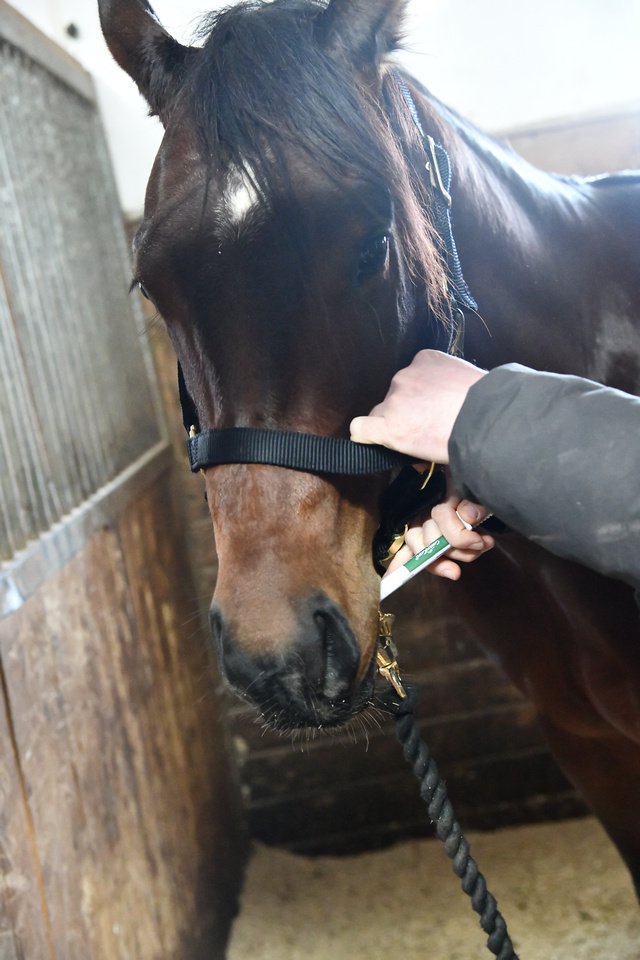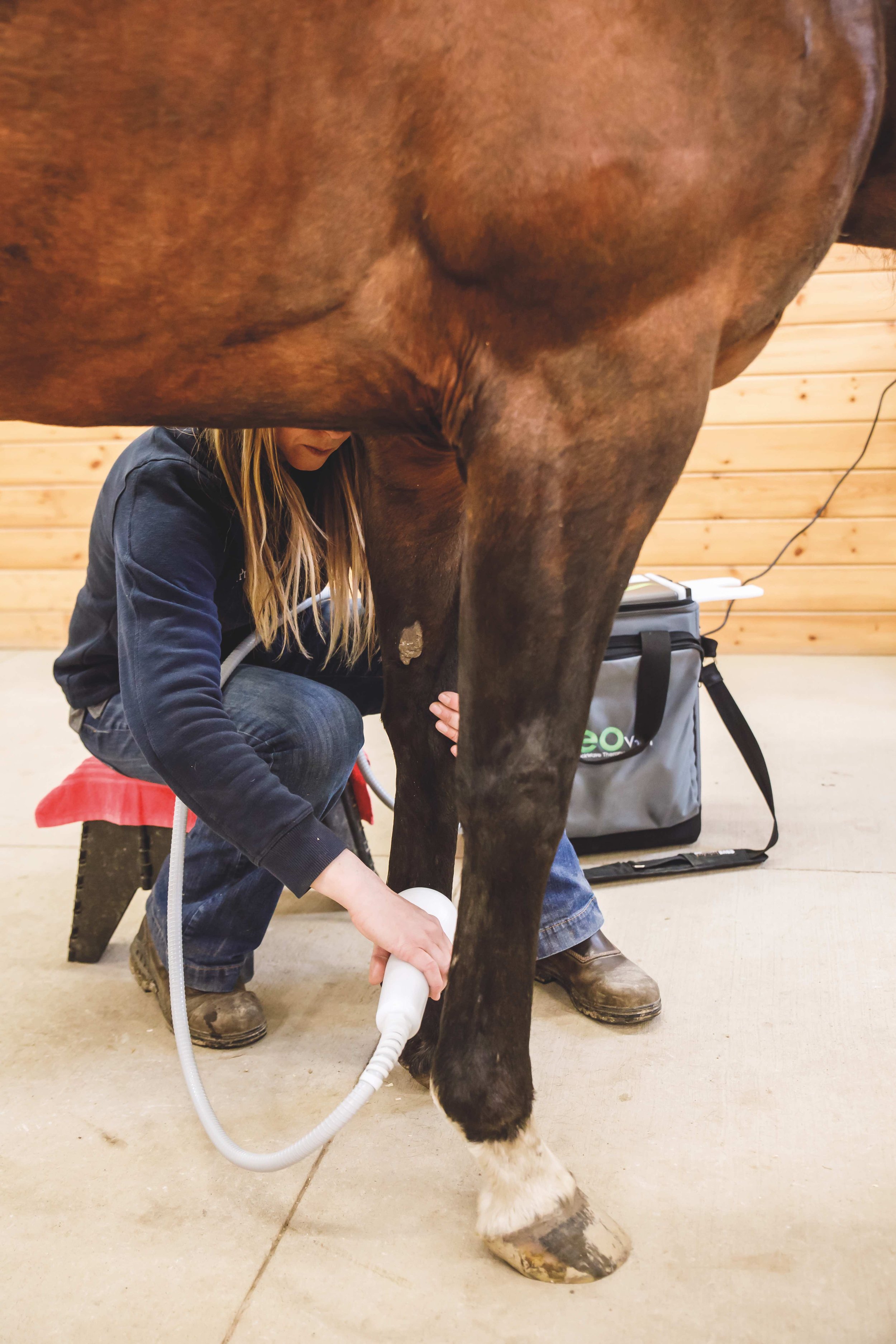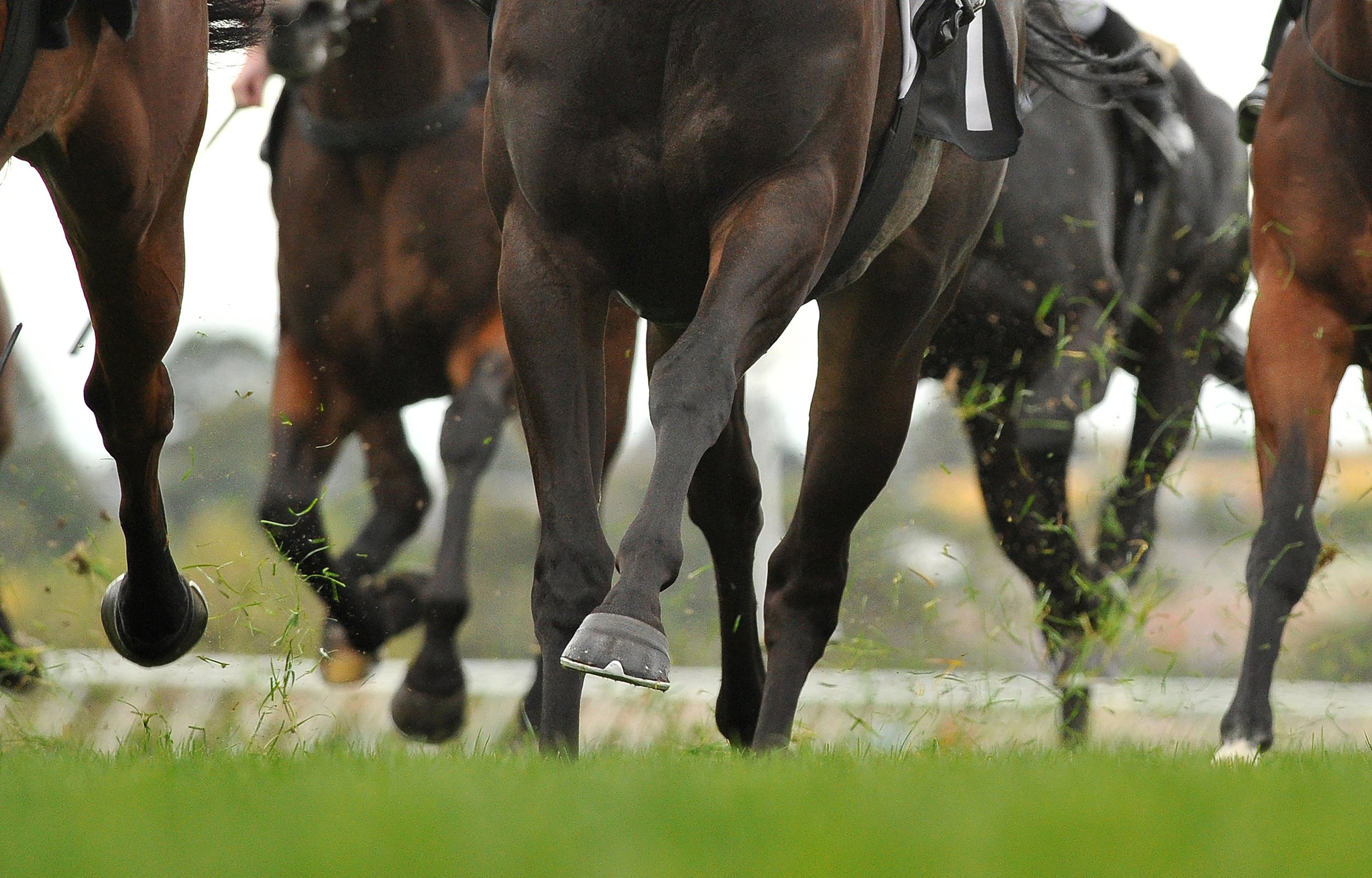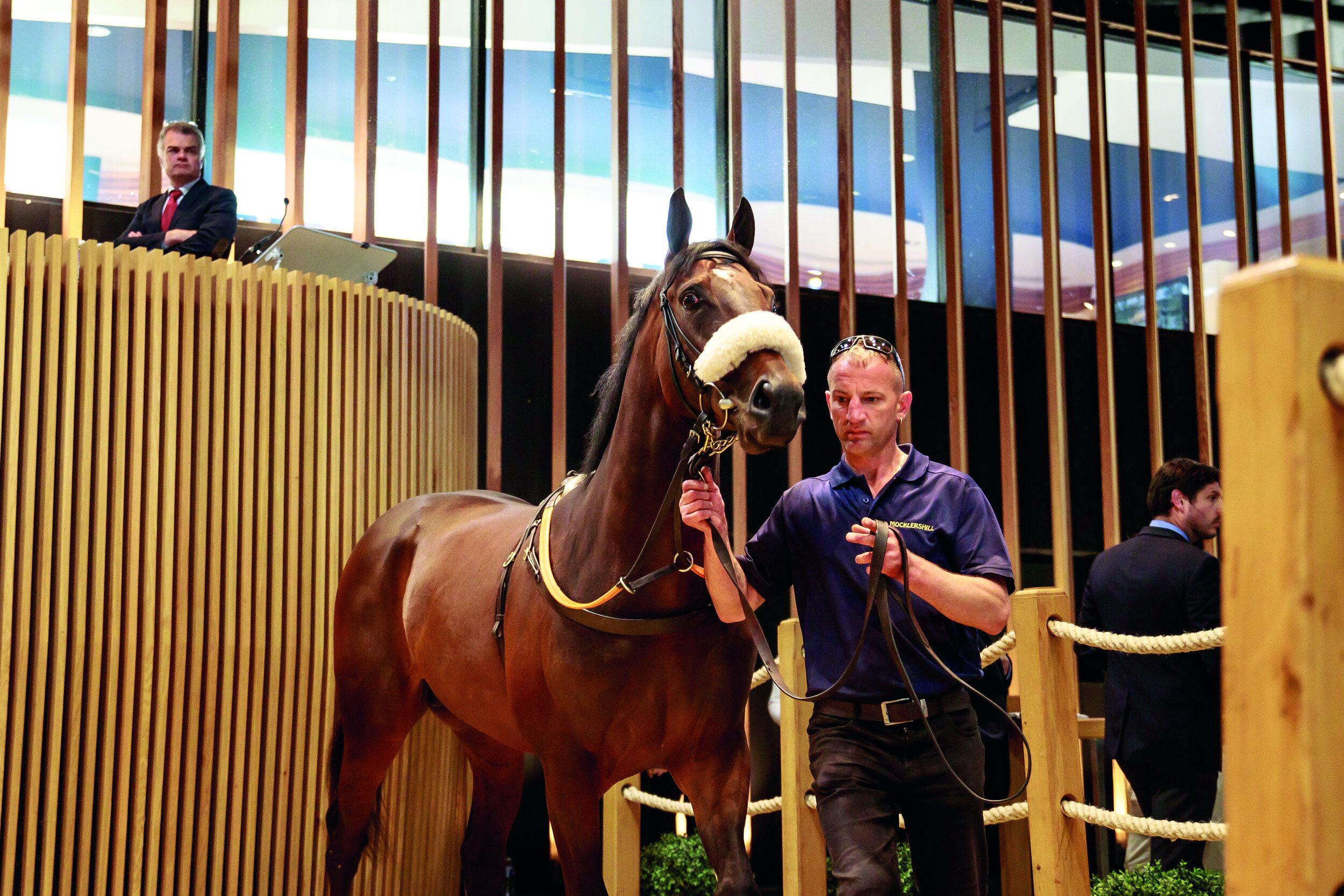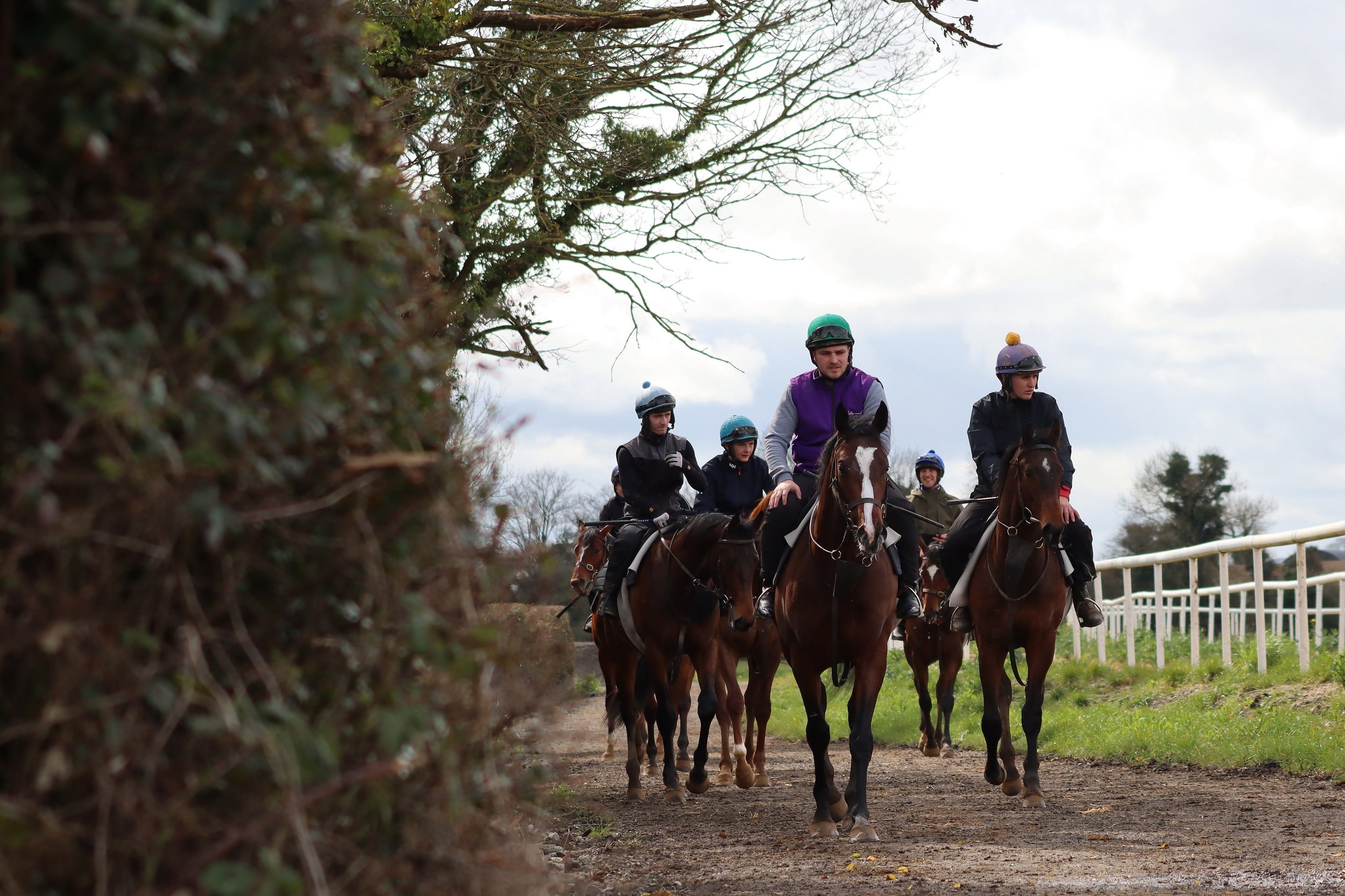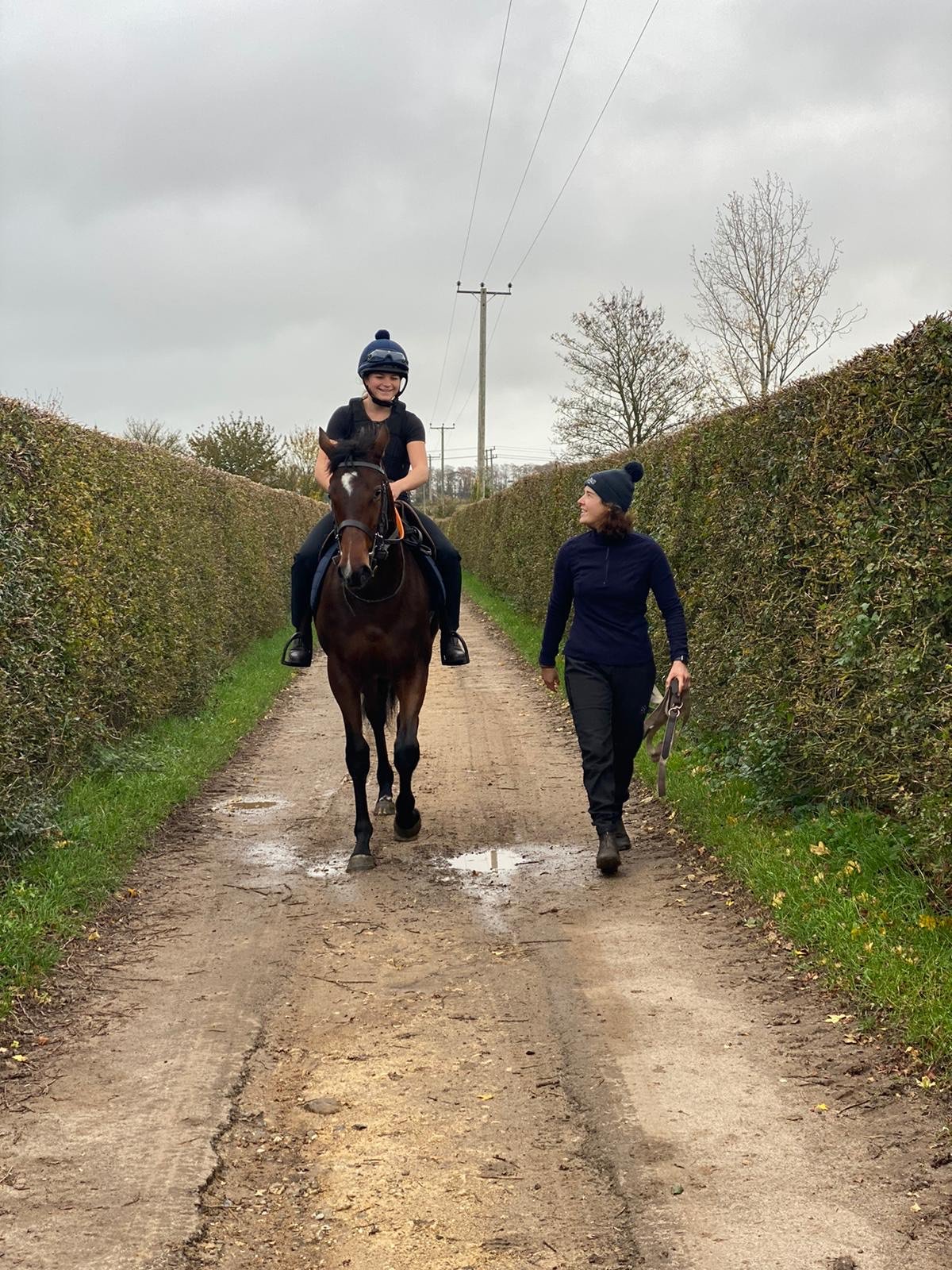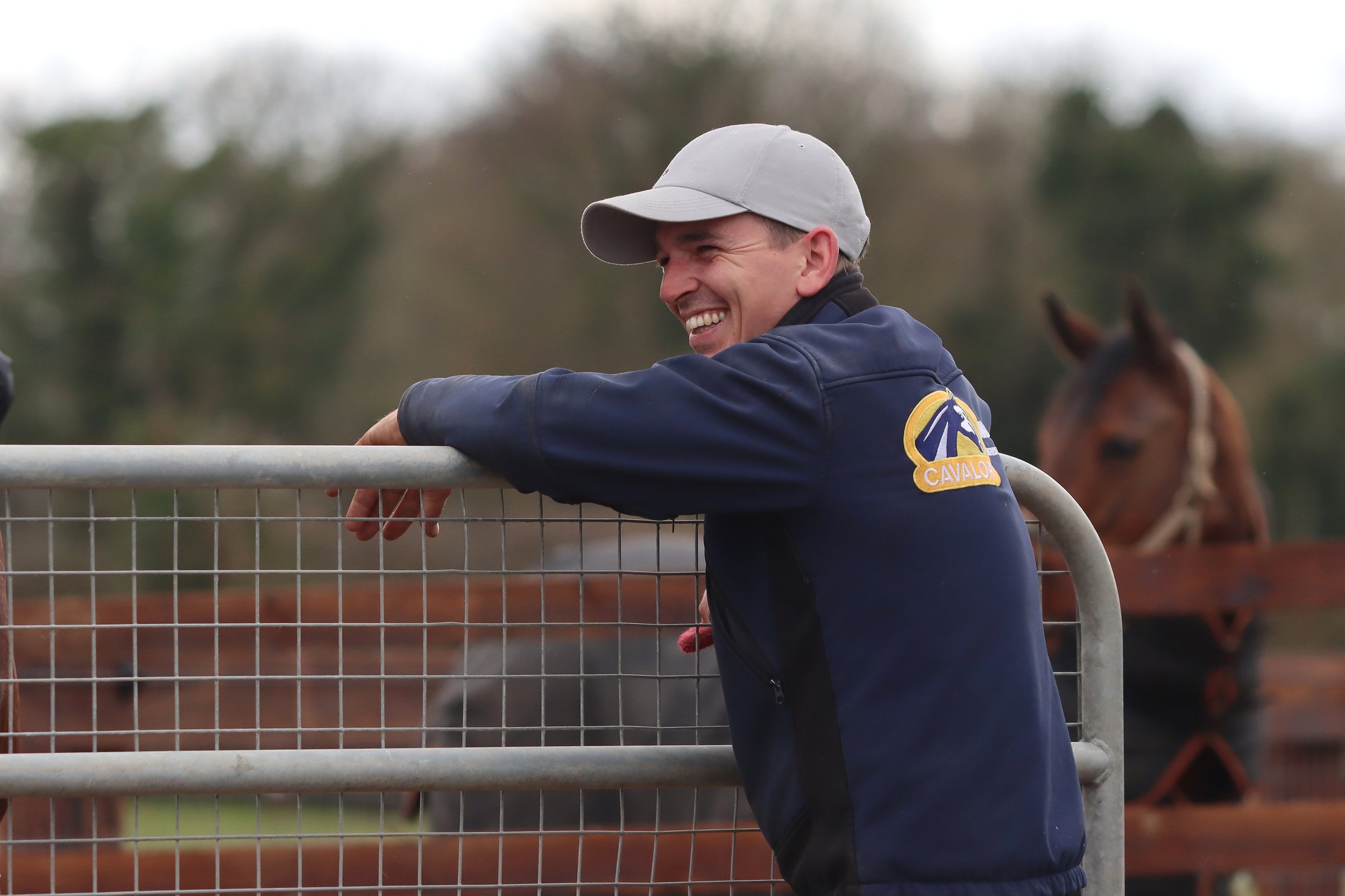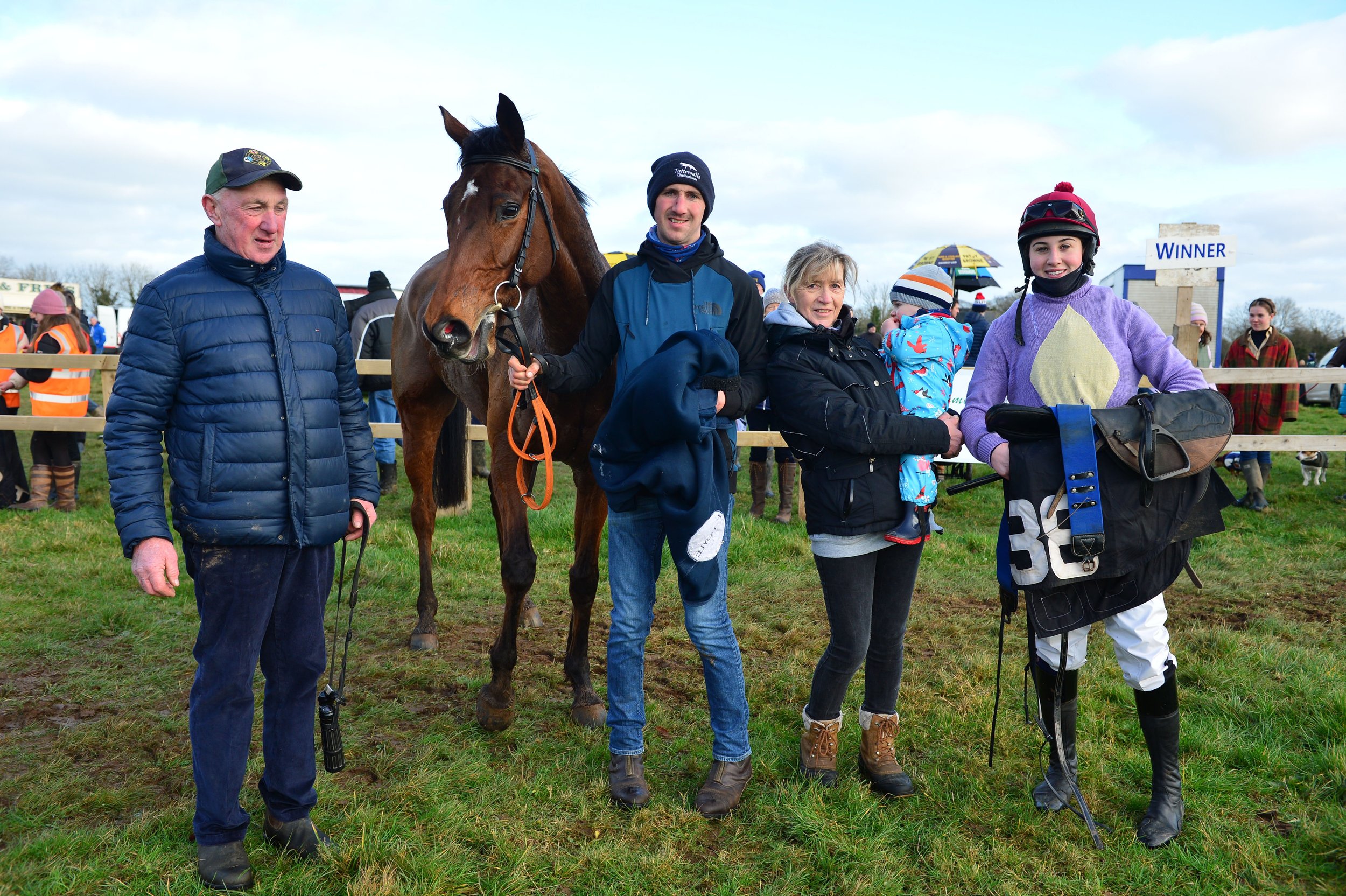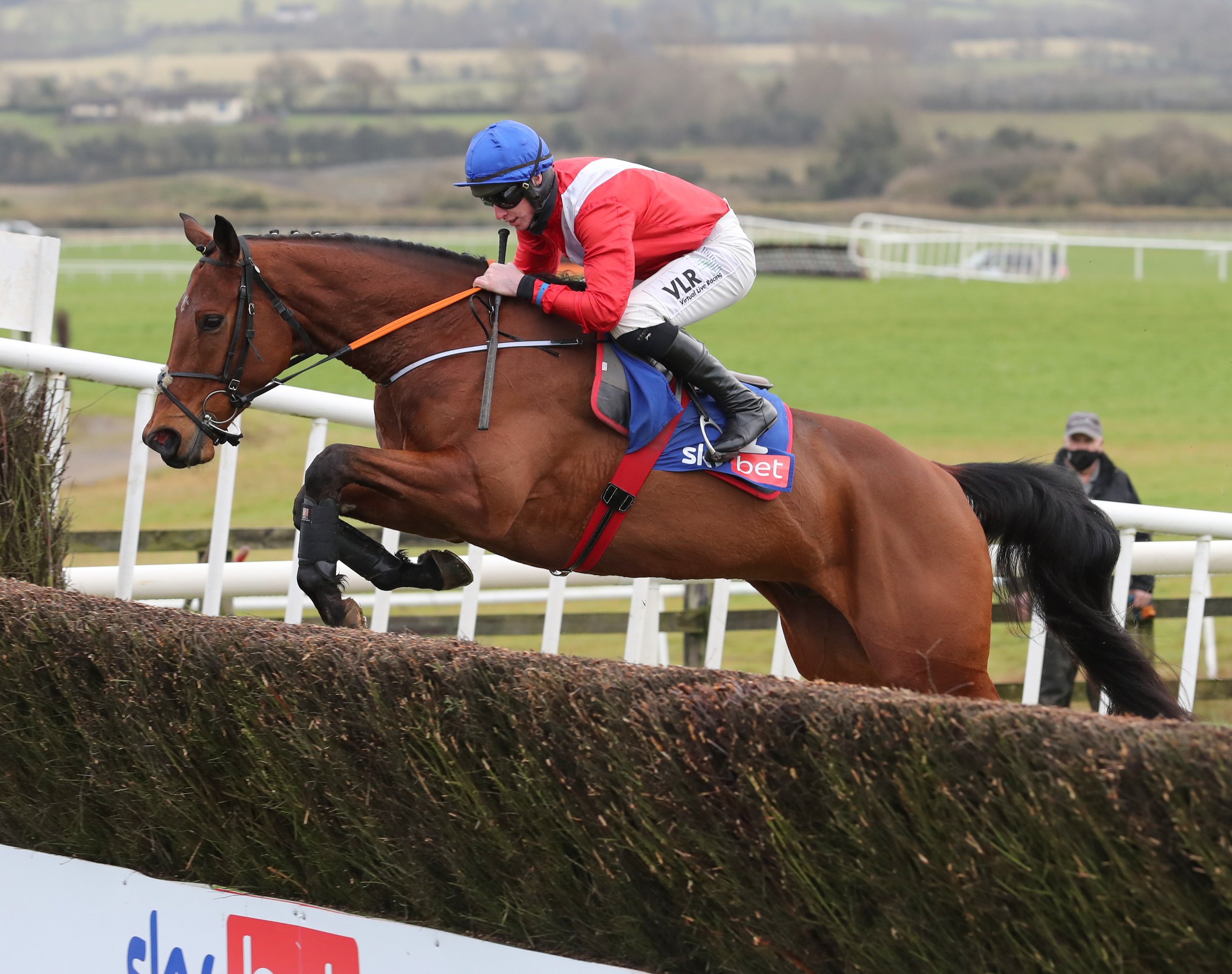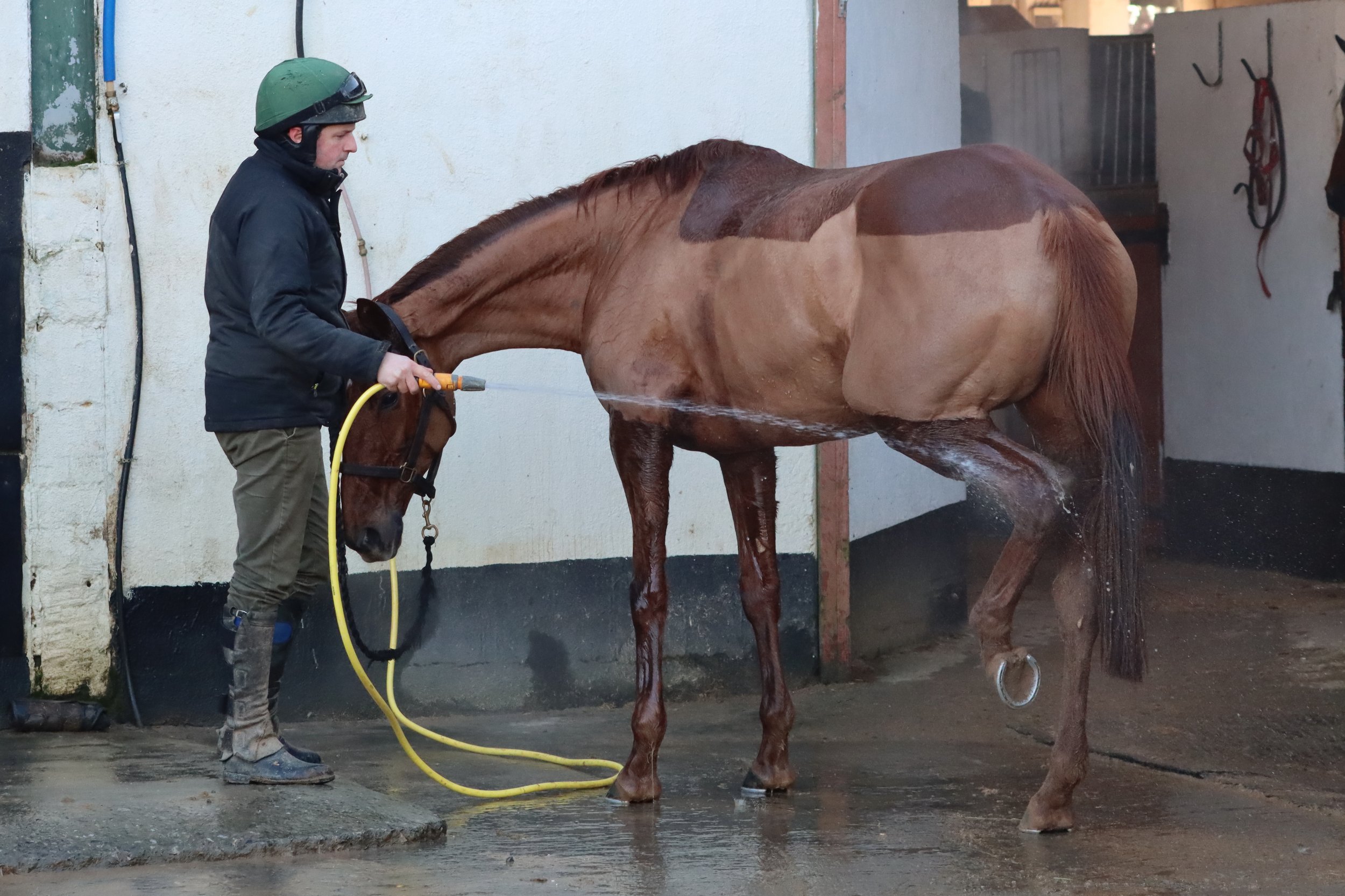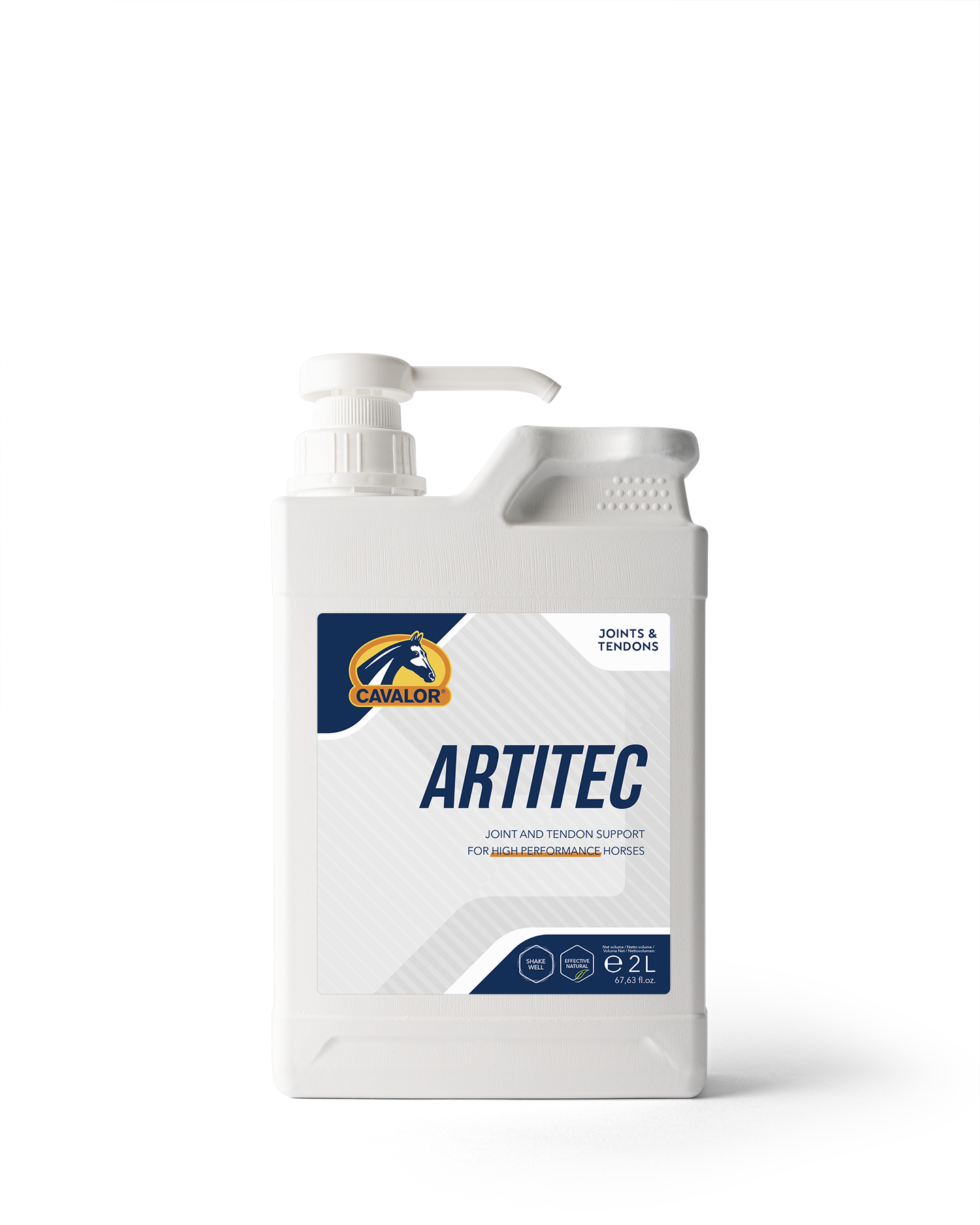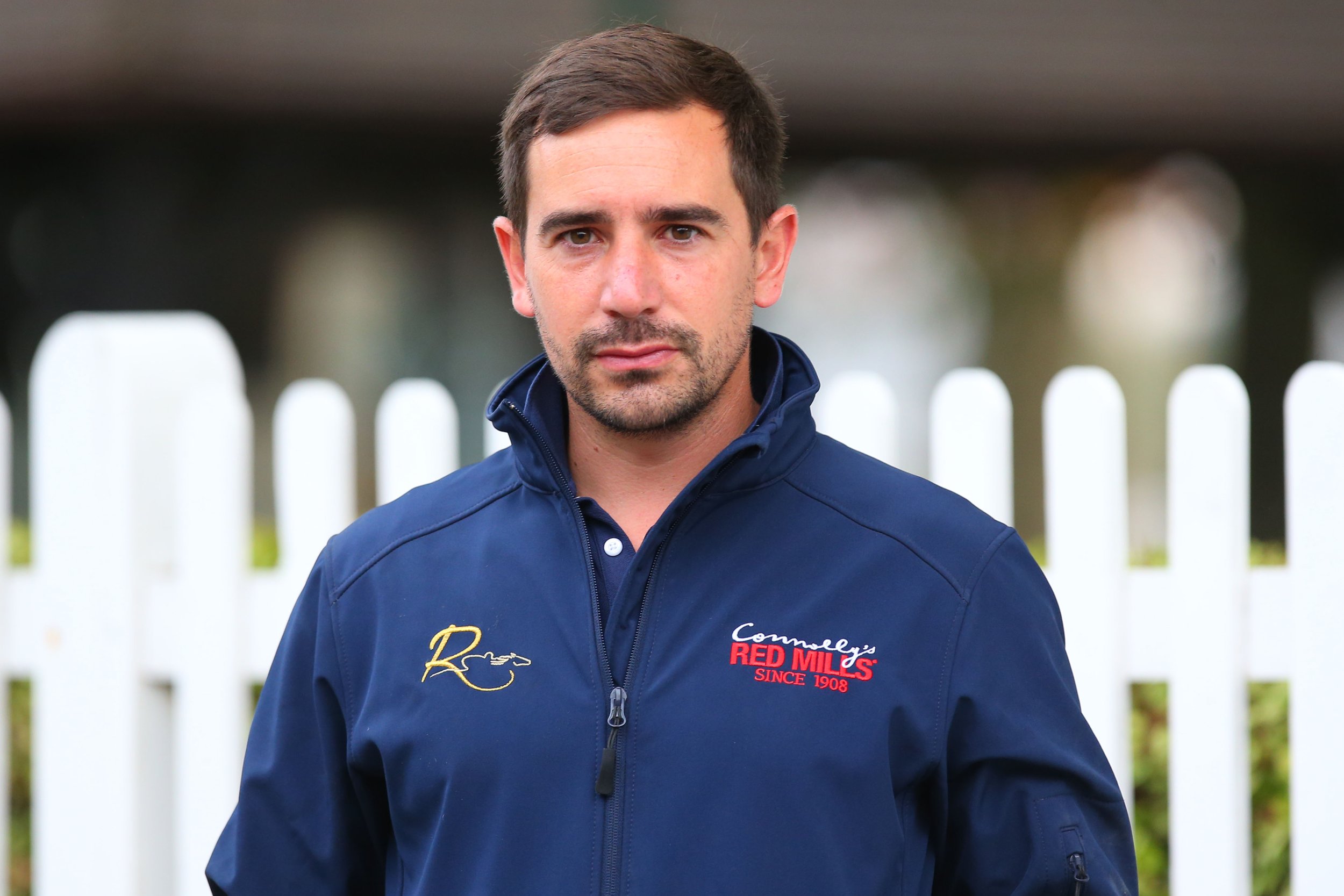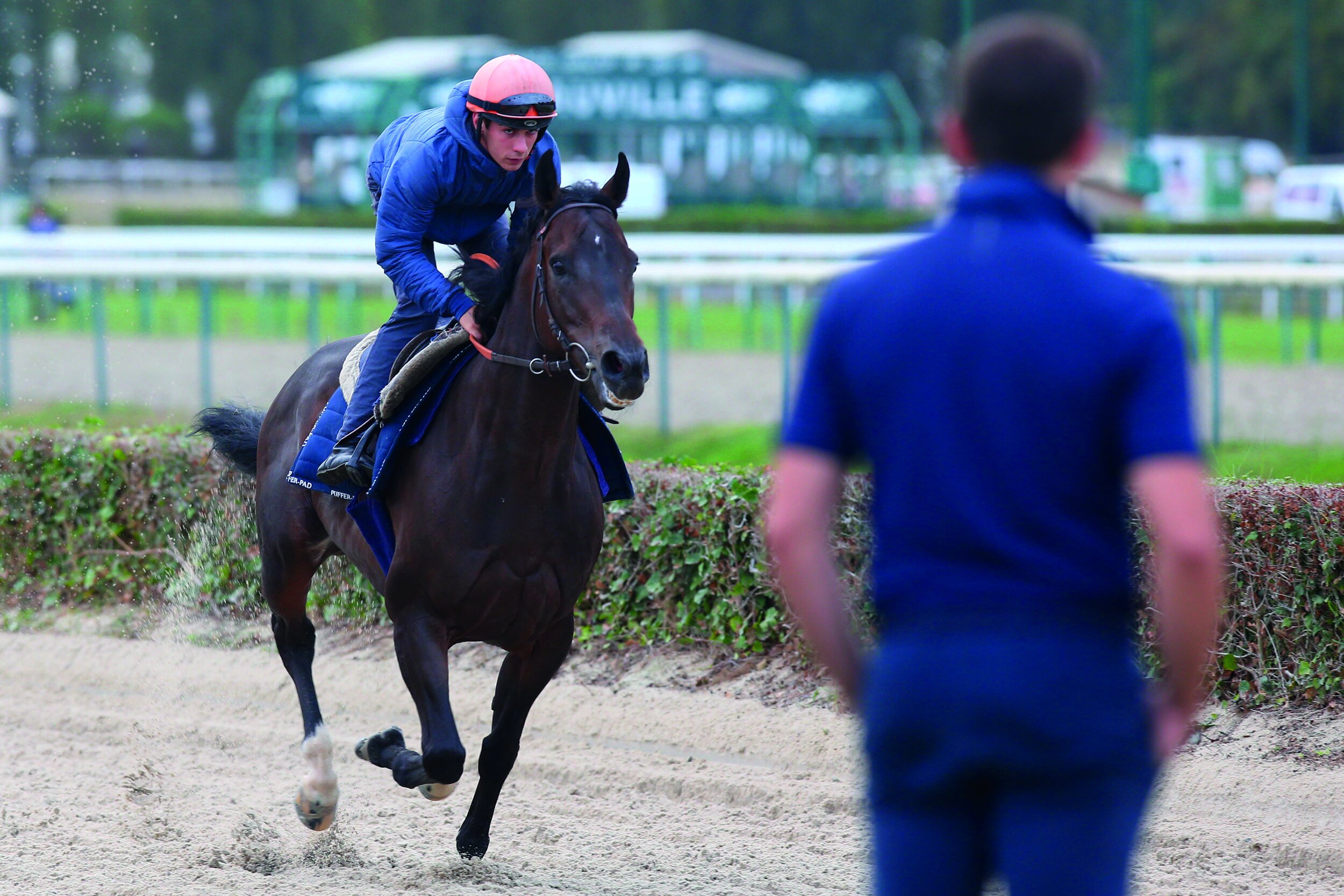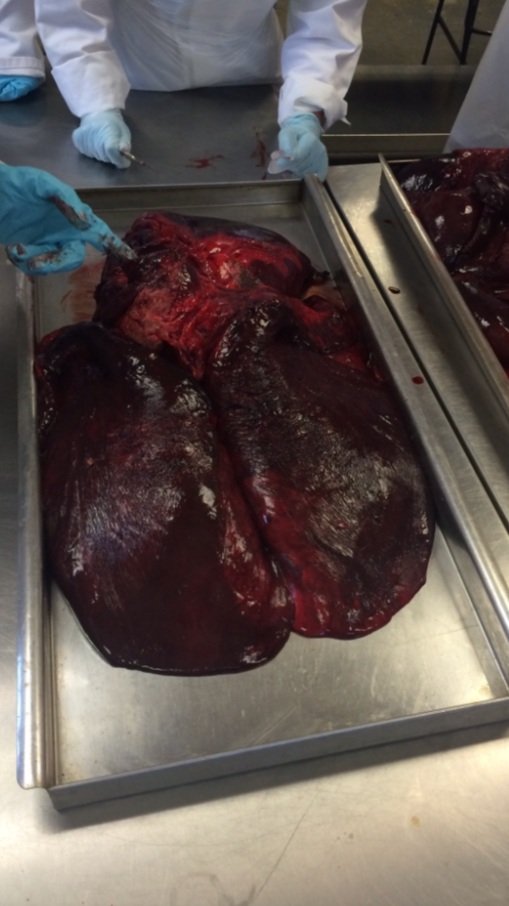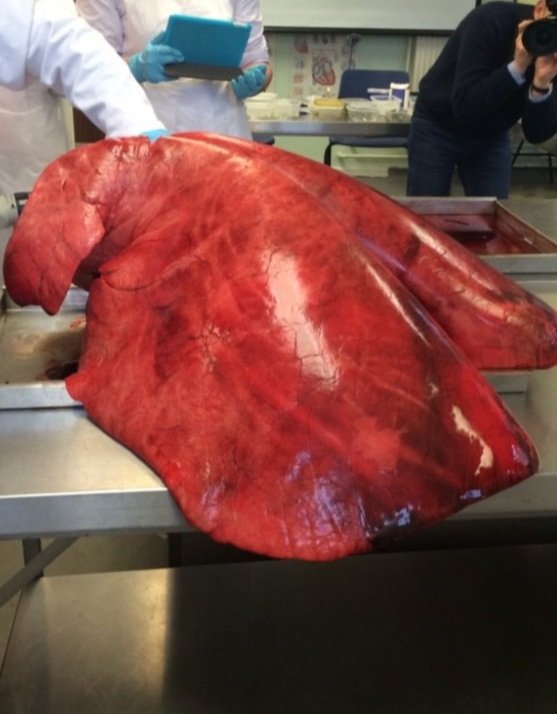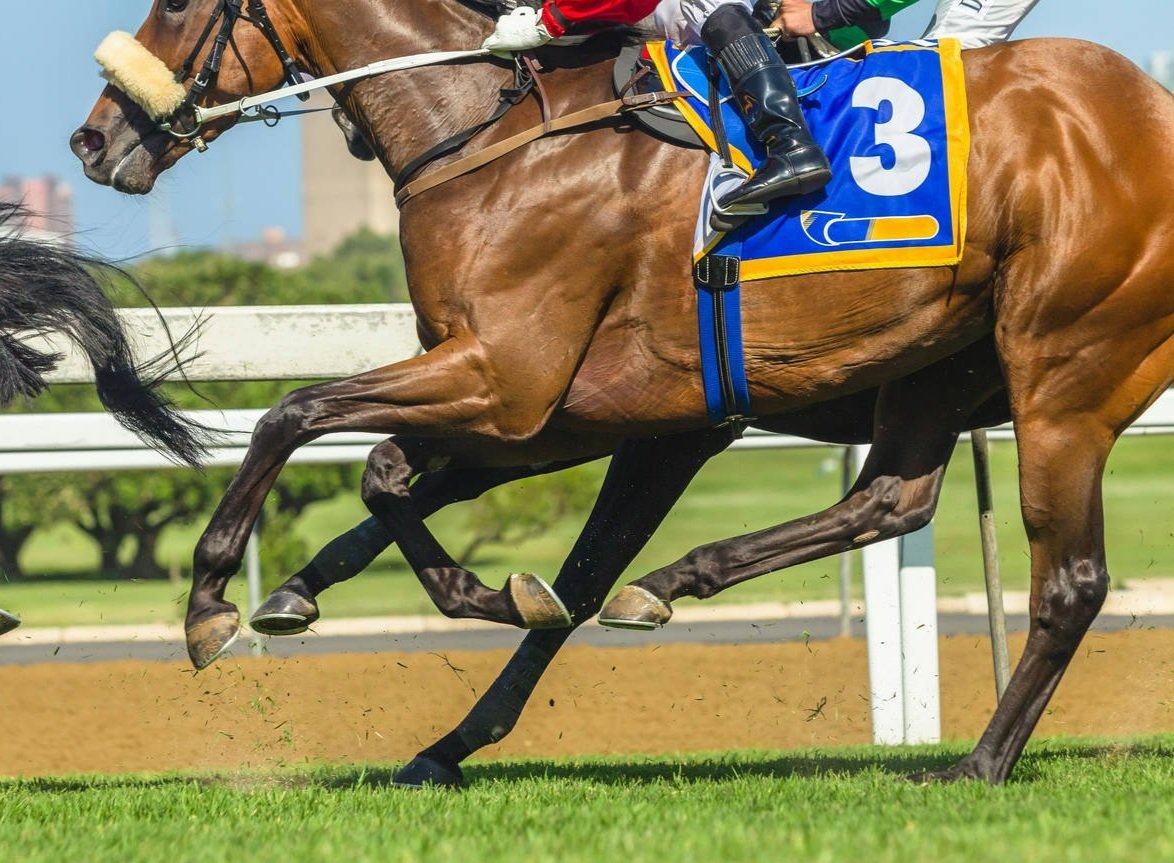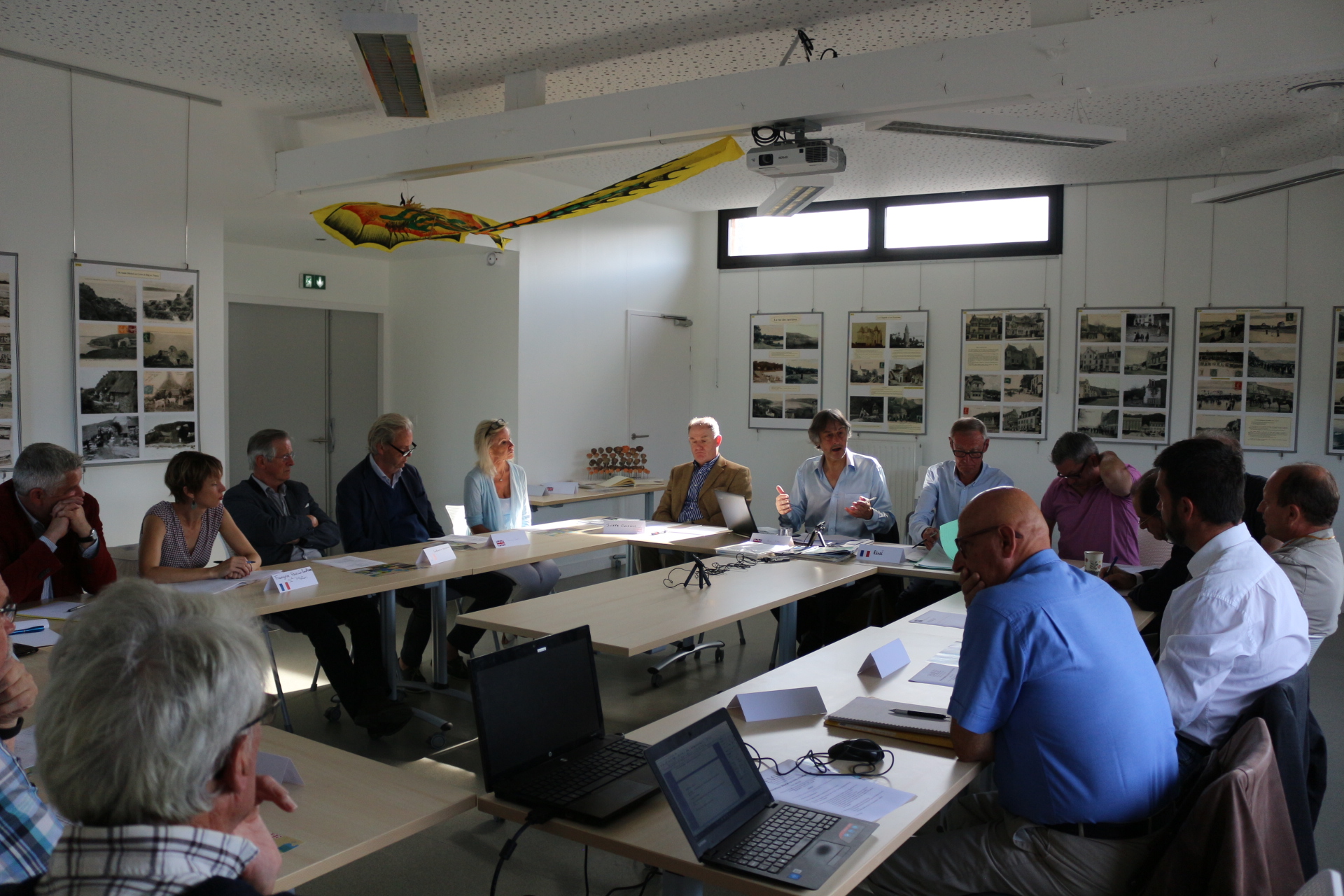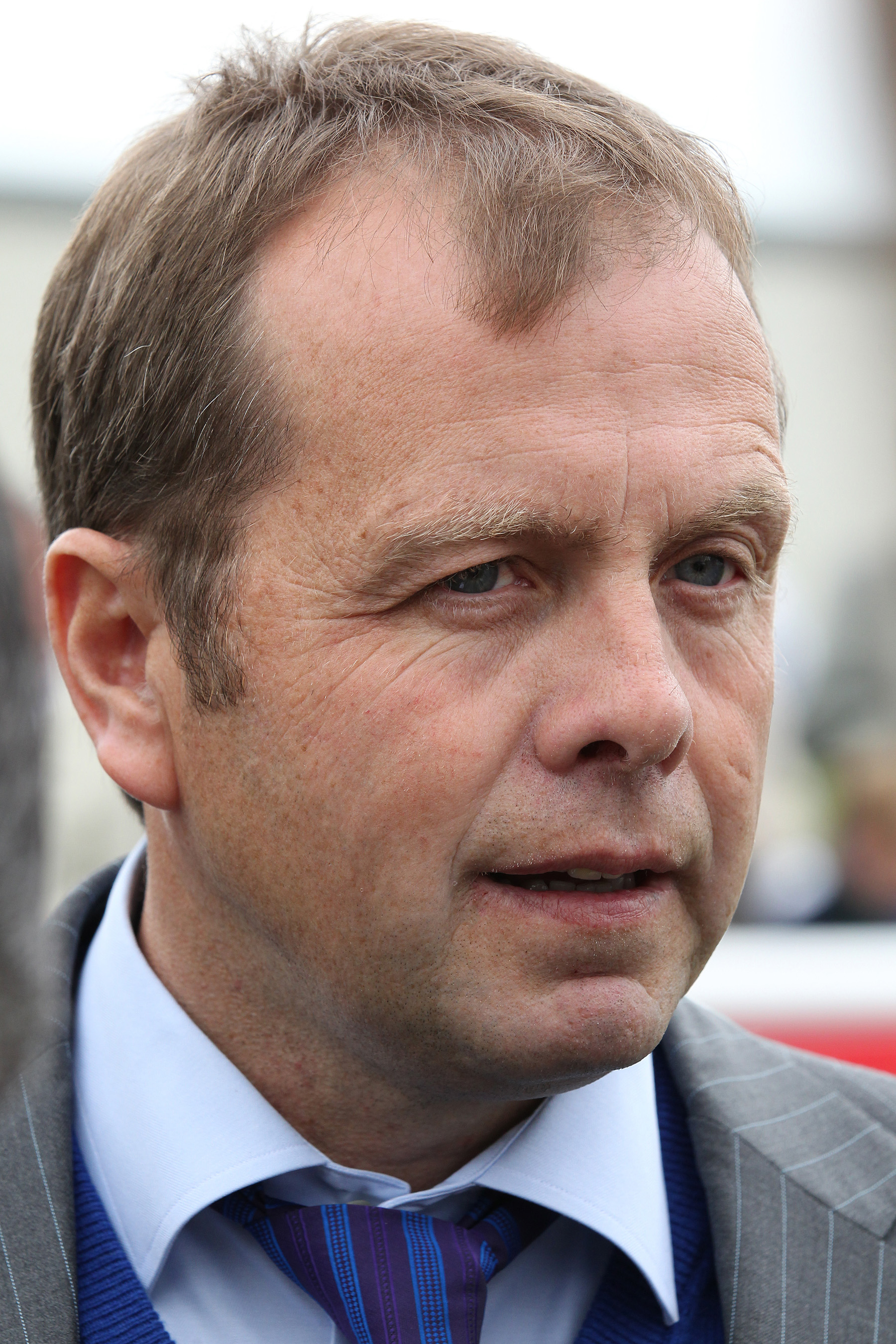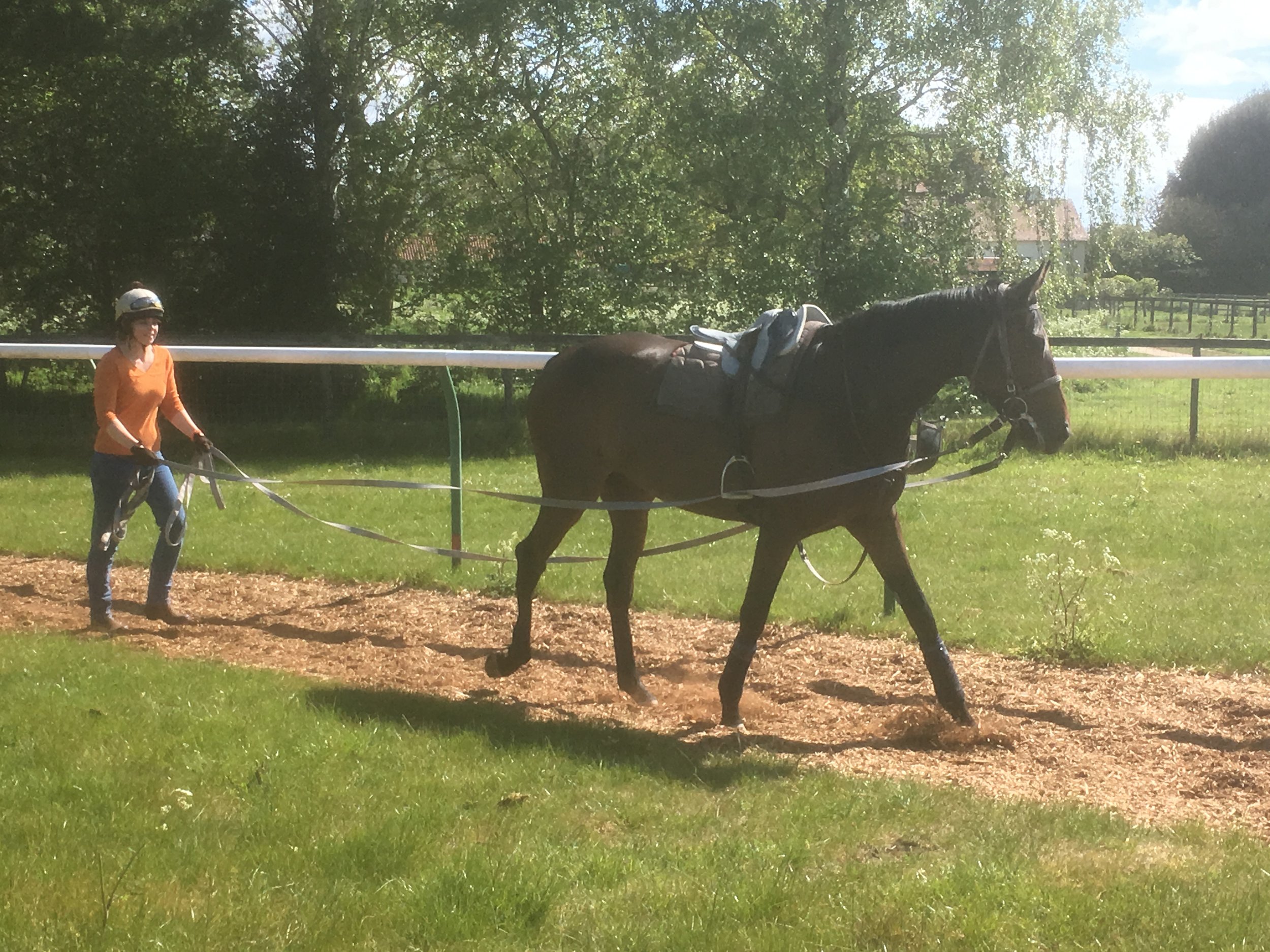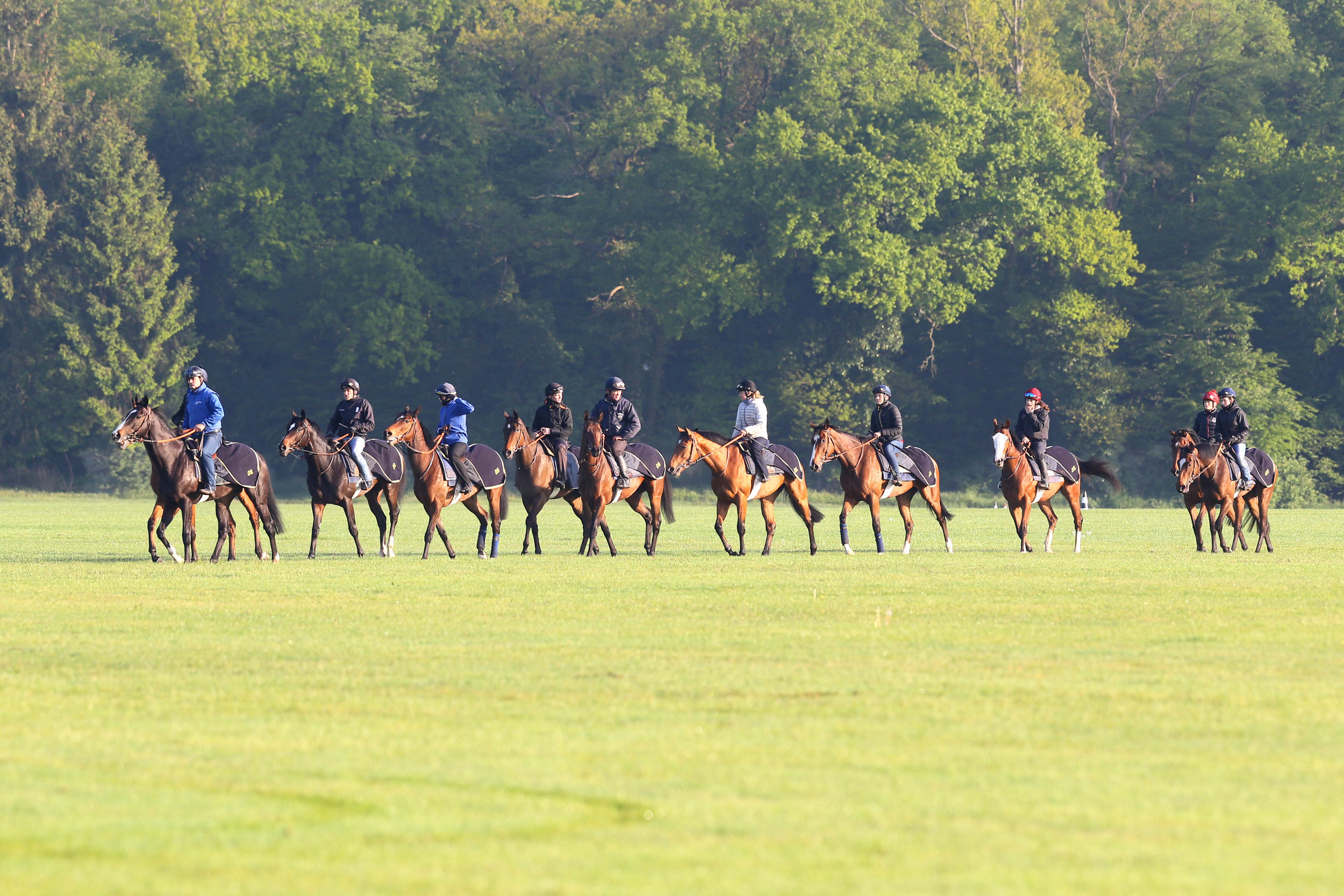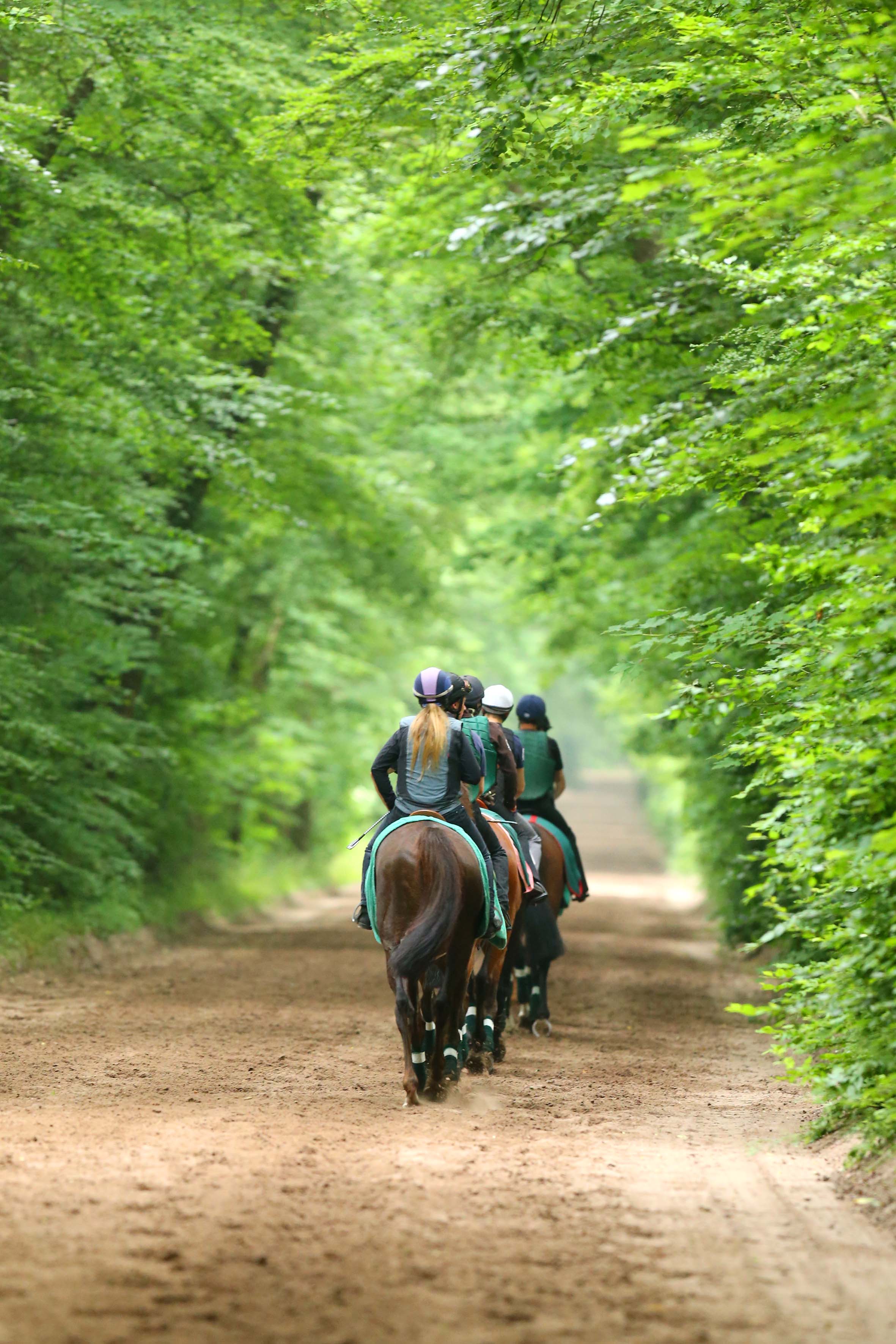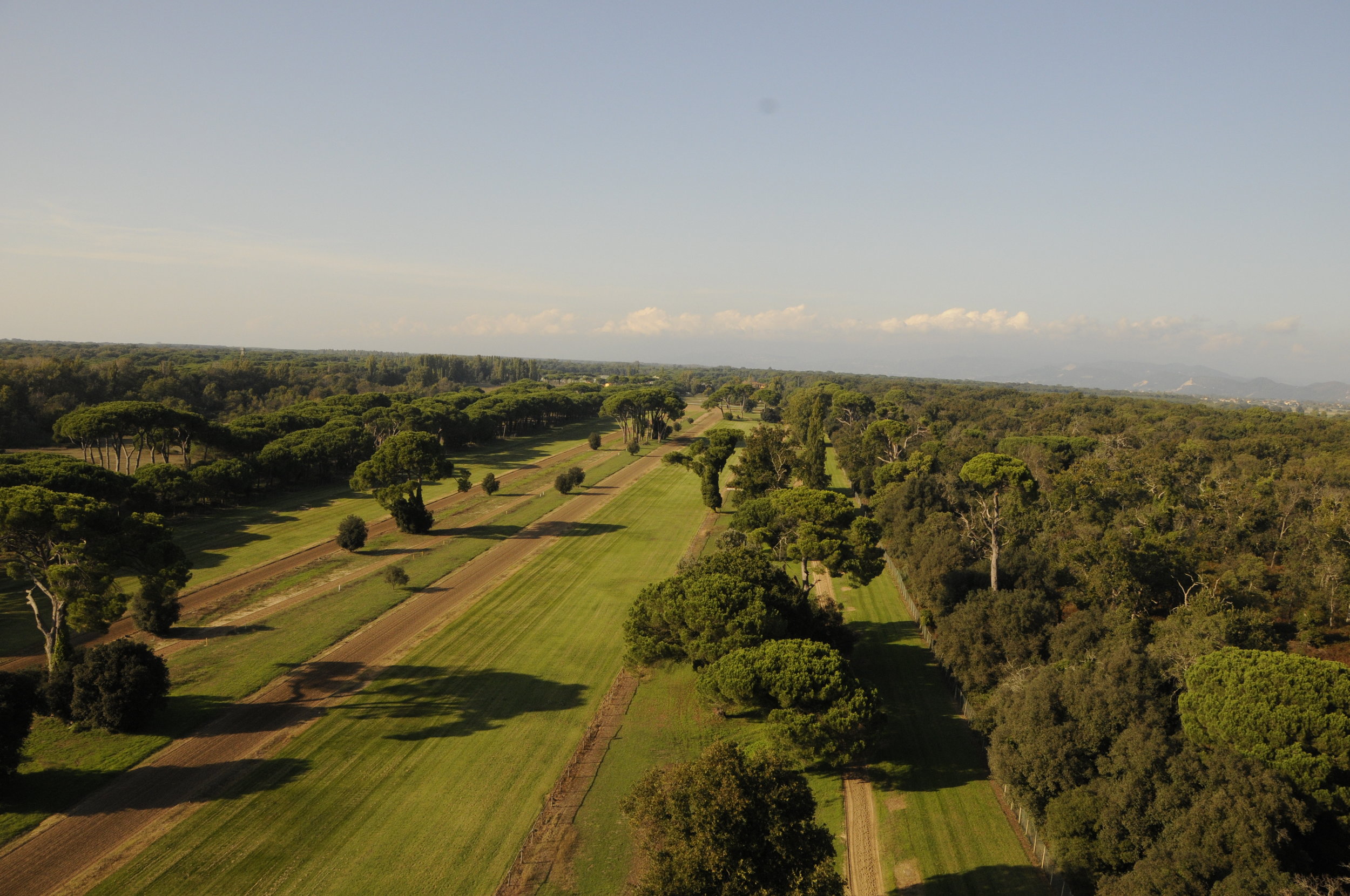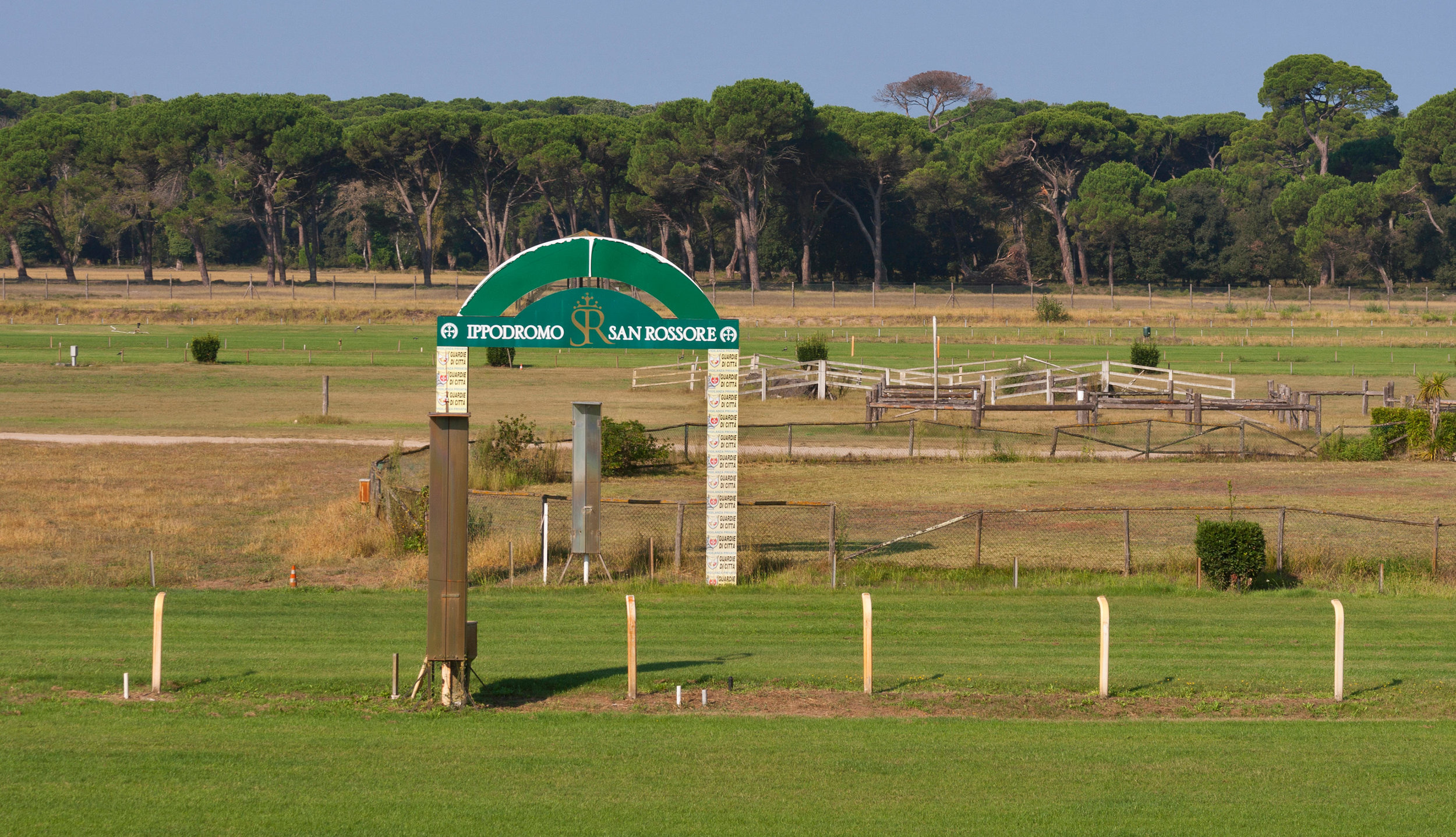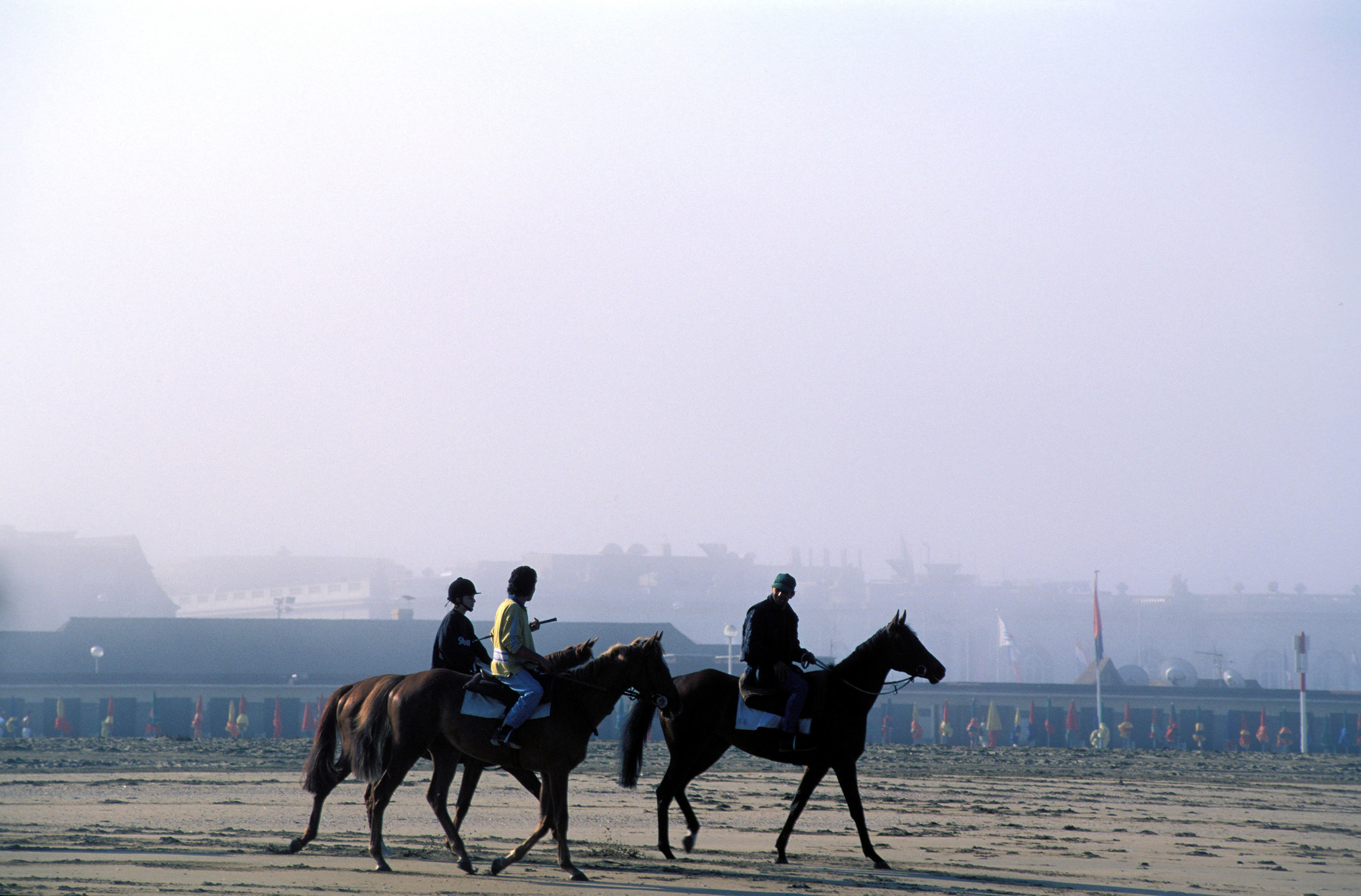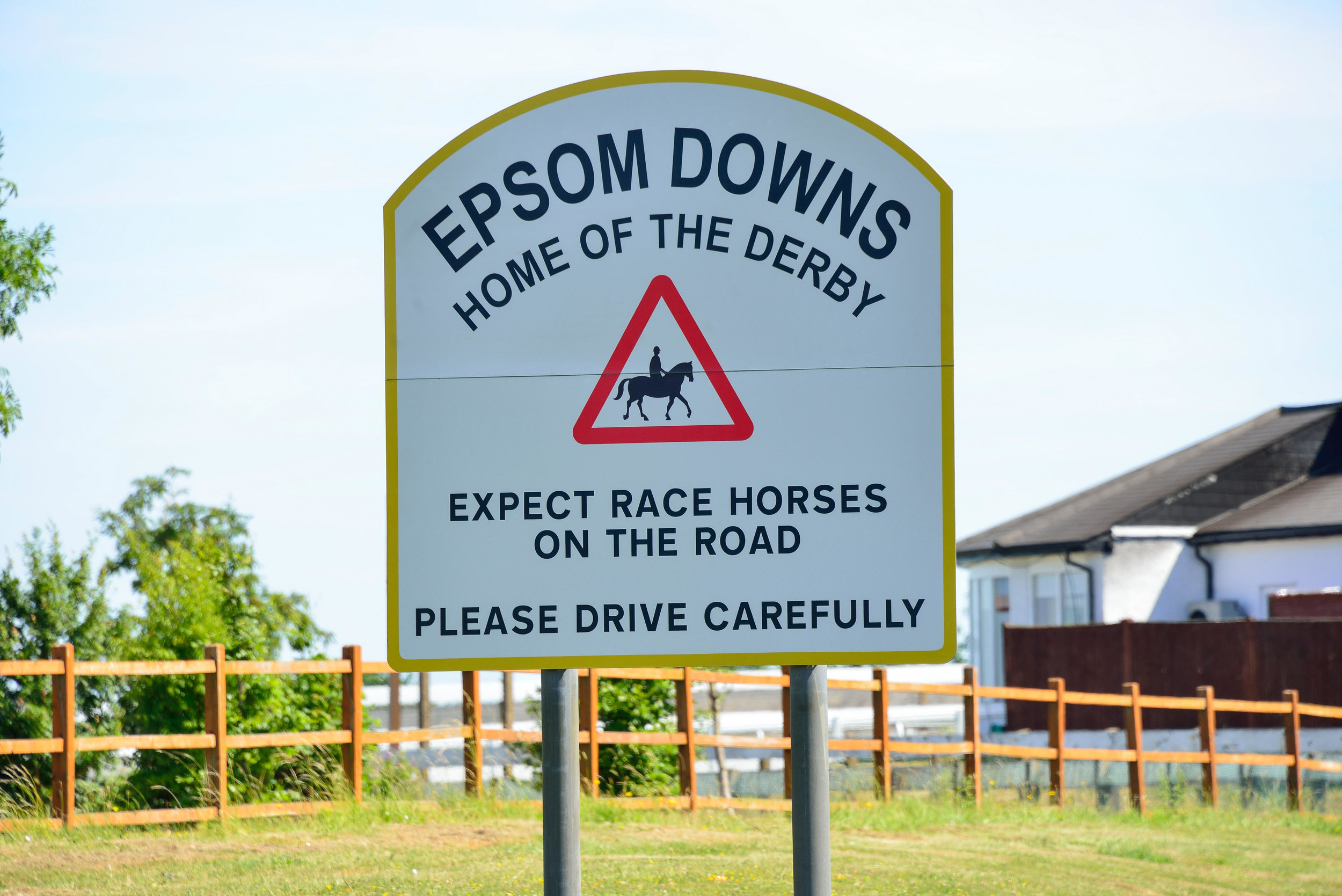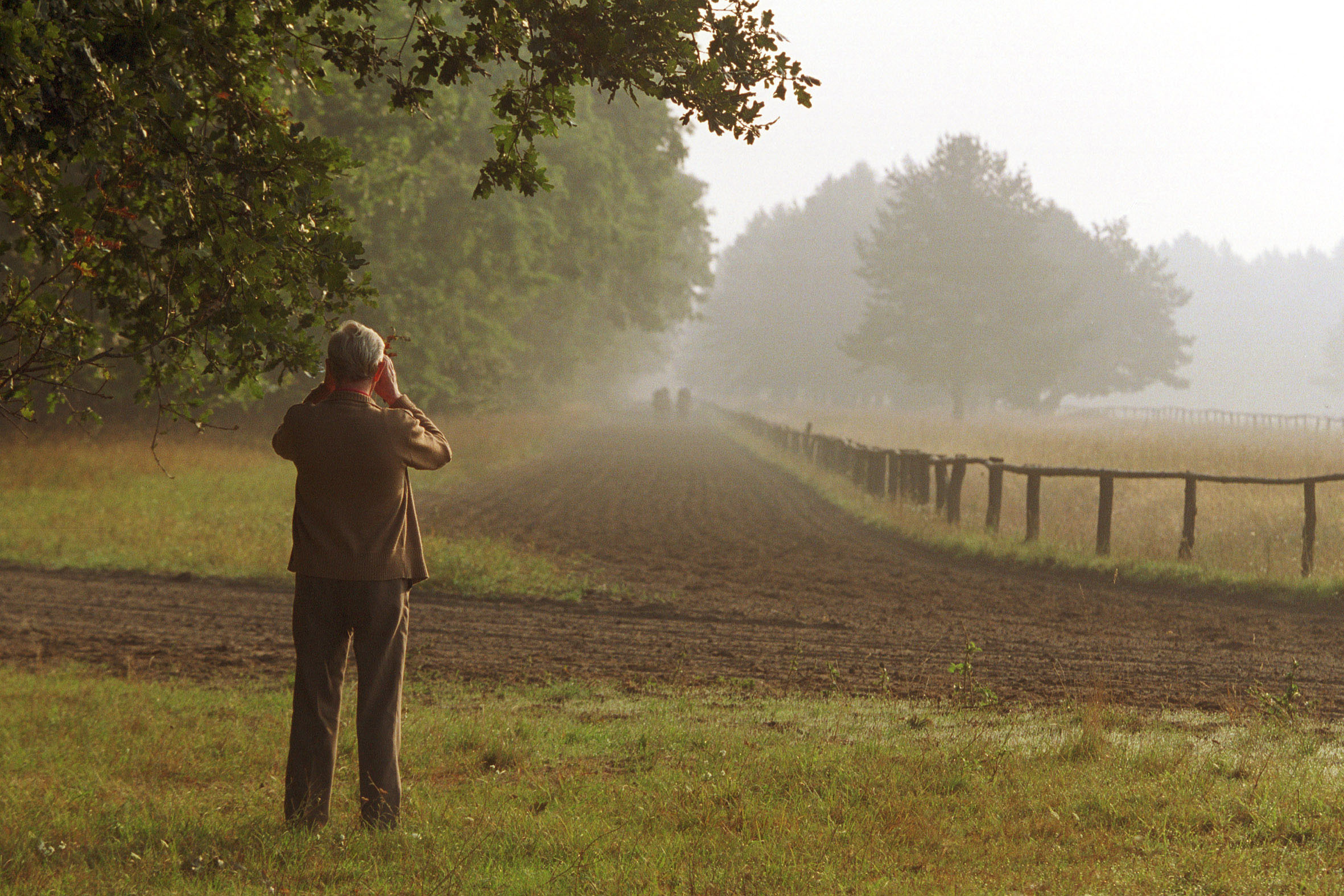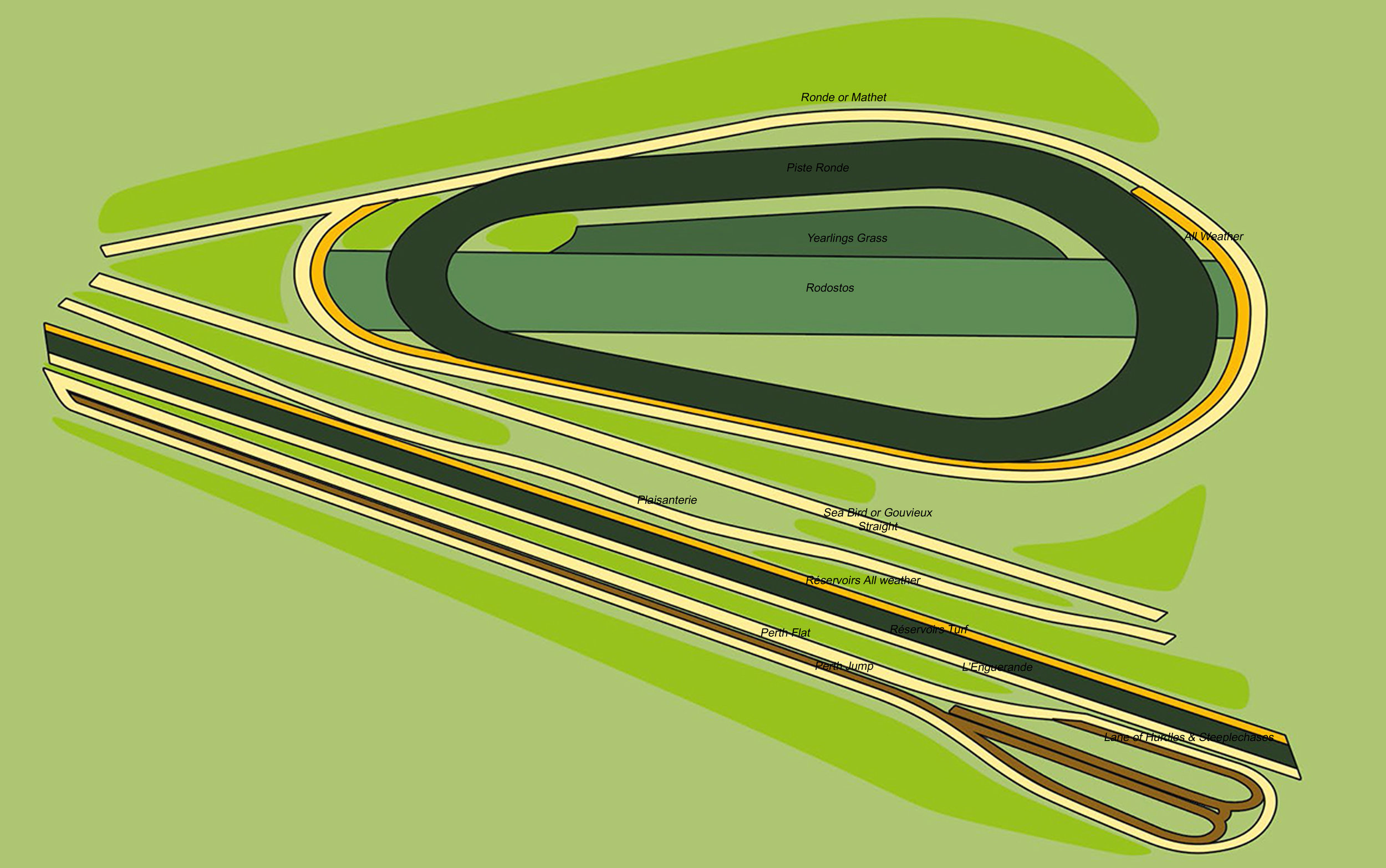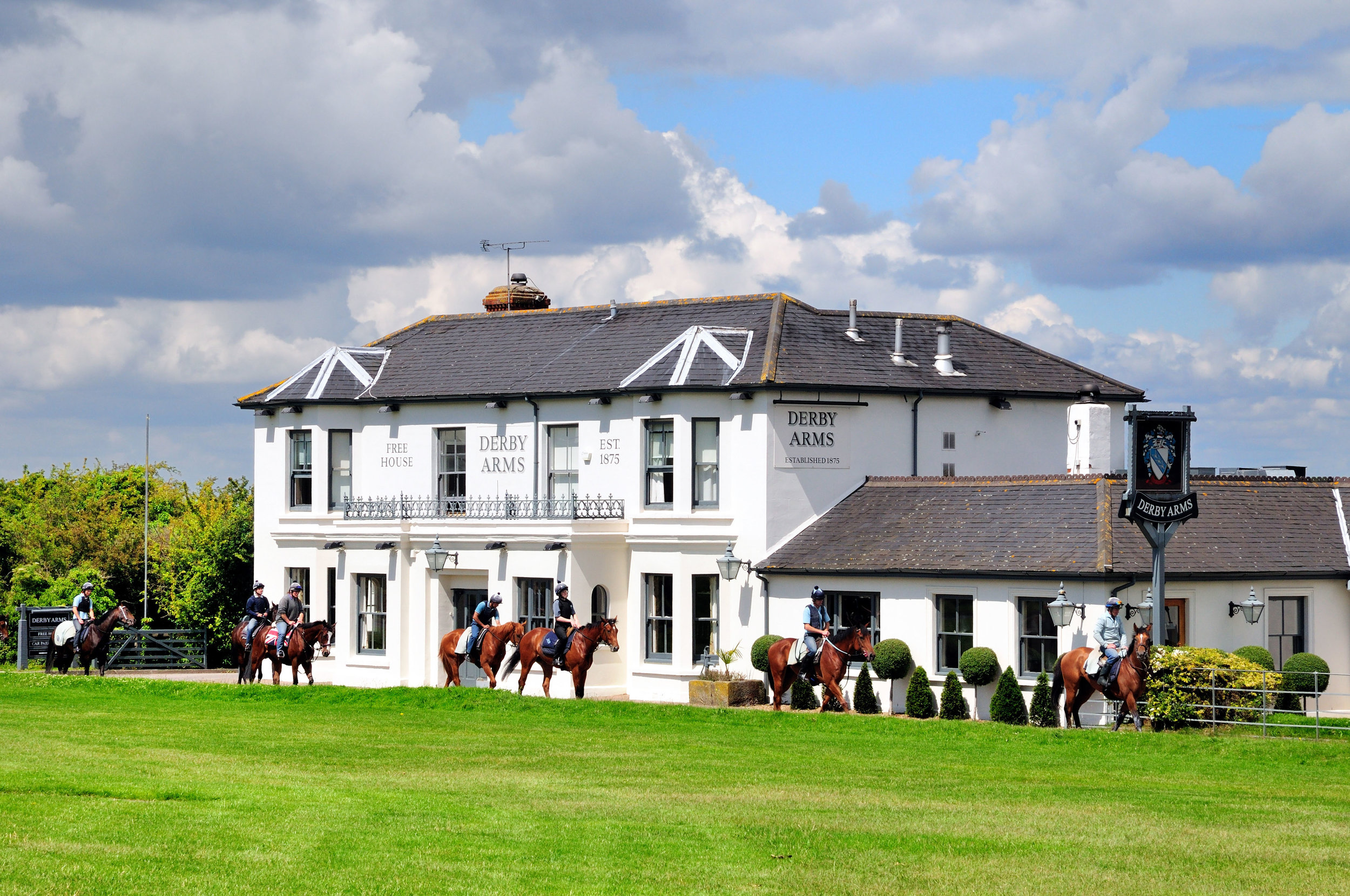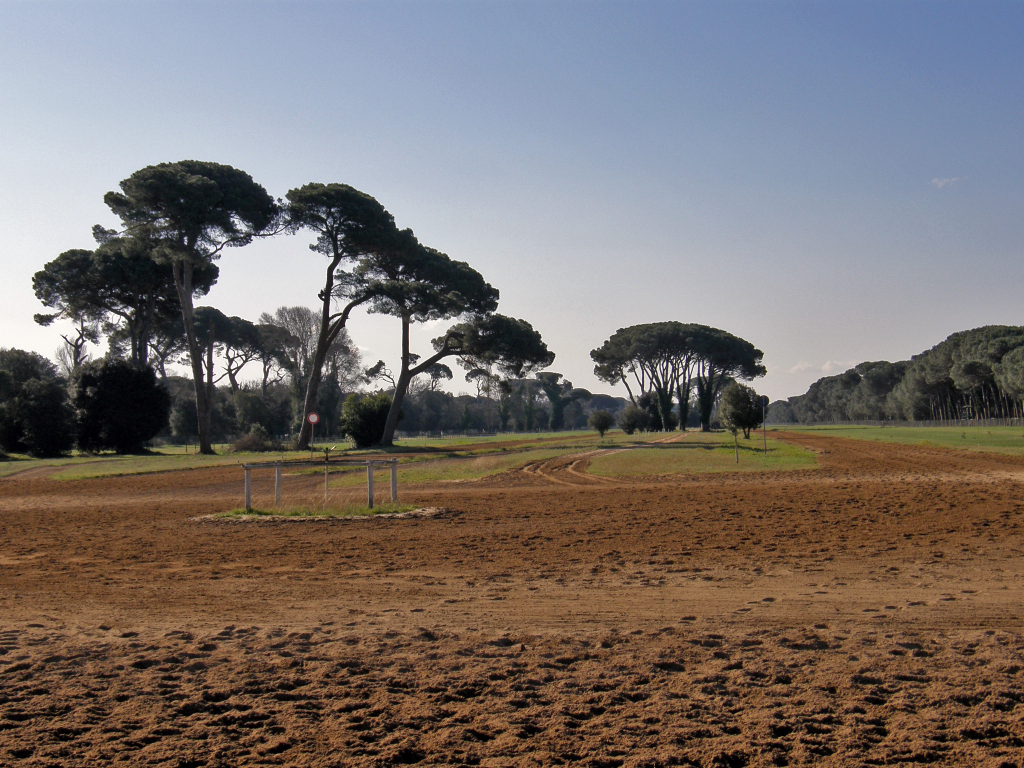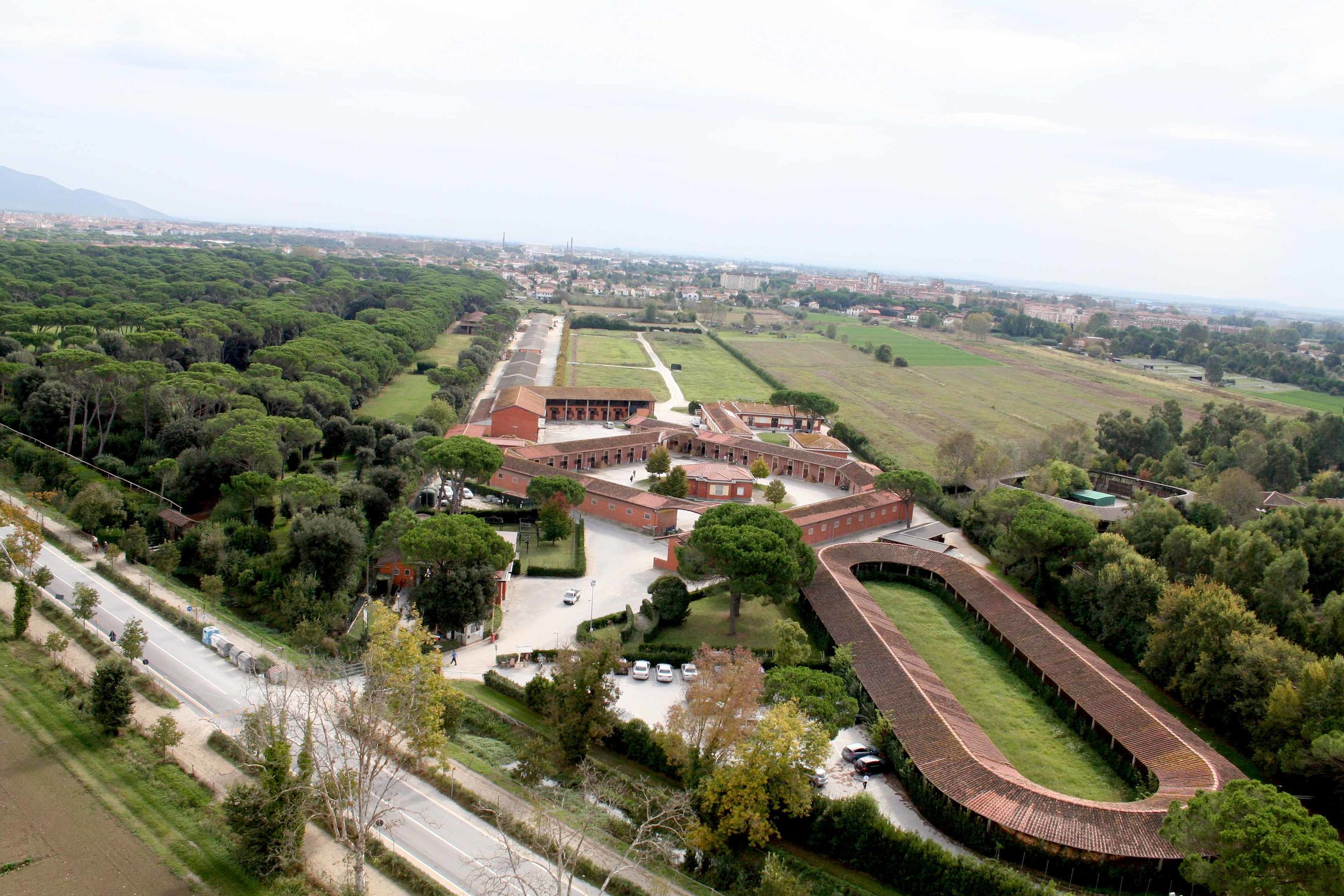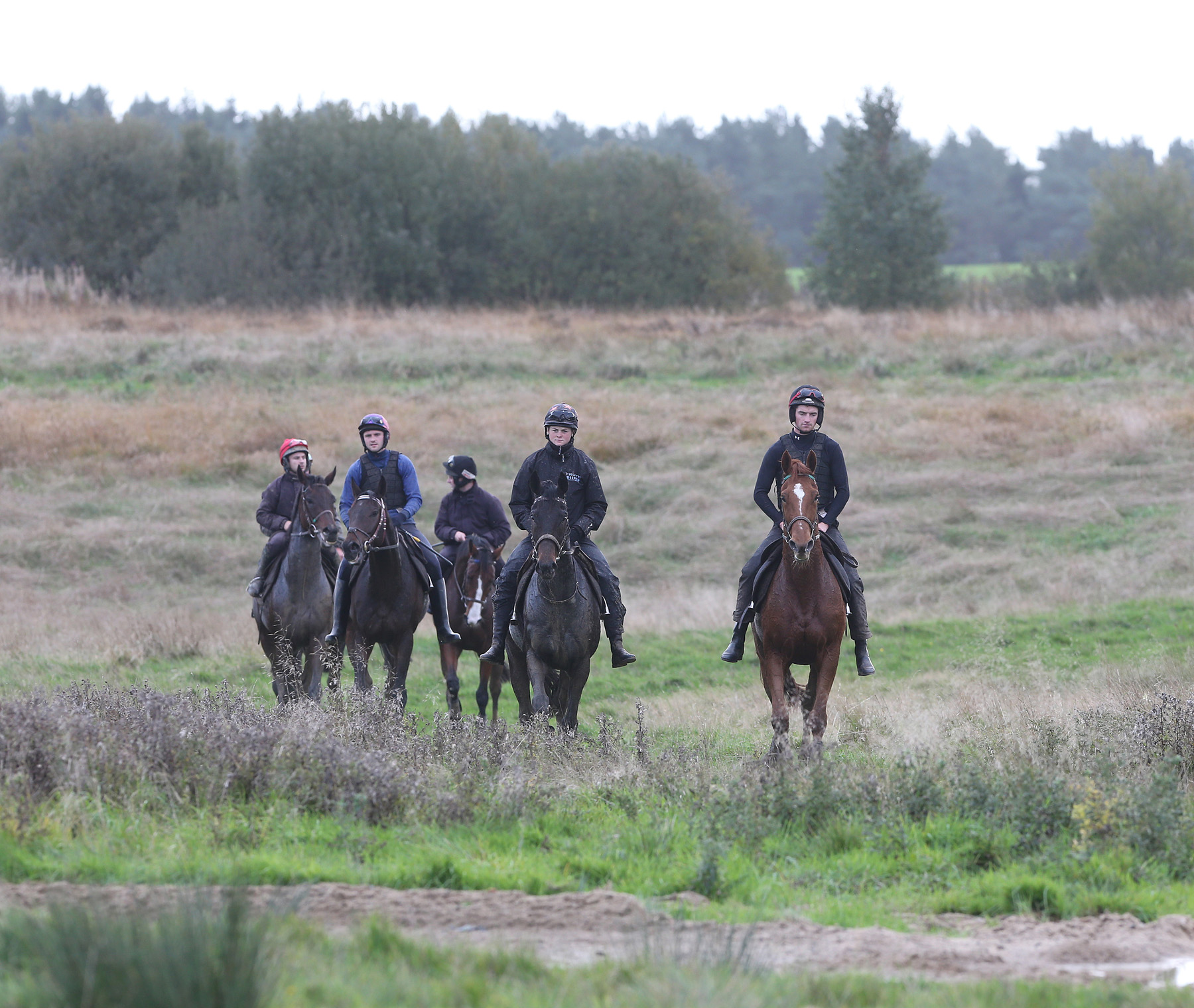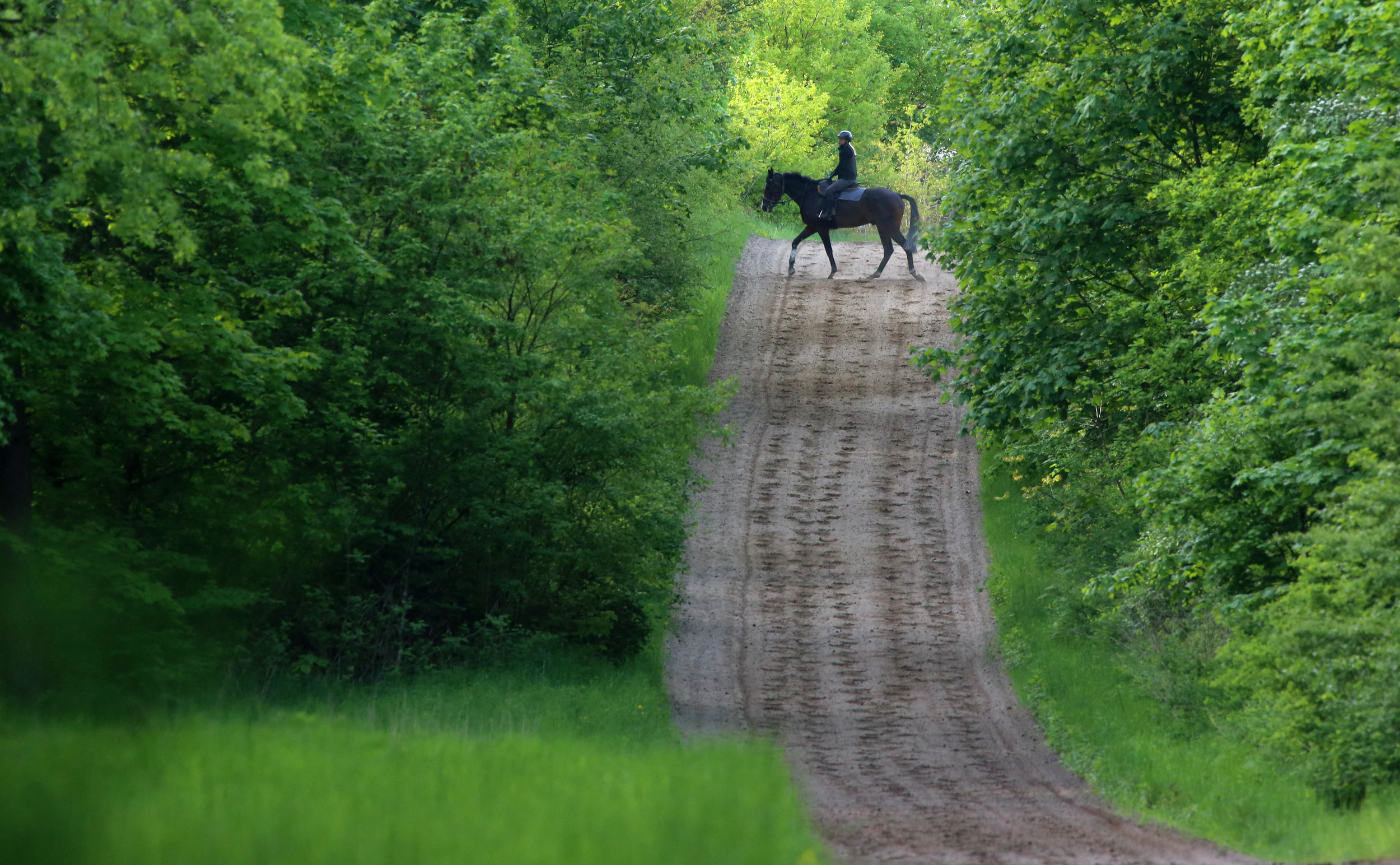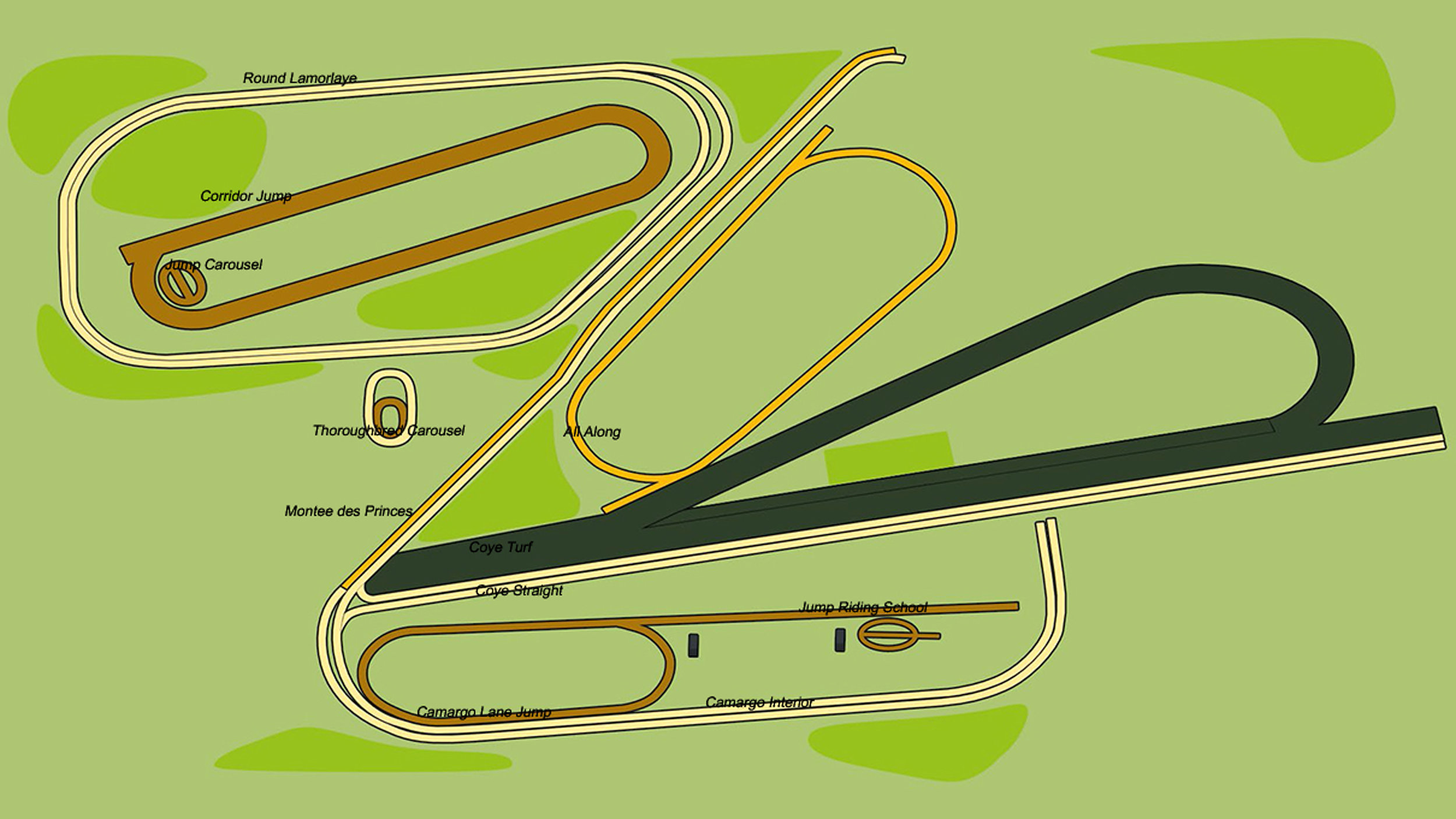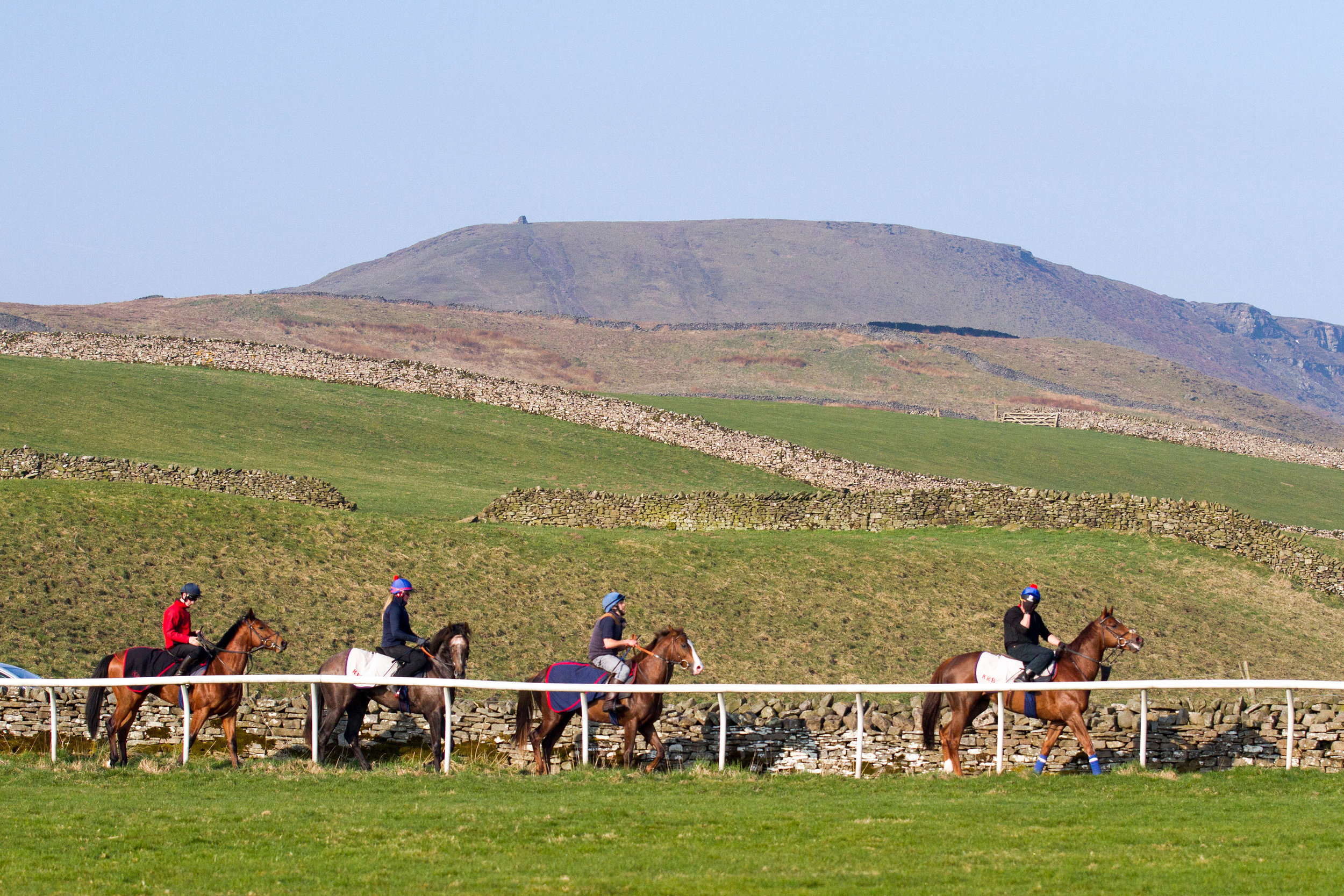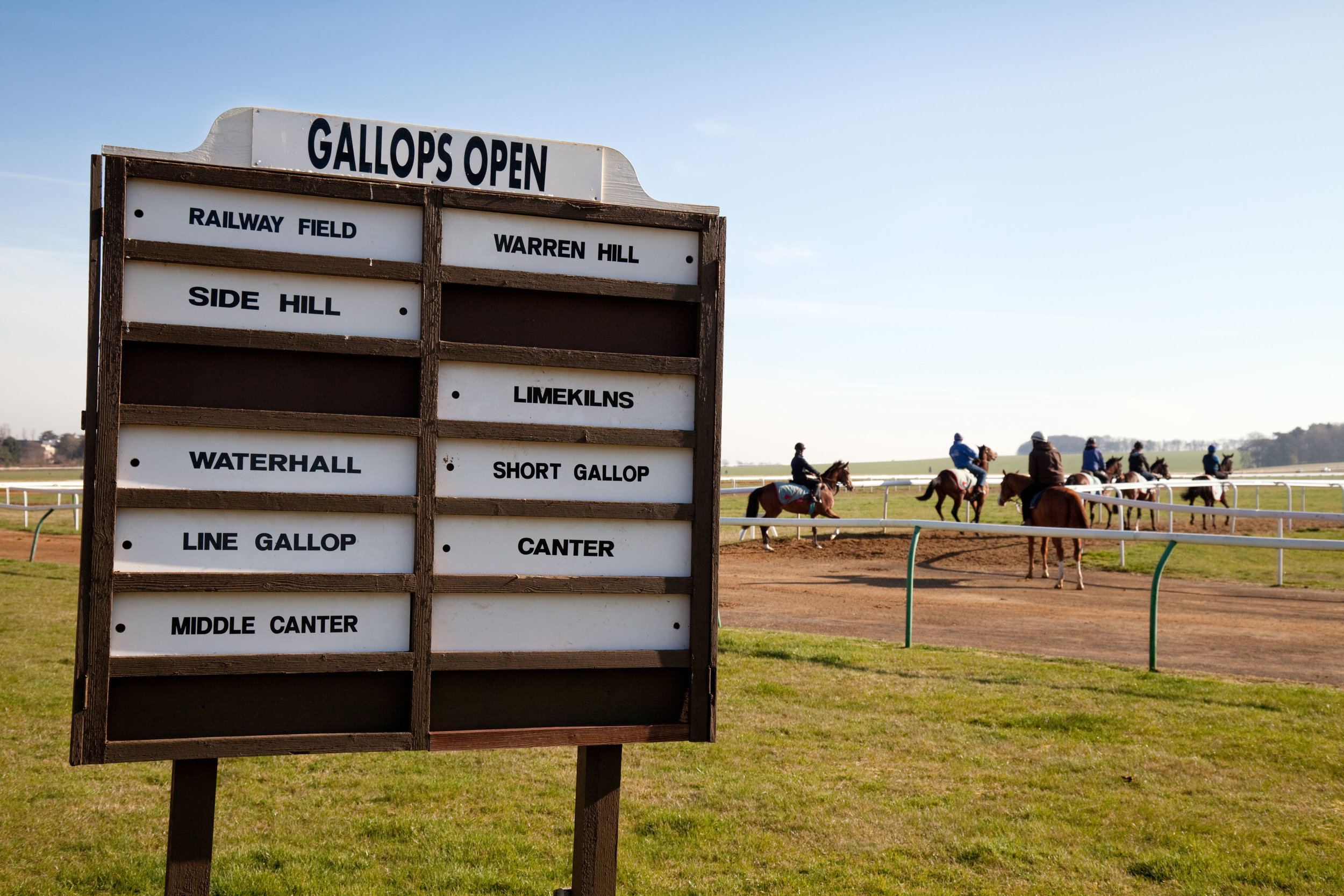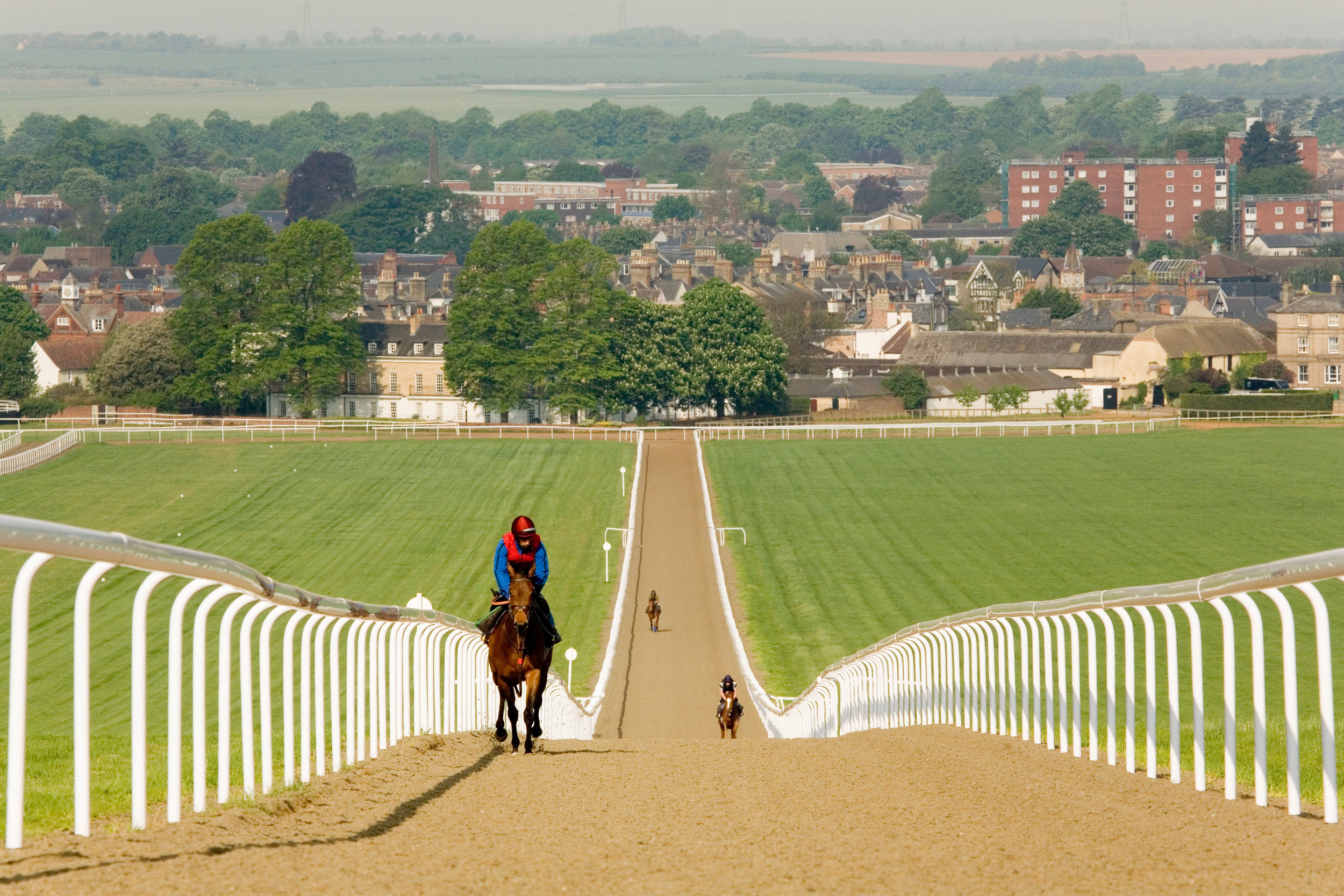Gastric ulcers in racehorses – what trainers should know
Article by Dr Michael Hewetson
Why are gastric ulcers so important in racehorses?
Gastric ulcers are very prevalent in racehorses, with between 52% and 93% of horses in active training affected. This is significant, because gastric ulcers can impact both the horse's performance and its overall health and welfare, which in turn can have financial and competitive implications for their owners, trainers, and the racing industry as a whole.
Gastric ulcers can affect a horse's performance by causing abdominal discomfort and reduced appetite. This can lead to changes in stride length and decreased energy levels that may impact their racing performance. Horses with gastric ulcers may also exhibit changes in behaviour, such as nervousness, aggression, or reluctance to train or race, which again, can affect their overall performance and temperament. If left untreated, gastric ulcers can lead to more serious health concerns such as colic, potentially requiring costly medical intervention and downtime for the horse. But most importantly, gastric ulcers are a welfare issue for the Thoroughbred racing industry, and with growing public scrutiny on the industry, ensuring the well-being of racehorses is a priority, and addressing gastric ulcers promptly should be considered part of responsible horse management. This requires a close working relationship with your vet, who will be able to give you expert advice about diagnosis, treatment, and management of this frustrating disease.
Understanding gastric ulcers
FIGURE 1
Equine gastric ulcer syndrome (EGUS) is a general term used to describe erosions and ulcers of the horse’s stomach and is similar to the term peptic ulcer disease in people. Unlike people however, the horse is unique in that the stomach lining (mucosa) is divided into an upper squamous and a lower glandular portion (figure 1); and it is important to realise that there are differences between these two regions with respect to how these lesions develop, their prevalence, associated risk factors and response to treatment. Therefore, when referring to EGUS, your vet may use the terms Equine Squamous Gastric Disease (ESGD) and Equine Glandular Gastric Disease (EGGD) to clearly distinguish the anatomical region of the stomach affected.
FIGURE 2
There does not appear to be a clear relationship between the presence of squamous disease and glandular disease, and the fact that both conditions may occur concurrently in the same horse does not indicate that they are associated. In the case of squamous disease, the cause of the ulcers is well understood, with a variety of managemental risk factors (e.g. increase in exercise intensity, low roughage/high starch diet, stall confinement) contributing to an increase in the exposure of the squamous mucosa to acid. The squamous mucosa is not normally exposed to acid. As such it is inherently susceptible to acid injury, and with prolonged acid exposure, ulcers may develop (figure 2).
FIGURE 3
In contrast to squamous disease, the cause of glandular disease is poorly understood. The glandular mucosa is fundamentally different from the squamous mucosa in that it is exposed to a highly acidic environment under normal physiological conditions. As such, it is only when there is a breakdown of the normal defence mechanisms that protect the glandular mucosa from acidic gastric contents that glandular disease occurs. While ulcers are most commonly seen with squamous disease, horses with glandular disease rarely present with ulcers. Rather, the lesions are more consistent with an erosive inflammatory gastritis and can vary widely in their appearance (figure 3). There is a now evidence to suggest that stress, both psychological (e.g. multiple riders or caretakers; confinement; stress associated with transport and competition) and physiological (e.g. increases in the total amount and frequency of exercise without adequate rest periods) may increase the risk of glandular disease in horses. This may be due to a variety of mechanisms including a reduction in the mucus coating and blood supply to the glandular mucosa; both of which compromise the gastric barrier, resulting in acid injury.
The prevalence of gastric ulcers appears to vary with age, use, stage of training, as well as the region of the stomach affected. The prevalence of squamous disease is consistently highest in performance horses, with 52-93% of Thoroughbred racehorses found to be affected. The prevalence of glandular disease is less well reported, however up to 47% of Thoroughbred racehorses may be affected.
Why are racehorses so susceptible to gastric ulcers?
It is most likely because of their unique management when compared to most other horse populations; and the intensity of exercise that is inherent of racing competition. For example, it has been shown that the risk of squamous disease increases with an increase in the intensity of exercise and the duration of time at work. Strenuous exercise causes an increase in intra abdominal pressure associated with contraction of the abdominal muscles1. This results in compression of the stomach, and exposure of the sensitive squamous mucosa to acidic gastric content (acid splash). Strenuous exercise has also been shown to cause an increase in a hormone called gastrin, which stimulates acid production in the stomach.
Several factors associated with management have also been shown to increase the risk of squamous disease, many of which are imposed on racehorses at the commencement of training or during racing competition. These include a high starch/low roughage diet, intermittent fasting, stall confinement, transport, intermittent access to water and administration of hypertonic solutions of electrolytes. In fact, exposure to a combination of a high starch diet, stall confinement and strenuous exercise has been shown to induce ulcers in as little as 7 days; and intermittent fasting is so effective at inducing ulcers that it is used as a model for squamous disease in experimental studies. Thoroughbred racehorses are also exposed to many of the risk factors for glandular disease, most notably, multiple riders or caretakers; confinement; and stress associated with transport and competition.
How do you know if your horse has gastric ulcers and how might they affect performance?
A variety of clinical signs may suggest that a horse has gastric ulcers, however there is currently very little evidence to support a direct association between any of these signs and the presence or absence of ulcers seen on gastroscopy. This is likely because most of the clinical signs are non-specific and are often very subjective. This is complicated further by the fact that horses with gastric ulcers may not demonstrate clinical signs and if they do, the signs do not necessarily correlate with the severity of the lesions seen on gastroscopy. Clinical signs suggestive of gastric ulcers should therefore always be interpreted with caution, and most importantly, gastroscopy should always be performed to confirm the disease (figure 4).
In racehorses, gastric ulcers have been associated with poor appetite, poor body condition, changes in behaviour (including an aggressive or nervous attitude), post prandial colic, stereotypic behaviour and resentment of girthing. Any one of these clinical signs can potentially have an indirect effect on performance (for example, through reduced appetite or interruption in training), but the big question is if gastric ulcers themselves, in the absence of other clinical signs, have an effect on performance. Despite the fact that it is a well entrenched ’fact’ amongst trainers that gastric ulcers have a direct effect on poor performance or reluctance to train, there is surprisingly little evidence in the literature to back this up. This may be in part due to the difficulties in excluding the many confounding factors that might influence poor performance (e.g. lameness, respiratory disease etc.).
The mechanism by which gastric ulcers may affect performance has not been identified but is likely to be related to epigastric pain. In people, epigastric pain is defined as pain localised to an area below the sternum and above the umbilicus and is common in athletes with gastro-oesophageal reflux disease (GERD). Acid reflux onto the sensitive squamous mucosa of the oesophagus during exercise causes a “burning sensation” that gets worse with increasing exercise intensity and has been shown to affect performance. Horses with squamous gastric disease have similar lesions to those causing GERD in human athletes, and the problem is likely to be exacerbated by the fact that the squamous mucosa extends from the oesophagus into the upper one-third of the stomach and is not protected by an oesophageal sphincter. Interestingly, a recent study in human athletes suggested that GERD may be associated with increased abdominal pressure during exercise, a mechanism that I have already alluded to in the equine athlete. How exactly epigastric pain impacts on athletic performance in the horse is a matter of ongoing speculation. One theory is that it may affect stride length. It has been shown that horses with gastric ulcers have a reduced stride length when galloping, likely due to abdominal discomfort. Stride length and lung ventilation are mechanically coupled in the galloping horse, and therefore, reduced stride length will result in decreased oxygen uptake, thus limiting aerobic capacity during peak exercise.
How are gastric ulcers treated and what can you do to prevent them?
Let’s turn our attention now to the treatment of gastric ulcers. Because there is currently little evidence to suggest an association between clinical signs and the presence or severity of gastric ulcers, treatment should always be based on gastroscopic evidence of ulcers. Some trainers may still choose to commence treatment based entirely on clinic signs without gastroscopy and assess for a clinical response. I would caution against this approach, as it can be costly if the horse does not have ulcers, and gastroscopy is still going to be necessary to conclusively rule out gastric ulcers if clinical improvement is not seen with treatment.
Treatment of gastric ulcers will vary depending upon the severity and the location of the ulcers and your vet will be able to give you advice on the best approach. In most cases treatment consists of management and dietary modification in conjunction with the use of proton pump inhibitors which suppress acid production. Oral omeprazole is the drug of choice and is currently the only licensed drug for the treatment and prevention of gastric ulcers in horses in the UK and Ireland.
Administering oral omeprazole on an empty stomach can improve the bioavailability of the drug. This can be achieved practically by administering it first thing in the morning at least 1 hour prior to feeding. This ensures the stomach will be empty as horses eat very little during the night even if they have access to forage.
The duration of treatment will depend on the location of the lesions, with squamous disease tending to heal faster than glandular disease. In most cases, your vet will prescribe oral omeprazole for 3-4 weeks and then the requirement for additional medication will be determined following a repeat gastroscopy. In the case of glandular disease, oral omeprazole is often combined with sucralfate, which adheres to the damaged mucosa, providing a physical barrier while also stimulating mucus secretion, both of which reduce potential exposure to acid. Omeprazole is a controlled drug, and therefore needs to be withdrawn prior to competition. The BHA published detection time for oral omeprazole is ≤ 48hrs, so withdrawal of the drug 3-5 days before competition would be prudent. There is, however, some concern that the requirement for withdrawal times might influence the efficacy of oral omeprazole treatment in racehorses. Many vets report reoccurrence of squamous disease following discontinuation of treatment with omeprazole, often within as little as 3 days, and this was demonstrated in a recent study comparing withholding periods for oral omeprazole treatments in racing Thoroughbreds6. The authors reported a squamous disease prevalence of 83% in horses after a “2 clear days'' recommended withholding period for oral omeprazole, which was an increase from 25% of horses with squamous disease before the recommended withholding period, and they theorised that ‘rebound acid secretion’ may be implicated. This phenomenon occurs following the discontinuation of proton pump inhibitor drugs such as oral omeprazole, and is linked to a loss of negative feedback from gastric acid during treatment that causes an increased secretion of the hormone gastrin that can persist for up to 2-4 days after the last dose of omeprazole has been administered. This results in a short period of increased gastric acid production when treatment is stopped. Whilst nothing can currently be done about the required withdrawal periods during racing, strict management practices should be implemented for the 2-4 days following cessation of omeprazole treatment to mitigate against development of squamous gastric disease. This could include ensuring provision of adequate roughage during this time, avoiding fasting or withholding water, and perhaps limiting exercise or transport if possible.
Additional management and dietary adaptations which may help prevent gastric ulcers and can be implemented longer term in a racing yard include free choice access to roughage (and if not, ensuring that roughage is provided at intervals of no more than 4-6 hours); turn out into a paddock with good quality grazing where possible; a low starch/high fat diet (or alternatively, smaller concentrate meals more frequently); reduction/avoidance of any potential stressors; and provision of regular rest days. Where possible, training schedules should be adjusted so that they occur later in the day when enough roughage has been consumed to ensure that there is a mat of roughage in the stomach to buffer acid in the upper squamous portion and to reduce acid splash during exercise. Alternatively, a handful of palatable chaff should be fed 20 minutes prior to exercise.
Numerous supplements are marketed for prevention of gastric ulcers, however there is currently very limited evidence to support their use.
References
Lorenzo-Figueras M, Merritt AM. Effects of exercise on gastric volume and pH in the proximal portion of the stomach of horses. Am J Vet Res. 2002;63(11):1481–1487.
Vatistas NJ, Sifferman RL, Holste J, et al. Induction and maintenance of gastric ulceration in horses in simulated race training. Equine Vet J Suppl. 1999;29:40–44.
Murray MJ, Eichorn ES. Effects of intermittent feed deprivation, intermittent feed deprivation with ranitidine administration, and stall confinement with ad libitum access to hay on gastric ulceration in horses. Am J Vet Res. 1996;57(11):1599–1603.
Herregods TV, van Hoeij FB, Oors JM, Bredenoord AJ, Smout AJ. Effect of running on gastroesophageal reflux and reflux mechanisms. Am J Gastroenterol. 2016;111(7):940–946. doi:10.1038/ajg.2016.122
Nieto JE, Snyder JR, Vatistas NJ, Jones JH. Effect of gastric ulceration on physiologic responses to exercise in horses. Am J Vet Res. 2009;70(6):787–795.
Shan R, Steel CM, Sykes B. The Impact of Two Recommended Withholding Periods for Omeprazole and the Use of a Nutraceutical Supplement on Recurrence of Equine Gastric Ulcer Syndrome in Thoroughbred Racehorses. Animals. 2023; 13(11):1823.
Clark B, Steel C, Vokes J, Shan JR, Gedye K, Lovett A, Sykes BW. Evaluation of the effects of medium-term (57-day) omeprazole administration and of omeprazole discontinuation on serum gastrin and serum chromogranin A concentrations in the horse. J Vet Intern Med. 2023 Jul-Aug;37(4):1537-1543.
Treating 'bucked shins' in the thoroughbred racehorse
Article by Adam Jackson MRCVS
One of the most common causes of lost days to training and racing in racehorses is dorsal metacarpal disease (DMD), which is often referred to as “bucked shins” or “sore shins”.
Often a frustration to trainers and owners, this problem rears its ugly head at the time of highest expectations, such as arising the last day of work before a horse’s first race; right after a horse’s first victory; or after a horse was purchased at a two-year old sale.
This disease presents with heat, pain with or without inflammation (swelling) on the dorsal (front) surface or the dorsomedial (front inside) surface of the third metacarpal bone (cannon) referred to as acute periostitis. With rest and reduced exercise, the condition can improve, but catastrophic fractures of the cannon may occur at the site of previous DMD episodes. A good understanding of this disease and strategies of prevention are vital in order to improve the welfare of the horse and reduce the potential expenses to all shareholders.
Introduction
The cannon bone is an important structure in the weight-bearing and absorbing shock. As the horse moves, the bone bends a little and then returns to its original shape like an elastic band, often referred to as elastic deformation. In addition, it has been observed that horses that work slowly have tension on the front of the cannon bone; in other words, the bone is stressed by a stretching force rather than a compressing force. However, at higher speeds, these forces change from stretching to compressing forces.
Repeated bending forces (stress cycle) on the cannon bone causes dorsal metatarsal disease. When the horse is young, it has a thin bone cortex. As the horse grows and is repeatedly subjected to these forces, the bones remodel and the cortex thickens, making it stronger. However, if the bending forces exceed the bone’s ability to remodel, then this leads to stress fatigue and bone damage.
The occurrence of bucked shins is most common when horses are developing, typically two–three years old as training becomes more intensive. But it must be noted that if the horse is not bone fit, any aged racehorse is susceptible to these diseases when they begin training. Roughly at the age of five years old when a horse is fit, they are at a low risk of this disease. Within the first six months of training, DMD may present in one or both front limbs. If the condition does occur in both front limbs and the horse is being trained on a circular track, then it is likely the inside leg is where it will occur first. In other words, if the training tends to be in a counterclockwise training circuit, then there are greater forces on the left limb than the right; thus the left is more likely to develop the disease before the right limb.
Risk Factors of DMD
Age: DMD occurs most commonly in 2–3 year olds, often within their first 6 months of training. It is rarely seen in horses with a mature skeleton (age 4 and over). However, this disease has been seen in 5 year olds especially if they have been stalled for a long amount of time after weaning and not racing until that age.
Gender: It is believed that the gender of the horse does not alter its risk to DMD.
Breed: Most common in thoroughbreds but may be seen in both standardbreds and quarter horses.
Genetics: The risk of DMD is influenced by genetics as variation in limb bone geometry (inherited) behaves differently to force/strains on the bone. In addition, the longer the cannon bone, the greater the load is at flexion of the dorsal cortex of the bone, making it more susceptible to DMD.
Training and racing surfaces: The different types of training and racing surface alter the risk to DMD because there are variations in the force applied to limbs as well as the acceleration rates of hoof impact. Furthermore, the impact of these forces is increased with greater speed. Dirt tracks tend to be the hardest surface, whereas synthetic tracks reduce hoof and limb impact and loading force. However, it is important to remember that the hardness of all of these surfaces can be altered by a number of other factors such as:
Different surface materials
Changes in weather, temperature and humidity
Surface maintenance (i.e., soaking, harrowing)
Changes in horse body weight
Age of surface – wear and tear of surface
Human opinion of track’s condition
Training: The length of time for bones to respond to different training practices is unknown. Although further research is required, it is suggested that fast work should be avoided in the early stages of training as it is thought that high-speed exercise introduced too quickly (within 1 month) was detrimental to bone health.
Direction of training: Track direction varies globally. Thoroughbreds tend to lead with the inside forelimb around turns then switch to the outer forelimb on the straight. It has been suggested that due to greater forces on the leading limb on the turn, that limb is more at risk of bucked shins. However, more research is required to make accurate conclusions.
Speed: Current research is contradictory. Some research indicates a reduction in the risk of DMD if the horse is trained at high speeds with every extra mile worked and canter work increases the risk. However, other research suggests that short periods of work (< 1 month) at high speed increases the risk of DMD.
Camber: European tracks, with turf being the prevalent surface, tend to vary in their design, often including slopes, twists, turns, uphill sections, and cambers. In addition, races may be run straight, clockwise or counterclockwise. This is in contrast to the USA where the tracks are usually flat. Although it is known that this variation in track characteristics alters the horse’s gait, thus altering forces on the forelimbs, further research is needed to understand if these variations increase the risk of DMD.
How does DMD develop?
Buck shin is the formation of tiny stress fractures on the front or inside of the cannon bone of the horse’s front legs. DMD occurs when the stress on the legs with high-speed training exceeds the bone’s ability to adapt to those stresses.
Bone is a dynamic tissue that is constantly adapting its structure. Once the bone is formed in immature animals, the bone grows and changes shape by a process called modelling. Bone remodelling is different from modelling in that its function is to renew the skeleton and involves both bone resorption and formation to occur at the same location in a sequential manner.
With high-speed training, there is high-strain fatigue, which causes excessive compression of the bone. During this compression, there is insufficient amount of bone remodelling at the point of stress. At this site, this new bone is much weaker; thus, it is susceptible to inflammation and pain and may lead to fractures.
Treatment of dorsal metacarpal disease
Treatment of DMD is designed to alleviate pain and inflammation while allowing the remodelling process of the bone to catch up with the damage that has been caused from stress cycling.
The core of the treatment is rest and providing pain relief, followed by a slow and gradual increase in exercise levels.
Fractures of the bone cortex can be treated with surgery using lag screw fixation and osteostixis. Osteostixis is the drilling of many holes around the site of fracture in order to promote bone healing. Lag screw fixation is the drilling of a screw across the fracture line to compress and stabilise the bone. However, fracture recurrence is common with both techniques and requires 5–6 months out of training.
There are additional treatments that may be used to complement core treatments. Extracorporeal shock wave therapy (ESWT) is commonly used for treatment and involves a highly concentrated, powerful acoustic (sound) energy source being applied to the site of injury. The rationale is that ESWT increases blood flow, increases growth of new blood vessels and increases the production of natural healing factors in the treated area. The research findings are limited on its effectiveness but anecdotally amongst the veterinary profession, it seems to work on bucked shins and stress fractures.
In Europe, horses must not have had shock wave therapy on the day of racing, or on any of the five days before the race day in which the horse is declared to run. In North America, horses are not permitted to race or breeze for 30 days following treatment as per the Horseracing Integrity and Safety Authority’s (HISA) rulings.
With all treatment options, there must be a careful and considered discussion with the veterinarian and all stakeholders on the desired outcome while bearing in mind the important factor of the horse’s welfare and wellbeing.
What about bisphosphonates?
Some clinicians are using a combination of shockwave and bisphosphonates (Tildren TM, OsPhos, TM) to treat DMD. Bisphosphonates were first seen in human medicine and used for osteoporosis. Bones are constantly remodelling in a process that removes old bone cells and deposits new ones. Bisphosphonates help prevent bones from losing calcium and other minerals by slowing or stopping that natural process that dissolves bone tissue, thus, helping bones remain strong and intact. Veterinary surgeons report mixed results with these therapies, and long-term use of bisphosphonates is expensive and has serious consequences. Bisphosphonates are toxic to the gastrointestinal and renal systems, thus, potentially causing colic and kidney disease. Their safety has not been evaluated for the use in horses younger than four years old nor in pregnant and lactating mares.
RULES ARE CHANGING - Bisphosphonates
Bisphosphonates are not to be administered to a racehorse under the age of three years and six months as determined by its recorded date of birth, on the day of the race or on any of the 30 days before the day of the race in which the horse is declared to run as per The International Federation of Horseracing Authorities rulings for Europe.
In America, HISA’s Anti-Doping and Medication Control (ADMC) Program came into effect on March 27 and with it, new regulations regarding the presence and use of bisphosphonates.
The Horseracing Integrity & Welfare Unit (HIWU) states “The ADMC Program regulations categorise bisphosphonates as a Banned Substance, meaning that they are prohibited from being administered to, or present in, covered horses at any time. Covered horses that test positive for bisphosphonates under the ADMC Program are subject to lifetime ineligibility, and associated covered persons may incur an Anti-Doping Rule Violation.”
“HIWU will not pursue disciplinary action against Covered Horses or their associated covered person(s) for the presence of bisphosphonates if the covered person(s) can provide documentation (e.g. medical records or a positive test result) to HIWU of the administration or presence of bisphosphonates prior to the implementation date of the ADMC Program.”
Training regimens
With DMD, it must be remembered that it is an appropriate response for new bone formation when the cannon endures cyclic stress and injury. This injury cannot be ignored but addressed to reduce the risk of serious consequences. Exercise is the root of the problem; therefore, the solution is to alter the patterns of exercise.
Dr David Nunamaker DVM of the University of Pennsylvania has developed a training programme, which is believed to reduce the risk of DMD. The rationale when developing this modified training programme is that horses are not born with the right bone structure for racing. The bones are to develop and adapt to racing. By providing training programmes that mimic racing, the bones can adapt to the forces that are applied during racing, thus reducing the risk of developing bucked shins.
When initiating this training regimen, it is assumed that young horses are broken to ride in autumn and able to gallop a mile by January so that training can start.
Stage 1 (5 week duration) – Horses finish the gallops two times a week with the last 1/8th of the mile (last 200 metres of 1600 metres) completed in an open gallop in 15 seconds.
Stage 2 (5 week duration) – Twice a week open gallops for ¼ of a mile (400 metres of 1600 metres) in 30 seconds, including a 1 mile (1600 metres) gallop.
Stage 3 (7 week duration) – The addition of speed work once per week. Breezing (moderate speed) for ¼ mile (400 metres) and daily gallops lengthened to 1 ¼ miles twice per week for 4 weeks. The following 3 weeks, the ¼ mile breeze is continued with a strong gallop out for another furlong (roughly 40 seconds total for a breeze).
Conclusion
The findings of exercise research are often varied and contradictory due to many research variables making comparisons and conclusions difficult. In addition, most of the research of musculoskeletal issues in racehorses uses racing data, but most injuries occur during training
Because more research is needed, there remain conflicting views of the effects of racing on horses before skeletal maturity and the most effective and safe way to introduce speed exercise. At present, the data suggests that distance and speed be implemented gradually and should include high-speed work at full racing speed.
The racing industry must continue to work cooperatively to address the welfare concerns associated with horses experiencing DMD.
Prep school - the role of the pre-trainer in the flat racing world
Article by Daragh Ó Conchúir
WC Equine’s Ellie Whitaker & Tegan Clark
Having had a little poke around the inner workings of pre-training in jumps racing for the last edition, it is now time to do the same in the Flat world.
In both National Hunt and Flat, owners and trainers send horses to be broken and prepped specifically to race, enabling trainers to get on with the job of attending to those in their yard that are ready to run.
Then there is the trading side. In jumps racing, that revolves around the point-to-point scene, where proving a level of ability in competition increases value. In the Flat division, the breeze-up sales are not competitive, but they illustrate athleticism, temperament, physical prowess and of course, raw speed.
While very successful, pre-trainers aren’t universally popular. As mentioned in the pre-training jumpers article, retired trainer and former CEO of the Irish Racehorse Trainers’ Association Michael Grassick argued that they were making an already difficult staffing situation for trainers even worse.
Last February, recently retired trainer Chris Wall asserted in a Racing Post feature that the proliferation of pre-trainers was accelerating the growth of the so-called super trainer, enabling them to stockpile horses.
But then, in the same article, Ben de Haan described the demand for pre-training as a very welcome opportunity to improve revenue streams.
Obviously, Flat racing is a more global field than jumps, so we had to be a little less parochial in sourcing our contributors; we touched base with successful operators in England, France and Ireland, namely Nicolas Martineau, Ellie Whitaker, Tegan Clark, Willie Browne and Ian McCarthy.
Willie Browne
Browne is featured elsewhere in this publication for his training prowess, but it is his nonpareil acumen in sourcing future champions as young stock and then producing them through the breeze-ups that he can hang his hat on. It’s also a lot better way to pay the ever-escalating bills.
Now approaching his 77th birthday, he has more than 40 years’ experience in this sector, having consigned a draft at the very first breeze-up sale in 1978. And though he has moved from the original Mocklershill location outside Fethard, Co Tipperary, to build Grangebarry Stables just over the road, he has retained the home label as a brand for excellence.
It was Browne who sold the first breeze-up graduate to win a Classic, when Speciosa galloped to victory in the 1000 Guineas in 2006, little over a year after breezing at Doncaster. Walk In The Park and Trip To Paris are others to go through his hands while Mill Reef Stakes victor Sakheer has the 2000 Guineas in his sights in the coming months.
Zoffany colt Sakheer
He has broken the million-pound barrier twice at the sales and was one of the first to explore the American market for value when buying horses to breeze—Sakheer, a most recent example having been acquired as a yearling at Keeneland for $65,000 in September 2021 and then making €550,000 at Arqana, eight months later. A year and two days after he was picked up in his native land, the Zoffany colt was a three-and-a-half-length winner of the Mill Reef.
Browne also has a lengthy list of clients who send horses his way to break and pre-train, including Coolmore, the Niarchos family and Canadian owner Chuck Fipke. He trained Spirit Gal to bag a listed prize for Fipke last season before she was moved on to continue her career with André Fabre.
“When we are at it as long as we are, and we know our gallops, it’s fairly smooth,” says Browne. “Basically, we train horses here to run fast for two and a half furlongs, maybe three furlongs. That is what they are gauging you on.
“If you are training and you get to your three-furlong pole, and when you go to the next furlong, then you know if you have a racehorse or not. Because if horses are going very fast for two and a half or three, they’ll invariably slow down. But Spirit Gal wouldn’t slow down. That’s our yardstick, if we think we have something good.
“In pre-training, you wouldn’t have to put in the miles that you’d put in with the horses that are breezing—less time on their backs, you know? I have two horses going away tomorrow—one to John Gosden and one to Ralph Beckett—and we would never have put a gun to their head. I wouldn’t want anybody to think we gun the daylights out of these breeze-up horses, but you have a better idea.
“The horses for trainers, the half-speed is as far as they’d have ever gone, unless they gave them to you until July or August. They’d usually go between March and May. The pre-training is great … it keeps the whole business ticking along.”
Le Mans is noted for horsepower of a different kind, but Nicolas Martineau and his wife Pauline Bottin have a premises just 20 minutes from the venue for the world-famous 24-hour rally that in five years, has established a reputation for producing speed on four legs, rather than wheels.
Among their clients are the Devin family, Louisa Carberry, Tim Donworth and Alessandro Botti. Last year’s Gp. 1 Prix Royal-Oak winner Iresine was one of the earliest graduates from the Martineau school while of the younger crop, Good Guess was placed in a listed race as a two-year-old last term. Starlet du Mesnil and Enfant Roi are some of the graded jumpers he has prepped, while British and Irish followers will know the high-class Fil Dor well.
“At the stable I work with a lot of trainers,” Martineau . And with each horse, we work like the trainer works. We don’t work a horse for Francois Nicolle like we do for Gabriel Leenders. We do specific work, horse by horse.
“The big problem in France is staff, personnel for racing stables. So the trainer, when they call me, they want me to prep the horse to be ready to go racing in four or five weeks, six weeks maximum, just after they leave me. You are doing all the pre-training but up to the stage too where they are ready to go racing.”
That is clearly a dissimilar approach to what is required by most British and Irish trainers, but one aspect of it that is very similar is the staffing shortage, which Browne attributes to his numbers being down to around 50 this year.
Back in France, Martineau even has different feed for the breeze-up two-year-olds and those in pre-training because they are not being trained for the same jobs; and his time learning about both sides of the equation has informed his methods.
“I have my experience from Ireland. I worked for Mick Murphy at Longways Stables. For me, he is the best for the breeze-ups, and I learned so much. He’s exceptional, and I took a lot from working with him.
“I worked for a long time for Jean-Claude Rouget. I worked for a year as well with my wife Pauline for Willie Mullins, and she worked as well for Joseph O’Brien. That was very good experience for pre-training.”
Indeed, the woodchip gallop is a mid-way point between what Mullins and O’Brien have at Closutton and Carriganóg respectively, so that they can cater for all types of horses.
McCarthy is a former NH jockey who had already built his breaking, pre-training and breeze-up operation, Grangecoor Farm on a greenfield site in Kildangan, Co Kildare by the time he had retired in July 2021.
The 34-year-old, who expects to have between six and eight juveniles bound for the Craven, Guineas and Goresbridge Breeze-Ups (while also breaking and pre training Flat and NH youngsters for the racetrack directly and producing jumps horses through the point-to-point sector), places a heavy emphasis on detail and that means not taking any shortcuts, even with spiralling costs.
“I spent ten years with Dessie Hughes and he was a horseman in himself,” McCarthy explains. “I was always interested in the breaking side of it with the stores during the summer, so it was always something that was in my mind from then that I might do.
“I went from there to Ted Walsh, where I learned an awful lot that stood to me when I started breaking and pre-training.
“I put it out there that I was doing it and was lucky enough to have ridden for some good owners that supported me when I was starting out and good trainers when I was freelancing that supported me as well.
“We have about 50–55 horses here, which is a number that works very well. I am so lucky, given how difficult it is for everyone to get staff in that I have five excellent full-time people here. Niall Kelly is head man, and Alan Davison, Johnny Wixted, Sean Donovan, Christine Worrell and Orla McKenna are with me as well. They are vital. We also have eight part-time workers.”
In his experience, there are varying techniques for getting to the same end game of a horse being prepared to give its best on race day. What is sure is that you cannot bring the same approach to every model.
“You try and get to know the horse the best you can. You’ve different types of horses—horses coming from the sale and homebred horses coming from the farm. The sales horses will have a sales prep done and will have that under their belt. Horses coming in off the farm just won’t be as advanced, so they’ll take a little more TLC.
“Here, the yearlings are started off in the lunge ring and are driven for a couple of weeks. They then go on the furlong sand-and-fibre gallop. Then, just before Christmas, they’re put on the three-furlong round sand-and-fibre gallop.
“From day one they’re driven through the stalls so that they adapt to it really well.
“I do like to get the two-year-olds away at the end of January, start of February. We use The Curragh on a regular basis for a day away. It’s an important part of it.”
Two of the best illustrations of Grangecoor’s work arrived in 2021, starting when he had Hierarchy for the Tattersalls’ Guineas Sale. The son of Mehmas breezed the second-fastest time and was sold to David Redvers for 105,000 guineas, going on in the following months to win twice and be placed twice at group level, before only being beaten a length and a quarter in the Breeders’ Cup Juvenile Turf Sprint.
Hierarchy – Tattersalls Guineas Breeze Up Sale 2021
The same year, he was sent a Profitable filly that had been purchased privately by Liam Donovan on behalf of the Dunphy family. The pocket rocket turned out to be Quick Suzy, who would shed her maiden status at Curragh Racecourse before blitzing the opposition in the Gp. 2 Queen Mary Stakes at Royal Ascot.
“You get a great thrill and satisfaction from something like that. I’d say it’s more satisfying than when riding a winner because you’re putting an awful lot more time into them, and you actually get attached to them and love to see them do well.”
Ellie Whitaker (26) and Tegan Clark (33)
Ellie Whitaker (26) and Tegan Clark (33) set up WC Equine in September 2020, as the world was in Covid lockdown. It wasn’t ideal, but with Robert Cowell looking to let out a yard at Bottisham Heath Stud in Six Mile Bottom, just outside Newmarket, they took the plunge.
What has been so vital for them, given the difficulties in finding enough good staff, is that they are both hands-on, able to muck out and ride, with 35 boxes full. Between the two of them, they broke 64 horses in a five-month period.
Having Newmarket facilities was a considerable help in getting established quickly but so was the initial support of trainers Kevin Philippart de Foy and Roger Varian. They sent yearlings to break and pre-train, while Brendan Morrin of Pier House Stud utilised their services to prep some more for the breeze-ups.
Tegan Clark
Whitaker was working for Cowell at the time, having started out with Mark Dwyer, the former Gold Cup-winning pilot who is a wizard of the breeze-up realm and indeed, has enjoyed extensive success in tandem with Browne. She also worked for Charlie Appleby and among the horses she broke in was triple Gp. 1 winner and champion two-year-old, Pinatubo.
Meanwhile, Clark had worked for Varian. That early support allowed them to showcase their talents, with James Fanshaw and Sean Woods among new clients this year.
“Last year was the first year we managed to get a good client specifically for the breeze-ups,” Clark explains further. “We also bought a few ourselves and have shares here and there, but this is the first year people have rung us and put horses with us to specifically breeze; and we want to try and build on that this year to take those relationships and partnerships into the future.”
This was on the back of two notable successes at the Guineas Sale. In 2021, Royal Aclaim won a maiden within a month of being consigned by WC Equine for Pier House. She won twice more at three and though losing her unbeaten status in the Gp.1 Nunthorpe when favourite, she ran creditably in sixth and was placed subsequently at group level.
Having Newmarket facilities was a considerable help in getting WC Equine established quickly.
Twelve months later, Village Voice was sold. Not the same type of model, she holds an entry in the Irish Oaks for Jessica Harrington, after having just two runs in October, winning her maiden and finishing third in a Gp.3.
“You’ve got to be honest and educate the horses as well as you can so that they do have a lasting career within the sport. It’s brilliant to have a mature two-year-old that’s breezed, but then that’s going to go on and probably have a lovely three-year-old, if not four-year-old career with Jessie Harrington. She already has her black type. So as long as you keep producing that sort of quality, people take notice.”
Initially, all the yearlings go through the same routine, though never together.
“The breezers go through the same process as the pre-trainers from breaking until Christmas time. We give them all a break then; but when the breezers come back in, they have to start knuckling down. You can’t expect a pre-trainer to lay up with them because we are putting the breezers under pressure a lot earlier.”
“There’s a fine line,” notes Whitaker in relation to horses being pre-trained for owners and trainers. “We’re not here to physically break horses or to see how good they are. Our job is to get them through the breaking process and get them up to a path in the training process where they can go up to town (Newmarket) and go up Warren Hill with ease—get them to a business level.
“Every trainer is different, their standards are different and it’s about meeting their standards and what they require. At the end of the day, it’s a product we’re selling and that product needs to appeal to each individual. We’re equipping these young horses with the right tools; and if they can go into a training facility with the right sort of attitude—be calm and confident, we know we’ve done our job well then.”
In terms of the breeze-ups, with Browne owning most of those horses himself or in partnership with others, sourcing is key. He dabbles in buying foals with long-time ally Dwyer, but the majority are yearlings.
“The trouble with nice horses is they might not be racehorses. When we are looking now, we are looking for a completely different type of animal than that we used to look at 10 to 15 years ago. You’d buy a nice-looking horse, with a nice pedigree and if he breezes up with a nice action but maybe not going that quick, he’s compared against nothing else; and if they like what they see and if they like the movement and the horse’s page, and he’s good looking, you are going to get him well done.
McCarthy learned from the likes of Dessie Hughes and Ted Walsh that stood him in good stead when he started breaking and pre-training
“Now I’ve a horse out there that I gave three hundred grand for, and he’s going to the sale in France. He’s by a sexy American sire Into Mischief, he’s training very well and we hope we’ve struck gold; but If he doesn’t breeze well, no matter how well he’s bred or how nice he is, you’ll get badly hurt.”
Nice horses are pricier than ever before, so Browne will prioritise the page and walk if he must. McCarthy suggests that at his price range, “you have to be lenient towards the page... I’ll focus on the individual.”
And while the breezers are pressed far more than pre-trainers because of the more immediate job they must do, McCarthy argues that you can’t make them faster than they are.
“You’re just trying to get the nice individual with the suitable and affordable pedigree, and then to keep them sound and watch their minds, as they are only two-year-olds and still developing.”
“We would be riding horses ten days after they came in,” Browne details his system for the breezers. “When you’ve big numbers, it is a matter of getting them done, but I wouldn’t say a word to somebody who is five or six weeks breaking a horse. There is nothing wrong with that; it’s good practice.”
Everyone agrees that good communication is crucial, be that in terms of honesty about the calibre of animal you are selling or being able to pass on as much information as possible to whoever is taking on a horse you have pre-trained.
In France, once again, it goes a little further.
“Sometimes clients will say, ‘I would like to go to this trainer with this horse’; but I might say, ‘I’m not sure, for this horse, it might be better to go to this one,’” Martineau reveals. “When you know the horses, you know what trainers might be suitable, and that gives the client confidence.”
Apart from staffing, increased costs is a huge challenge. Browne changes the wood chip on his gallop twice a year, and says it is 50 percent more expensive than before.
Martineau points out that the expenses are like those of a licenced trainer but that pre-trainers in France charge around €30–32 a day, while full trainers will get in the region of €70. Still though, he likes having a little more time and a little less pressure. The trade-off is worth it, particularly as the business has been built up now and is making money.
McCarthy offers a pragmatic tone abouts the price of everything rising. It eats into the bottom line, but it cannot lead to a reduction in the calibre of his service, given how appreciative he is of the loyalty shown to him by his various clients.
“The big thing for me is attention to detail,” McCarthy emphasises. “That is of the utmost importance through the entire process, and that starts with feed and every step of the way after that.
“Everything is more expensive now, but I look at it that you put in the best of what you need. You can’t cut corners. What you’re doing is educating young horses, and that’s how we see ourselves—as educators of young horses before they join the big boys and go into the next stage of their lives. You need to do everything right, no matter what it costs.”
It is interesting, given Wall’s criticism in particular, that McCarthy will have horses all year around, but that is imperative according to the Galway native, as you have to tailor your approach to the systems horses will be entering.
“For the different trainers we work for, we know their regimes and try to have the horse prepared for them to fit into their regime when they think they’re up to it. The ideal is for them to go in February, but it doesn’t always work like that as all horses are different.
“All the big trainers are going up in numbers. Early into the year and early into the Flat season, we’d be dealing with a lot of the backward two-year-olds and trying to organise them for trainers, giving an opinion of what’s early and of what wants a little more time. And the ones that want a little more time, we’ll be holding onto them and letting them progress and grow into themselves.
“Plenty of trainers would have a couple with me that are not going to be early two-year-olds. They’ll be built up and they’ll be rode in bungees to try [to] strengthen them up and put a top line on them. It’s basically strength and conditioning we’re doing with them.”
Browne states that even the horses he has pre-trained that are being sent to England will most likely go to another pre-trainer, due partly to offset fears of any bug being transmitted, but also because they are full.
“Chris Wall wouldn’t be mad about what we do, but I would go along with what he said about it helping the big trainers stock up,” Browne remarks. “You are taking away half a year’s livelihood from him by doing what you are doing.”
“Unfortunately, trainers don’t have the staff,” observes Clark. “We’ve got the room, we’ve got the availability, we’ve got the staff.
“We’ve got trainers in the hustle and bustle of Newmarket who send horses to us 10 minutes down the road. They might only use us for 10 or 14 days in the summer on grass, keep them ticking over; and then they go back in and are running straight off of that and are happy with the results. The horses are running well.”
And that’s the point. Be it breaking, pre-training, a little R&R, prepping for breeze-ups—the results speak for themselves.
“It’s about being calm and straight,” concludes Martineau. “The voice is always calm. I want my horses very calm and straight on the gallop. If that happens, they can go to the races anywhere and whenever you want.
“They are ready.”
Artificial Intelligence tools - and their growing use in racing
Book 1 of the Tattersalls October Yearling Sale is traditionally where some of the finest horseflesh in the world is bought and sold. The 2022 record-busting auction saw 424 lots pass through its hallowed rotunda for a total of 126,671,000 guineas. One of the jewels in the crown was undoubtedly lot 379, a Frankel colt out of Blue Waltz, who was knocked down to Coolmore's M.V. Magnier, joined by Peter Brant, for 1,900,000 guineas.
It is easy to see why lot 379 made Coolmore open its purse strings. He has a stallion’s pedigree, being out of a Pivotal mare. His sire has enjoyed a banner year on the track, with eight individual Gp/Gr1 winners in 2022. He is a full brother to the winning Blue Boat, himself a 450,000 guineas purchase for Juddmonte Farms at Book 1 in 2020. Lot 379 is undeniably impressive on the page.
But it is not his impeccable pedigree that makes Tom Wilson believe lot 379 has the makings of a future champion. “The machine doesn’t have any biases. It doesn’t know whether it’s a Galileo or a Dubawi or a Havana Grey,” he says. “The machine just looks at the movement of the horse and scores it as it sees it. It has no preconceptions about who the elite sires in the market are. It’s completely neutral.”
The “machine” to which Wilson is referring is, in reality, a complex computational model that he claims can predict with 73 percent accuracy whether a horse will be elite (which he defines as an official rating of 90 or above, or the equivalent in its own jurisdiction) or non-elite (horses rated 60 or below) based on its walk alone. It’s a bold claim. So how does he do it?
First, Wilson taught an open source artificial intelligence tool, DeepLabCut, to track the movements of the horse at the walk. To do this, he fed it thousands of hours of footage. He then extracted around 100 frames from each video and manually labelled the body parts. “You teach it what a hock is, what a fetlock is, what a hip is,” he explains. “Eventually, when you feed new videos through, it automatically recognises them and plots the points. Then you can map the trajectories and the angles.”
He then feeds this information into a separate video classification algorithm that analyses the video and compares it to historic data in order to generate a predicted rating for the horse. “Since 2018, I’ve taken about 5,000 videos of yearlings from sales all around the world with the same kind of biometric markers placed on them and then gone through the results and mapped what performance rating each yearling got,” he says. “So we’re marrying together the video input from the sale to the actual results achieved on track.”
Lot 379 has a projected official rating of 107 based on his biomechanics alone, the highest of all the Frankel’s on offer in Book 1 (yes, even higher than the 2,800,000 gns colt purchased by Godolphin). Wilson’s findings have been greeted with scepticism in some quarters. “There’s so many other factors that you can’t measure,” points out trainer Daniel Kübler. “There’s no way an external video can understand the internal organs of a horse, which you can find through vetting. If it’s had an issue with its lungs, for example, it doesn’t matter how good it looks. If it’s inefficient at getting oxygen into its system, it’s not going to be a good racehorse.”
“It’s not a silver bullet,” concedes Wilson. “There are multiple ways to find good horses. It’s just another metric, or set of metrics, that helps.” But is it really “just another metric,” or the opening salvo in a data revolution that has the potential to transform the way racehorses are bought and sold?
Big data. Analytics. Moneyball. It goes by many names, but the use of data in sports is, of course, nothing new. It was brought to popular attention by Michael Lewis in his 2003 book Moneyball and by the 2011 film of the same name starring Brad Pitt.
It charted the fortunes of the Oakland Athletics baseball team. You know the story: Because of their smaller budget compared to rivals such as the New York Yankees, Oakland had to find players who were undervalued by the market. To do this, they applied an analytical, evidence-based approach called sabermetrics. The term ‘sabermetrics’ was coined by legendary baseball statistician Bill James. It refers to the statistical analysis of baseball records to evaluate and compare the performance of individual players. Sabermetrics has subsequently been adopted by a slew of other Major League Baseball teams (in fact, you would be hard pressed to find an MLB team that doesn’t employ a full-time sabermetrics analyst), and ‘moneyball’ has well and truly entered the sporting lexicon on both sides of the Atlantic.
Take Brentford FC. As recently as 2014, the West London club was languishing in the third tier of English football. Today, Brentford is enjoying its second consecutive season in the top flight (Premier League), bucking the trend of teams that gain promotion only to slingshot back down to the lower leagues after one season.
What is their secret? Moneyball. Brentford’s backroom staff has access to vast streams of data that detail how their players rank across a number of key metrics. This information helps them make day-to-day training ground decisions. But crucially, it also shapes their activity in the transfer market by helping them to identify undervalued players to sell on for a profit. Players such as Ezri Konsa, purchased from Charlton for a rumoured £2.5 million in 2018 before being sold, one year later, to Aston Villa for a £10 million profit. Think of it as the footballing equivalent of pinhooking.
The bottom line is that data analysis has already transformed the way athletes are recruited and trained across a range of sports. It stands to reason, therefore, that statistical modelling could help buyers who are spending, on average, 298,752 guineas for a yearling at Book 1 make informed purchasing decisions.
“I’ve always been interested in applying data and technology to an industry that doesn’t exactly embrace technology.” That’s according to star bloodstock agent Bryon Rogers. Rogers is widely regarded as the godfather of the biometrics movement in racing. “The thoroughbred industry is one that moves slowly, rather than quickly,” he adds, with a dash of irony.
Having cut his teeth at Arrowfield Stud in his native Australia and Taylor Made Farm in Kentucky, in 2011 he started his own company, Performance Genetics. As its name implies, the company initially focused on DNA sequencing, attempting to identify markers that differentiated elite and non-elite horses.
From there, it branched out into cardiovascular and biomechanical research. Rogers quickly discovered that it was the biomechanical factors that were the most influential in terms of identifying future elite horses. “When you put all the variables in, the ones that surface to the top as the most important are actually the biomechanical features: the way the horse moves and the way the horse is constructed. They outweigh DNA markers and cardiovascular measurements,” he explains.
According to Rogers, roughly a fifth (19.5 percent, to be exact) of what makes a horse a horse is explained by the way it moves. “That’s not to say that [those other factors] are not important. It’s just that if you’re ranking them by importance, the biomechanical features are more important than the cardiovascular ones.”
His flag bearer is Malavath. Purchased at the 2020 Goffs Premier Yearling Sale for £29,000, she was first sold for €139,200 at the Arqana Breeze Up Sale the following year. “I know when I’ve found one,” recounts Rogers. “I walked up to her [at the sale], and there was nobody else there. At that time, [her sire] Mehmas wasn’t who he was. But her scores, for us, were an A plus. She shared a lot of the common things with the good sprinter-milers that we’ve got in the database. A lot of the dimensions were very similar, so she fit into that profile.” She has since proven herself as a Gp2 winner and most recently finished second behind Kinross in the Prix de La Forêt on Arc day.
In December 2022, Malavath sold again, but this time for €3.2m to Moyglare Stud and is set to continue her racing career in North America under the tutelage of Christophe Clement.
A find like Malavath has only been made possible through the rapid development of deep learning and artificial intelligence in recent years. Rogers’s own models build on technology originally developed for driverless cars—essentially, how a car uses complex visual sensors and deep learning to figure out what’s happening around it in order to make a decision about what to do next.
But wait. What is deep learning? Here comes the science bit! Machine learning and deep learning are both types of artificial intelligence. “Classical” machine learning is A.I. that can automatically adapt with minimal human interference. Deep learning is a form of machine learning that uses artificial neural networks to mimic the learning process of the human brain by recognising patterns the same way that the human nervous system does, including structures like the retina.
“My dad’s an eye surgeon in Australia and he was always of the opinion that what will be solved first in artificial intelligence will be anything to do with vision,” says Rogers knowingly. Deep learning is much more computationally complex than traditional machine learning. It is capable of modelling patterns in data as sophisticated, multi-layered networks and, as such, can produce more accurate models than other methods.
Chances are you’ve already encountered a deep neural network. In 2016, Google Translate transitioned from its old, phrase-based statistical machine translation algorithm to a deep neural network. The result was that its output improved dramatically from churning out often comical non-sequiturs to producing sentences that are closely indistinguishable from a professional human translator.
So does this mean that the received wisdom around how yearlings are selected is outdated, subjective and flawed? Not exactly. “There are so many different ways of being a good horse; I don’t think [selecting horses] will ever completely lose its appeal as an art form,” says Rogers. “But when we get all this data together and we start to look at all these data points, it does push you towards a most predictable horse.” In other words, following the data will not lead you to a diamond in the rough; rather, it’s about playing the percentages. And that’s before all before the horse goes into training.
After that point, the data only gets you so far. “I would say [the use of biomechanical modelling] probably explains somewhere between 30 to 40 percent of outcome,” says Rogers. “It’s very hard to disentangle. The good racehorse trainer has got all the other things working with him: he’s got the good jockeys, the good vet, the good work riders. He’s got all of those things, and their effect on racetrack outcomes is very hard to model and very hard to disaggregate from what we do.”
Nevertheless, it does not look like big data is going away any time soon. “It might be a couple of years away,” says Rogers. “As bloodstock gets more and more expensive and as the cost of raising a horse gets more and more expensive, the use of science is going to rise.” He believes there’s already an analytics arms race happening behind the scenes.
“For me, it isn’t a case of if it’s valuable; it’s a case of when it will be recognised as being valuable.” That’s Wilson again. “What you see in every sport is a big drive towards using statistical analysis and machine learning to qualify and understand performance. Every other sporting sector tells us that these methods will be adopted, and the ones that adopt them first will gain a performance edge over the rest of the field.”
Comparisons to Deep Blue’s defeat of Garry Kasparov might be premature, but it is clear that the racing industry is fast approaching a tipping point. “I don’t think the machine on its own beats the human judge,” says Wilson. “But I think where you get the real benefit is when you use the information you've been given by machine learning and you combine that with deep human expertise. That’s where the application of these types of things are the most successful in any sport. It’s the combination of human and machine that is power. Humans and machines don’t have to compete with each other.”
So will more trainers be adopting the technology? “There’s lots of different data points that you can use to predict a horse’s potential, and it’s understanding all of the pieces together,” says Kübler. “I’d want a bit more proof of concept. Show me that your system is going to save me loads of time and add loads of value. We’ll see in three or four years’ time how good it was.”
In the meantime, all eyes will be on Lot 379.
Nutrition and the new science of the "Gut-Brain connection"
Article by Scott Anderson
Trainers are always looking to gain an edge in performance. But what about their mental state? Are they jittery, distracted or disinterested? No matter how strong the horses, their heads must be in the game to succeed.
Surprisingly, much of that mental attitude is driven by gut health, which in turn depends on the collection of microbes that live there: the microbiota. In a horse, the microbiota is a tightly packed community of about 100 trillion microbes, composed of bacteria, archaea, fungi and protozoa. It colonises the entire GI tract but is largely concentrated in the hindgut, where it works to ferment the prebiotic fibre in forage. The microbial fermentation of fibre into fatty acids produces 70% of the animal’s energy requirements and without it, the horse couldn’t get sufficient energy from simple forage. Intriguingly, byproducts of that fermentation can affect the brain.
It is easy to be sceptical about this gut-brain connection, but over the last decade, research has made it clear that gut microbes have an outsized influence on mood and behaviour. Microbes that improve mental state are called psychobiotics, and they may completely change the way you train and manage your horses. A horse’s health – and consequently its performance – starts in the gut.
Inflammation
When the microbiota is unbalanced by stress, diet or sickness, it is said to be dysbiotic. It loses diversity, and a handful of bacterial species compete for domination. Without the pushback of a diverse population, even beneficial bacteria can become pathogenic. Surprisingly, that can affect the brain. Multiple studies in various animal models have shown that transmitting faecal matter from one animal to another also transmits their mood. This demonstrates that a dysbiotic microbiota can reliably cause mental issues including anxiety and depression, thereby affecting performance.
An important function of the microbiota is to fight off pathogens by outcompeting, starving or killing them. However, a dysbiotic microbiota is less diligent and may permit pathogens to damage the gut lining. A degraded gut lining can leak, allowing bacteria and toxins into the bloodstream. The heart then unwittingly pumps them to every organ in the body, including the brain. This makes the gut the primary source of infection in the body, which explains why 80% of the immune system is located around the intestines. Over time, a leaky gut can lead to chronic systemic inflammation, which weakens the blood-brain barrier and interferes with memory, cognition and mood.
Inflammation is a major component of the gut-brain connection, but not the only one.
Neurotransmitters and hormones
Horses and humans use neurotransmitters to communicate between nerve cells. Brains and their attendant nerve bundles constitute a sophisticated network, which makes it somewhat alarming that microbes also produce neurotransmitters. Microbes use neurotransmitters to converse with each other, but also to converse with their host. The entire gut is enmeshed in nerve cells that are gathered up into the vagus nerve that travels to the brain. Microbial neurotransmitters including serotonin and dopamine thus allow certain microbes to communicate directly with the brain via the vagus nerve. We know this happens with specific bacteria, including Lactobacillus species, because when the vagus is severed, their psychobiotic effects disappear.
As well as neurotransmitters, hormones are involved in gut-brain communications. The hypothalamus-pituitary-adrenal (HPA) axis controls the stress response in animals. The hypothalamus is located low in the brain and responds to stressors – such as a lurking predator – by producing hormones that stimulate the neighbouring pituitary, which then triggers the adrenal gland to produce cortisol, the stress hormone. Cortisol acts as a threat warning and causes the horse to ramp up glucose production, supplying the energy needed to escape a predator. This is the same hormonal circuit that trainers exploit for racing.
The HPA axis produces cortisol in response to stress. Cortisol inhibits the immune system, which in combination with a leaky gut allows pathogens to enter the bloodstream. Susequent systemic inflammation and vagal feedback lead to stereotypies.
The production of these hormones redirects energy to the heart, lungs and muscles at the expense of the immune system. From an evolutionary point of view, the tradeoff makes sense: first escape the predator and deal with infections later. After the danger has passed, cortisol causes the HPA to return to normal – the calm after the storm.
However, continued stress disrupts that cycle, causing anxiety and diminishing the brain’s ability to store memories. This can dramatically interfere with training. Stress can also induce the release of norepinephrine, which promotes the growth of pathogenic bacteria including Campylobacter jejuni, Listeria, Helicobacter pylori, and Salmonella. Prolonged high cortisol levels can increase gut leakiness, potentially leading to infection and further compounding the situation. In the long term, continued stress leads to systemic inflammation, which is a precursor to problematic behaviours.
Short-chain fatty acids
When microbes consume proteins and fibre, they break them down into their constituent molecules, such as amino acids, fatty acids and sugars. These are the metabolites of the microbes. As well as neurotransmitters and hormones, the gut-brain conversation is mediated by metabolites like butyrate, an important short-chain fatty acid which plays multiple roles in the body.
In the gut, butyrate serves as a preferred nutrient for the cell lining. It encourages the differentiation of stem cells to replenish gut cells that are routinely sloughed off or damaged. It plays an important role in the production of mucus – an essential part of gut protection – which coats the gut from mouth to anus. In the muscles, butyrate boosts the growth of skeletal muscle, crucial to athletic performance, as well as inducing the production of glucose, the primary muscle fuel. One-quarter of systemic glucose is driven by butyrate. In its gut-brain role, butyrate passes through the blood-brain barrier, where it nourishes and enhances the growth of new brain cells.
These factors make butyrate a star player in the gut-brain connection. They also highlight the benefits of prebiotic fibre, especially when high-energy, low-fibre feeds are provided.
Starting a microbiota
We’ve explored the major pathways of the gut-brain connection: inflammation, neurotransmitters, hormones and fatty acids. Some of these pathways are at odds with each other. How does such a complicated system come together?
As mentioned, the microbiota is an animal’s first line of defence against pathogens, attacking and killing them often before the immune system is even aware of them. That means a healthy microbiota is an essential part of the immune system. However, the immune system is designed to attack foreign cells, which includes bacteria. For the microbiota to survive, the immune system must therefore learn to accept beneficial microbes. This lesson in tolerance needs to take place early in the foal’s development, or its immune system may forever fight its microbiota.
There are multiple ways nature ensures that foals get a good start on a microbiota that can peacefully coexist with the immune system. The first contribution to a protective microbiota comes from vaginal secretions that coat the foal during birth. After birth, microbes are included in the mare’s milk. These microbes are specially curated from the mare’s gut and transported to the milk glands by the lymphatic system. Mare’s milk also includes immune factors including immunoglobulins that help the foal to distinguish between microbial friends and foes. An additional way to enhance the microbiota is through coprophagia, the consumption of manure. Far from an aberration, foals eat their mother’s manure to buttress their microbiota.
Microbes affect the growth and shape of neurons in various brain sites as the foal develops – a remarkable illustration of the importance of a healthy early gut microbiota.
The cooperation between the immune system and the microbiota is inevitably complex. Certain commensal bacteria, including Clostridiales and Verrucomicrobia, may be able to pacify the immune system, thus inhibiting inflammation. This is a case where microbes manage the immune system, not the other way around. These convoluted immune-microbial interactions affect the mental state – and consequently the behaviour – of the horse, starting at birth.
Stereotypies
A 2020 study of 185 performance horses conducted by French researchers Léa Lansade and Núria Mach found that the microbiota, via the gut-brain connection, is more important to performance than genetics. They found that microbial differences contributed significantly to behavioural traits, both good and bad. A diversified and resilient microbiota can help horses better handle stressors including stalling, training, and trailering. A weakened or dysbiotic microbiota contributes to bad behaviours (stereotypies) and poor performance.
The horses in this study were all carefully managed performance horses, yet the rates of stereotypies were surprisingly high. A kind of anxiety called hypervigilance was observed in three-quarters of the horses, and almost half displayed aggressive behaviour like kicking or biting.
The study found that oral stereotypies like biting and cribbing were positively correlated with Acinetobacter and Solibacillus bacteria and negatively correlated with Cellulosilyticum and Terrisporobacter. Aggressive behaviour was positively correlated with Pseudomonas and negatively correlated with Anaeroplasma.
Some of these behaviours can be corrected by certain Lactobacillus and Bacteroides species, making them psychobiotics. That these personality traits are correlated to gut microbes is truly remarkable.
Intriguingly, the breed of a horse has very little impact on the makeup of its microbiota. Instead, the main contributor to the composition of the microbiota is diet. Feeding and supplements are thus key drivers of the horse’s mental state and performance.
The gut-brain connection and training
How might the gut-brain connection affect your training practices? Here are some of the unexpected areas where the gut affects the brain and vice-versa:
High-energy feed. Horses evolved to subsist on low-energy, high-fibre forage and thus have the appropriate gut microbes to deal with it. A high-energy diet is absorbed quickly in the gut and can lead to a bloom in lactic acid-producing bacteria, which can negatively impact the colonic microbiota. High-energy feeds are designed to improve athletic output, but over time, too much grain can make a horse antisocial, anxious and easily spooked. This can damage performance—the very thing it is trying to enhance. Supplementary prebiotics may help to rebalance the microbiota on a high-starch regimen.
Changing feed regimens quickly. When you change feed, certain microbes will benefit, and others will suffer. If you do this too quickly, the microbiota can become unbalanced or dysbiotic. Slowly introducing new feeds helps to prevent overgrowth and allows a balanced collection of microbes to acclimate to a new regimen.
Stress. Training, travelling and racing all contribute to stress in the horse. A balanced microbiota is resilient and can tolerate moderate amounts of stress. However, excessive stress can lead, via the HPA axis, to a leaky gut. Over time, it can result in systemic inflammation, stereotypies and poor performance.
Overuse of antibiotics. Antibiotics are lifesavers but are not without side effects. Oral antibiotics can kill beneficial gut microbes. This can lead to diarrhoea, adversely affecting performance. The effects of antibiotics on the microbiota can last for weeks and may contribute to depression and anxiety.
Exercise and training. Exercise has a beneficial effect on the gut microbiota, up to a point. But too much exercise can promote gut permeability and inflammation, partly due to a lack of blood flow to the gut and consequent leakiness of the intestinal lining. Thus, overtraining can lead to depression and reduced performance.
Knowing how training affects the gut and how the gut affects the brain can improve outcomes. With a proper diet including sufficient prebiotic fibre to optimise microbiota health, a poor doer can be turned into a model athlete.
References
Mach, Núria, Alice Ruet, Allison Clark, David Bars-Cortina, Yuliaxis Ramayo-Caldas, Elisa Crisci, Samuel Pennarun, et al. “Priming for Welfare: Gut Microbiota Is Associated with Equitation Conditions and Behavior in Horse Athletes.” Scientific Reports 10, no. 1 (May 20, 2020): 8311.
Bulmer, Louise S., Jo-Anne Murray, Neil M. Burns, Anna Garber, Francoise Wemelsfelder, Neil R. McEwan, and Peter M. Hastie. “High-Starch Diets Alter Equine Faecal Microbiota and Increase Behavioural Reactivity.” Scientific Reports 9, no. 1 (December 9, 2019): 18621. https://doi.org/10.1038/s41598-019-54039-8.
Lindenberg, F., L. Krych, W. Kot, J. Fielden, H. Frøkiær, G. van Galen, D. S. Nielsen, and A. K. Hansen. “Development of the Equine Gut Microbiota.” Scientific Reports 9, no. 1 (October 8, 2019): 14427.
Lindenberg, F., L. Krych, J. Fielden, W. Kot, H. Frøkiær, G. van Galen, D. S. Nielsen, and A. K. Hansen. “Expression of Immune Regulatory Genes Correlate with the Abundance of Specific Clostridiales and Verrucomicrobia Species in the Equine Ileum and Cecum.” Scientific Reports 9, no. 1 (September 3, 2019): 12674.
Daniels, S. P., J. Leng, J. R. Swann, and C. J. Proudman. “Bugs and Drugs: A Systems Biology Approach to Characterising the Effect of Moxidectin on the Horse’s Faecal Microbiome.” Animal Microbiome 2, no. 1 (October 14, 2020): 38.
Pre-trainers and their influence on Irish NH racing
Article by Daragh Ó Conchúir
Pre-trainers have always existed but there is far more prevalence in recent times, be that to lighten the loads of trainers themselves or, ever increasingly, within a business model of providing licensed conditioners with ready-to-run horses, or as near as dammit.
It was interesting to see former Irish Racehorse Trainers’ Association chief executive, Michael Grassick opine in The Irish Field on December 17 that pre-trainers were actually impacting negatively on the men and women he used to represent – and indeed was one of, before handing over the reins to his son, Michael Jnr – as it made it more difficult for them to retain staff.
Surely, though, the only reason a yard uses such services is because it doesn’t have the time, manpower or expertise to do the job. It makes no sense for trainers to add to an already hefty catalogue of expenses if they and their staff are twiddling their thumbs for “three, four and five months,” as Grassick seemed to suggest.
Trainer Tom Mullins isn’t a fan of the point-to-point production line in Ireland, believing that more potential owners are choosing to invest in stores with a view to a quick return at the boutique NH Sales, rather than going in on a young horse to race. But that route is available to everyone within the industry. If you want to work full-time with horses, you have to find a niche, or create one.
We all know Barry Geraghty as the former champion jockey who won the Grand National, and counted two Gold Cups, five Champion Chases, four Champion Hurdles and two Stayers’ Hurdles among his 43 Cheltenham winners.
Long before he called time on his career in 2020, Geraghty was pre-training young horses at home in Hallstown, just outside Dunshaughlin, and moving them on, most of the time through the point field via Warren Ewing and Aidan Fitzgerald. His second Gold Cup triumph came in 2013 on Bobs Worth, a horse he had sold to Nicky Henderson as an unbroken store.
There have been plenty others that have had good careers but Supreme Novices’ Hurdle winner, Champion Hurdle favourite Constitution Hill and Tipperary 4yo maiden runner-up, does have the potential to be the best of his many graduates.
“It’s getting harder at all levels,” as Geraghty explained. “With the price of foals, the price of stores, it’s harder to get what you’re looking for. Bobs Worth, he was bought as a yearling and sold as a four-year-old unbroken store. As I got older, I would have got involved with Warren Ewing buying stores and going straight to the point-to-point field with them. But then we’ve been buying foals as well since then.
“For example, Constitution Hill was bought as a foal. I would have kept him for three years, broken him as a two-year-old, pre-trained him as a two-year-old, pre-trained him as a three-year-old until the autumn and then he went up to Warren’s to be trained for a point-to-point.”
John Nallen, famous for the Minella soubriquet in honour of his Clonmel hotel and who produced Minella Indo and Minella Time to win a Gold Cup and Grand National within a few weeks of one another in 2021, is another who focuses on foals. So too Walter Connors, the man who found Gold Cup winner Don Cossack as a foal in Germany, as well as ill-fated Champion Hurdle hero Espoir D’Allen and multiple Grade 1 victors Envoi Allen and Bacardys.
More can go wrong in that length of time but the outlay is lower and there is less intensity required with the work. And to be able to break them younger is a considerable advantage.
In days of yore, National Hunt horses might not have come out of the field until they were five or six. But all athletic pursuit has advanced and science tells us that once the loading is appropriate, earlier development and conditioning work pays off in the long run.
“It’s like the underage structure with county teams, the strength and conditioning that’s being done with 15- and 16-year-olds. They’re your two-year-olds and three-year-olds. So then you’ve a young lad coming out of minors and he’s as big as (GAA footballer of the year) David Clifford.
“And it’s only teaching them graft. It’s not hardship. You’re not galloping them. You’re conditioning them. If you’re to keep a horse right through from a foal to running in a point-to-point or a bumper, it’s an awful lot easier physically to break them at two than it is at three, but there’s great development in it for them too, both physically and mentally. I think you can connect with them well. Because you’re not having the struggle that you might have with a bigger horse, it makes them more amenable, which is a positive thing for when they go into training. They’ve learned rather than been taught.”
As the Meath native acknowledged, acquiring the raw material is the key starting point.
“You’re looking for the best individual you can get, in every sense and obviously a certain level of page to back it as well – sire, damsire. Your budget won’t allow you to buy perfection (so) you just have to pare back as to where you are with your budget and what are the acceptable faults.”
Judging from the laugh that greets the query about what flaws you might be willing to accept, it isn’t always straightforward.
“It’s very hard to sell one by an unfashionable sire. It doesn’t help. There’s lots of different things. A horse is probably judged at his harshest at the store sale. Whereas he goes and wins a point-to-point, his faults might be more acceptable.”
WALTER & DAVID CONNORS
Walter Connors is renowned as the pioneer of sourcing foals in France – Envoi Allen and Espoir D’Allen were in the same field at Bruno Vagne’s Elevage Allen when the Waterford man picked them out – and he chooses what route he takes to disperse his stock in accordance with those faults Geraghty refers to.
“It’s pretty random with us, the selection of what goes to the sales and what doesn’t,” Connors told me. “A horse could be backward and not fit for the sales so we might point-to-point him but it’s a blank canvas on the first of January and while we aim for the sales, there’s always one reason or another why a horse doesn’t make it and we’ll point-to-point instead.”
After the best part of three years growing up at Sluggara Farm in Dungarvan, Envoi Allen was prepped by Colin Bowe a for a facile triumph in a Ballinaboola maiden because Muhtathir was not a sire that got the market’s pulse racing. But Connors would not like to have his entire investment, or anything like it, relying on form, albeit that the decision to focus on foals is budget-driven.
“Buying foals has worked out okay for us but it’s full of risk,” the vet stated. “All you can see at that stage, is whether they’re big or small. We try and have a look at them as they’re coming along and see how they’re developing. But when did I know Envoi Allen was a good horse? When he jumped the second-last in Ballinaboola. That’s the reality of it. All we can do is try and improve the way we rear them, to make sure they get the best chance they can.
“Buying foals and selling as three-year-olds means you have a lot of capital tied up. You have three years of stock on hand before you have something to sell. Then when those horses are sold, hopefully it takes the pressure off the horses in training. I am full of admiration for the lads depending on form for everything.”
Nallen and Pat Doyle are in that latter category, though Nallen acquires foals mostly and Doyle focuses primarily on the more expensive but more immediate turnaround of stores.
Doyle, who broke Champion Hurdle legend Monksfield and subsequently educated and sold Grand National and Grade 1 winner Minnehoma as well as other top-flight victors Bob Olinger, Shattered Love, First Lieutenant and Brindisi Breeze, bought Appreciate It and Asterion Forlonge as stores the same day for €60,000 each before selling the future Grade 1 winners.
“Nowadays horses are pretty well done from the time they’re foals,” Doyle detailed.” It’s not like it was 20 years ago. Three-year-olds weren’t touched until six weeks before sales. It’s totally different now. Most of the three-year-old stores have been to a sale as stores and they’re very professional men, the men that buy them.
“We’ve a few fellas around here and they would bring their yearlings in for the winter and probably put breaking tack on them and drive them on long reins, and probably do that for the months of December, January and February, and probably do it again their two-year-old days. They’re so well-handled, horses are a lot more forward than they were.
“We don’t like to do things too quick. It actually takes me probably between four and five months to get a horse to where I want to get him. You will get the odd horse that will get there in four months. We break them, let them out for a month and bring them back in the middle of August. We do an awful lot of conditioning work before we’d do anything else. You’re talking five good months.“
There is an important theme here. Sometimes, the charge is levelled at the point-to-point producers that they don’t leave much in the tank. But that wouldn’t make sense from a business perspective because you want clients to return. You don’t get the best of the horse by finding out about them before you need to.
Minella Indo is another fine example of the benefit of patience. Nallen bought him as a foal from breeder Dick Lalor, of Carrigeen fame, and kept him until he was five.
“He could have made it at four but we always want to do right by the horse and played it cautiously with him,” Nallen revealed. “He is a Beat Hollow, it’s a good family, but his dam was 22 and people thought we were a bit mad buying out of a 22-year-old mare. He came through the system well and we just didn’t rush him to get him out at four.
“When we saddled him up at Dromahane, the day after St Patrick’s Day in 2018, he was ready and he won easily. And the rest is history… It’s about getting them over the line. Find out as much as you can about their ability without wrecking them.”
That said, when you have them for years rather than months, there are various landmarks along the way that you know should be hit.
“You’re going through all the stages from a foal and a two-year-old to three-year-old,” Geraghty noted. “Some will grow, some won’t grow. There are different stages and some will grow into a horse you’d hope them to be and Constitution Hill would have been that horse as an individual, but desperately laid back. But he always found everything really easy and it was then a case of doing everything right for what you would expect a horse to do at every stage. But it’s only when you look under the hood that you see what’s there. It’s only when you give them a squeeze and with him (when he went in training with Ewing), it was instant.”
Unfortunately for Doyle, he chose the same point-to-point for future multiple Grade 1 winner Appreciate It as Envoi Allen ran in and his charge tired to finish third having gone toe-to-toe with his good friend Connors’ star. The vital win was recorded next time out and Willie Mullins bought him privately.
Mullins sends a lot of his horses to Sonny Carey for the other side of pre-training – readying horses for a full-time training regime. While Carey also buys a few stores himself and has a permit to train a few horses on the track for family and friends, it is breaking horses for trainers or readying them for their routines that is the core of his operation, which is based in Arthur Moore’s yard outside Naas.
Appreciate It, Laurina and Captain Guinness are just some of high-calibre talent he and his team have been entrusted with.
“The way I work it is we break them, educate them and get them ready to go into a string so that from the day they arrive into the yard, they can just go into the string,” said Carey.
“It all depends on what the trainer will want. Some trainers will want them to just fit into the string. Some trainers will want to know how good they are, what you think of them. Owners sometimes want to find out if a horse is worth putting into training. It just all depends on the client. And the horse.
“We more or less start them off steady, get them hacking away, step them up to cantering away then and if the trainer wants them worked, they can start working and be schooled along as well.
“It’s all in collaboration with the trainer but it’s down to the individual horse. Some horses will take plenty and be ready for rocking and some horses fall away or get little injuries or the normal young horse kind of things. They’ll all get their ringworm and they’ll get sick at some stage, just the things that young horses get. It’s better for those things to happen in my yard than the trainer’s yard”.
Carey explained how he goes about breaking young horses.
“Everyone has their own way of doing it. It’s what works for you, isn’t it? I was lucky, my father did it for I’d say the guts of 50 years and I learned it off him.
“You’re handling, starting them lunging, getting them used to a bit in their mouth, start with a roller, which simulates a girth. Once they take that, you’ve no problem and we’ll stick a second rope on them then and start turning them on a long reign, which simulates a rider steering them. Some horses would do no better for three weeks driving than they would three days. They just have it. Some horses need more driving.
“After that, in the stable, you just start lying over them, patting them away. And slowly get in on them and then you’ll start riding them around the box, putting your leg on them, teaching them. We’ll go from the box then to the lunge ring, ride them in the lunge ring and then introduce another horse into the lunge ring with them after a day or two.
“Then we might have four or five in the ring together then so that when they head out to the gallop, they’re fairly straightforward.”
Captain Guinness is an example of the advantage of having more time with horses and breaking them younger. He won quickly for Henry de Bromhead but proof that the lemon hadn’t been squeezed to the pips was that he was a Grade 2 victor just last November, three years later.
“For a National Hunt horse now you’d be better off breaking them at two and get a little pop into them. That’s in a perfect world. Store horses are so well handled now coming from the sales that there’s not much work in them in that way. There’s a massive difference between a sales horse and a homebred.
“We broke Captain Guinness at two, he came back in at three and came back in again at four. When he came back it was just hacking away steady, getting miles under the built and schooling him away. He’d go on another little break then and come back in. We had him cantering away and when he went down to Henry as a four-year-old he’d a good bit done, over a good period of time. He won as a four-year-old for Henry.”
Carey never had any interest in going into training full-time, more enthused by teaching youngsters.
“You’ll never be rich but you’ll always have a wage. We bring along a few horses ourselves and we’ve been lucky trading the last few years and that slots into it as well. We’d always have a store or two and we’d always have a yearling or two as well for the Flat. We might run a couple over in France and have had a bit of luck there.”
Carey was almost apologetic as he continually reverted to the importance of the raw material. But it’s the key tenet of the pre-training process. It can’t be a one-size-fits-all routine.
“Treat them as individuals. We’d a filly gone away there that you couldn’t get a second rope on her. She kept kicking herself. So we had to skip that step. We had to ride her rather than drive her. But you’ll get that. We’d a horse last year, we had to ride him on the walker because he kept bolting. So that was what we did to get him to accept the rider. There’s lots of different things that can come up and it’s all about the individual.”
Clearly, while the process is vital, it will never make a bad horse a world beater. But it can turn a potentially good one into a plug if it isn’t done properly. We’ll give the last word to Geraghty.
“The most important thing is that you’ve a nice horse in the first place. It’s a bit like the silk purse. You need the horse. A good pre-training system will make the best of a horse, but there’s no magic.”
Which products and services should trainers be using in 2023?
Cavalor - ArtiTech
Low-grade inflammation is common in joints that perform. However, joint inflammation initiates a cascade of catabolic reactions that gradually degrade the cartilage and may result in lameness.
During an extensive research program, Cavalor has designed a multi-ingredient nutraceutical that helps with protecting joints of equine athletes. The effectiveness of Cavalor ArtiTec has been documented by both in vitro and in vivo experiments and the overall efficacy in the treatment of lameness is supported by the results of a clinical pilot study.
The efficacy and especially the synergistic potential of the individual raw materials and botanical ingredients on inflammation, cartilage protection and repair has been studied over 7 years. These findings have led to the final formulation of Cavalor ArtiTec.
Combining botanical ingredients is a widely applied practice to compose effective products. The final result is believed to be of similar or better potency as that of a single herb. The advantage of using suboptimal efficacious dose levels of each botanical ingredient is reducing the risk of potential toxicities associated with the usage of single herbs.
In the follow-up of the results of previous studies, 7 candidate formulations were evaluated (in vitro) to further unlock the mechanism of action of these formulations and their efficacy. The influence on various biomarkers related to joint health and homeostasis were evaluated using primary human chondrocytes isolated from knee joints in various in vitro models. This study has led to the development of the final candidate formulation for evaluation in a combined mechanistic and efficacy horse specific joint inflammation model (Phase III).
In conclusion, Cavalor ArtiTec is a complete multi-ingredient nutraceutical with proven efficacy for optimising joint health in equine athletes. Cavalor ArtiTec delivers everything our equine ‘athletes’ deserve during periods of intense activity and stress.
For more information contact: Website: www.cavalordirect.co.uk Telephone: +44 1902 213483
Duggan Veterinary - ConfidenceEQ®
Pheromone communication has been at the heart of Duggan Veterinary Supplies expertise for over 40 years, and we are now pleased to announce the launch of the innovative equine appeasing pheromone, ConfidenceEQ®.
A pheromone is a naturally occurring chemical that an animal produces used for intraspecies communication, which means that their presence automatically and predictably affects all members of the same species, regardless of age or gender.
Like many mammals, nursing mares naturally emit a calming pheromone that reassures their newborn foal. When the foal encounters unfamiliar situations and uncharted territory, this pheromone makes the foal feel comfortable, secure, and more self-assured, enabling them to better learn about their surroundings. ConfidenceEQ® is an identical replica of this horse appeasing pheromone. Numerous studies have been conducted since the equine appeasing pheromone was discovered, proving its effectiveness in reducing stress in conditions that occur frequently in horses of all ages.
Donal Duggan is delighted to add ConfidenceEQ® to the Duggan Veterinary Equine armoury, stating: “The ideal time to use ConfidenceEQ® is when you anticipate your horse will be exposed to something new which they may find stressful. ConfidenceEQ® helps reassure horses, helping them focus allowing them to use their own skills to cope with their surroundings and can be used to help build confidence in situations such as: Loading, travelling and recovery after arrival; Environmental changes (new yard, stabling) or competition environment; Social situations (weaning foals, meeting new horses); Dealing with loud noises (large crowds, thunderstorms, fireworks); Breaking young horses and introducing new exercises during training; Farrier, vet, or dental visits.”
Horses in these situations may show signs of stress such as pawing, vocalising, flared nostrils, kicking, lack of concentration, and resistance. These behavioural changes are due to an elevated cortisol level, which when prolonged, also triggers multiple physiological responses like increased heart rate and blood pressure, weakening of the immune system, cribbing, and digestive issues - all of which can develop into significant problems for owners, trainers, and veterinary practitioners.
ConfidenceEQ® is easy and quick to apply. There are no syringes, mixing food, pills or other uncomfortable application methods that can be difficult to administer or add stress to your horse. It takes effect in 30 minutes, lasts 2.5 hours, and can be reapplied as needed.
For more information contact: Email: sales@dugganvet.ie or uksales@dugganvet.com
Freedom Health - Total Gut Health
Horses actively training and racing commonly struggle with digestive health, problems which manifest most obviously in gastric issues. Additionally, many racehorses experience concurrent hindgut problems less easily recognised. Not eating well, sudden changes in behaviour, resistant and mean attitudes, not fully using the body, and struggling to maintain weight and condition are a few of the problems that can be associated with hindgut health.
It’s important to actively manage the health of the horses’ entire digestive tract to stop the treat-and-repeat cycle and keep your horses in top condition. A healthy gut is a core requirement for a racehorse to perform to its full potential.
Unfortunately, training, travelling, racing, and breeding chronically stress the horse and especially the digestive tract. Management and feeding practices have changed beyond recognition over the last few decades. But the equine digestive tract remains the same, having been accustomed to a low-stress, nomadic lifestyle while consuming a high-fibre, trickle-fed diet. Modern husbandry practices and feeding grain-based feeds, further complicated by competition stresses, can be significant contributors to digestive issues. What, then, can you do for these horses?
Support total digestive health by feeding SUCCEED® Digestive Conditioning Program™ once a day every day. SUCCEED maintains optimal digestive health in athletic horses naturally with science-based, human-food-grade quality, proven ingredients. It serves as an ongoing maintenance program for the health of the entire digestive tract.
Product trials available on a limited basis. Contact Sandra Hughes: shughes@freedomhealthllc.com.
SUCCEED® Digestive Conditioning Program™
The patented and proven SUCCEED formula delivers nutrients the body requires for GI anatomy and function. It provides a variety of benefits including:Oat Oil – specially extracted to preserve polar lipids which support nutrient absorption and bioavailability; Oat Flour – specially processed to preserve ß-glucan, a soluble fibre that provides support for a healthy immune system and a normal, healthy rate of feed transit through the GI tract; Yeast – a combination of a mannan oligosaccharide and a yeast ß-glucan help maintain a healthy, balanced hindgut and natural immunity; Amino Acids – provide fuel for muscles and support production of mucin, a necessary component of the mucus that lubricates and protects the gut lining.
“I have been using SUCCEED, and I couldn’t be happier with the results. You can visually see a big difference in the horses’ condition very quickly. I believe that it is really enabling their digestive systems.”
Richard Hughes, Horse Trainer
For more information visit: Succeed-equine.co.uk or @succeedequine
NAF - Immuforte
Keep the whole yard healthy, and ready to race, with NEW NAF Immuforte.
The busy racing yard environment presents the perfect storm of challenges for your horses’ immune systems; and any trainer knows when immune challenge hits, training days, performance and results are lost. Keeping them healthy keeps your training regime on track, and ensures the season’s goals remain in sight for every horse on your yard.
CREDITED TO JESS PHOTOGRAPHY
Regular travel, intense exercise and being stabled in close proximity, often with shared air space, means a daily assault on every racehorse’s natural defences. Add the challenge of frequent new arrivals, particularly young horses, with naïve immune systems, working closely together, and the risk is self-evident.
Requested by trainers. Formulated by Equine Vets and Registered Nutritionists. Trialled by trainers, riders and professionals in elite equine sport. BETA NOPS accredited, and designed to meet the highest regulatory and quality standards for racing throughout Europe, and beyond. New NAF Immuforte builds on over 30 years of experience at NAF, in innovative evidence-led solutions, to provide targeted immune support for equine athletes.
Containing a key natural extract proven to boost the equine immune system, Immuforte supports white blood cell numbers and activity, and targets the oxygen load capacity of red blood cells. Uniquely, Immuforte combines the recognised immune support of echinacea with natural antioxidants and adaptogenic botanical extracts, including, rosehip, turmeric, ginkgo and omicha, to regulate cellular responses, and further support the body’s own defence against unwanted attack.
NAF Immuforte is available as a palatable liquid, in an easy to feed, auto-measured pump dispense liquid. The perfect solution to your yard’s natural defences.
For more information contact: Website: www.naf-equine.eu Telephone: 0800 373 106
Plusvital - Racing Syrup
The globalisation of racing has eroded the margins of success between trainers. High performance is no longer guaranteed based on pedigrees. A study carried out on winning margins in racing suggests that the overall percentage difference between first place and second place is 0.32%, the difference between first and third was 0.75%. Never before has optimising recovery and nutrition been as important in gaining percentages of improvement which can be the difference between winning and not.
Days post-race or fast work the body recovers and adapts allowing the horse to become more oxygen efficient and physically stronger. Muscle recovery requires specific vitamins, minerals and amino acids to give the horse the best possible opportunity to maximise its full potential. This vital edge is optimised by correct nutrition. Supporting race horses' mineral and vitamin levels is critical to racing success today.
Used for 47 years by global racing elite Plusvital Racing Syrup is formulated to provide 30 essential vitamins and minerals exceeding NRC recommendations. Key ingredients facilitate strength and recovery.
B vitamins are an essential group of vitamins for a horse to perform at its best. The harder they work the higher the requirement for vitamin B is. B vitamins play a vital role in forming red blood cells, responsible for carrying oxygen to muscles allowing the horse to continue galloping at high intensity whilst removing carbon dioxide. When muscle has a high level of carbon dioxide the horse becomes tired and cannot finish the race.
Additional key ingredients include Vitamin E which reduces oxidative stress. Selenium neutralise free radicals supporting the immune system. Branched chain Amino acids and Threonine supports muscle recovery essential for strengthening. Zinc and biotin support cellular repair and hoof growth. Available in 2L or 5L Plusvital racing syrup supports your horse in pursuit of their performance goals.
For more information visit: www.plusvital.com
Why Choose Pro-Dosa in 2023?
As we all know, horsemen are responsible for the management of horses’ health, wellbeing, and fitness, to ensure they can perform to the best of their ability on the racetrack, but at the same time, a racing stable must be a profitable business and each horse must be economically viable for their owners. As a result, in 2023, more than ever, horsemen must ensure they are getting the best possible value from the products they purchase.
Quite logically, horses under the added stress of hard work, transport, racing, competition, or illness have increased nutrient requirements. Unlike people though, who often turn to food when under stress (think chocolate or chardonnay), horses tend to go off feed and drink less than they normally would. Horses that fail to eat or drink well when travelling and racing will recover more slowly and will often perform below their best. That is why many stables consider traditional, veterinary-administered, injectable pre-race/pre-travel treatments to be essential. Corrine Hills says “I originally developed Pro-Dosa BOOST, for horses in my own racetrack veterinary practice, as a more economical, less invasive, oral alternative to those treatments.”
Pro-Dosa BOOST is a complete, balanced multi-nutrient paste that I formulated to fill the gap between good daily nutrition and the increased requirements horses have when they are under stress. Pro-Dosa BOOST provides a practical way to deliver essential nutrients to horses that may not be eating or drinking enough, at those times, to support normal metabolism, performance, recovery, and heath.
It contains a comprehensive range of water-soluble vitamins, trace elements, electrolytes, and amino acids in doses that reflect requirements established in scientific literature. I have included them in readily usable forms, in good balance with each other, and in balance with the cofactors required for their absorption and function.”
Pro-Dosa International Ltd is GMP registered, demonstrating quality, safety, and security of the product from raw materials through to finished product. Each batch of Pro-Dosa BOOST undergoes laboratory testing including complete quantitative analysis, demonstrating that each portion contains precisely what is on the label; microbial cultures, to ensure it is safe to feed; and Naturally Occurring Prohibited Substance screening.
For more information contact: Email: info@pro-dosa.com Telephone: +64 27 238-8482
SPILLERS™ - Perform & Restore Mash
Racehorses need optimum nutrition to help them fulfil their full potential which is why SPILLERS™ has launched their new SPILLERS Perform & Restore Mash. The mash soaks super-fast in under 2 minutes providing convenience especially when travelling and is designed to be fed daily to support optimum condition and recovery. It’s been formulated to assist hydration and complement the replacement of electrolytes post exercise. Re-hydrating quickly is important particularly for horses in high intensity exercise as they rely heavily on muscle glycogen (stored glucose) for energy metabolism and although it takes up to 72 hours for glycogen stores to be fully restored, replenishment will be slower in dehydrated horses.
SPILLERS Perform & Restore Mash is a low starch, molasses free blend of highly digestible fibre and oil to support digestive health and includes probiotic live yeast alongside prebiotic MOS and FOS. The mash offers a high level of the essential amino acid lysine to support muscle tone and topline and includes branch chain amino acids to support muscle synthesis post exercise. What’s more, it supplies powerful antioxidants including vitamin C to support respiratory health and natural, bioavailable vitamin E to support immunity, muscle health and an athletic performance.
Finally, SPILLERS Perform & Restore Mash includes an appetising apple aroma which is released when soaking to encourage even the fussiest of fussy feeders.
All SPILLERS feeds are BETA NOPS approved.
For more information contact: Website: www.spillers-feeds.com Care-Line number: 01908 226626
Fairfax - Better condition – better performance
Resolve to make 2023 the year you take a closer look at the exercise tack your horses wear on a daily basis – and follow the science when it comes to making choices that will improve performance.
Switching saddles could significantly improve a horse’s back health and movement, as well as reducing time off and vet bills this year. In scientific trials commonly-used exercise saddles (1/2 tree, 3/4 tree, and full tree) all caused areas of potentially detrimental high pressure. The Fairfax Exercise Saddle relieves pressure at a crucial point on the back (T13) so in gallop the hindleg is brought forward more and the quarters come further under the horse. The proven result is increased stride length and therefore more power.
If a horse is girthy or aggressive when being tacked up, consider the girth it wears on a daily basis. When straight girths were tested at gallop on a treadmill, the pressure was so high that the pressure mat was unable to record it. To achieve a significantly freer gallop with increased hindlimb extension, make the switch for 2023 to the Fairfax Race Exercise Girth which is shaped to avoid a peak pressure zone behind the elbow. It may also be an effective part of a multi-disciplinary approach in supporting horses with ulcers.
You could reduce or eliminate sore or rubbed withers this year by using a medical-grade closed-cell foam pad with a shaped central webbing spine. The Fairfax Race Exercise Pad provided superior pressure reduction without slipping in a pilot study where foam, gel and polyfill pads were compared. Gel pads increased pressure at the front of the saddle and those without a central spine (such as polyfill pads) slipped down onto the back at speed. In addition, using multiple polyfill pads does not relieve pressure – it increases bulk and instability.
Scientists have proven that changing to a bridle that reduces pressure at the TMJ has a significant positive effect on the horse’s power, straightness and efficiency of stride. This is because the TMJ area is massively influential when it comes to locomotion. The Fairfax Race Bridle relieves pressure at the TMJ and other areas on the face resulting in improved front and hindleg range of motion. In addition, the Mexican grackle helps keep the bit stable in the mouth reducing sores and hanging associated with bridle pressure.
For more information visit: Fairfaxracing.com
Baileys New Race-Pro Cubes for the “Challenging Temperament”
Baileys’ new Race-Pro Cubes are a reduced starch alternative to oat-based racing feeds, delivering a highly palatable combination of slow and fast release energy to fuel racehorses of all types, in training, racing and recovery, throughout their season. Ideal for horses whose temperament can be challenging when fed high starch mixes, these high fibre cubes support sustained performance and stamina, while also fueling speed.
They contain a blend of highly digestible super fibres and oil, for slow release calories, with micronised wheat for readily available energy, and boosted antioxidant levels support muscle function and recovery. Digest Plus prebiotic and a live probiotic yeast are included for optimum gut health, while a reduced starch content encourages a healthy gastric environment. To complete the package, Race-Pro Cubes contain a full performance range of vitamins and minerals, including B vitamins, for healthy hoof growth, bone and tissue integrity and general well-being.
Where a low starch, high energy feed is required, for those prone to gastric ulcers for example, Baileys’ renowned Ease & Excel blend and Ease & Excel Cubes are proven to deliver, with starch levels of just 8%, yet Digestible Energy (DE) contents of 13MJ/kg and 12MJ/kg respectively. Race-Pro Cubes provide 12MJ/kg of DE with a 17% starch level, compared to Racehorse Cubes (starch 26%/DE 13.5MJ/kg) and Racehorse Mix (starch 32%/DE 14MJ/kg).
For more information contact Baileys UK Racing Specialist, Will Humphries, on 07731 997580 or will@baileyshorsefeeds.co.uk
Outside of the UK, contact Export Manager, Mark Buchan, on + 44 (0)7711 701565 or mark@baileyshorsefeeds.co.uk www.baileyshorsefeeds.co.uk/racing
Bloomfields - Professional Raceline
This is the ultimate horsebox for young or difficult horses, stallions, & bloodstock.
Designed and precision engineered in the UK specifically for the transport of Bloodstock, the unmistakable & seamless Bloomfields Professional Raceline oozes class & elegance as well as its evident suitability for the industries demands.
A twist to our popular Professional model, which has been a market leading design used by amateurs and professionals throughout the world for over 15 years, we have designed with the involvement of industry experts to meet the needs of the end user, comfort and practicality for both the travelling staff and the horses.
The Professional Raceline is fitted with our one piece composite floor. Sliding partition, wall, door and roof padding is fitted as standard for superior comfort of the horse. Our woven, thermally bonded panels, doubled with our captive design are, in our opinion, the strongest on the market, but for extra peace of mind we also add an aluminium kick board throughout the horse area.
Bloomfields have designed and developed a slam locking system for the individual doors to each horse. Knowing that some travellers can be difficult, this gives super easy exit and entry to the grooms area without needing to bend down in front of the horses. Our Double catch slam locks make shutting the doors effortless and safe plus super easy access to each horse for easy preparation.
A very popular option for the Professional Raceline is the exquisite sliding partition. Absolutely indispensable for transporters and studs who carry mares and foals. Effortlessly glide the full height partition to the far wall with one hand and back to the centre point when required, meaning there is no need for more than one person to alter the stalls. Our 4 point locking system adds superior strength when in the central position.
The seamless under-sprung ramp gives a progressive lifting pivot meaning opening and closing the ramp is effortless. We never use gas rams, meaning the weight of the ramp will not change from the day of purchase.
What sets the Raceline apart from any other is the careful consideration into the practicality of the grooms area and how it can be a useful and resourceful place for storing everything from tack to veterinary medication and water barrels. Thorough research was undertaken to maximise the use of the space in the grooms area, with this in mind we have the option of a washable removable Hammock that is, as standard, mounted securely on the bulkhead. This allows travelling staff to relax without taking up essential weight or space.
One of the main factors considered when designing the Raceline was to put preventatives in place for cross contamination, particularly in the racing industry this is essential, So we have, as standard, supplied individual storage compartments for racing equipment & feed etc.
With safety in mind, believed to be the safest way to travel horses, The horses are separated by means of a full height, grilled partition, head divider, two full height grilled access doors, eliminating the need for a breast bar. The professional Raceline comes fully padded with an oversized rear door and dual reinforced glass fibre and Coat-X coated wheel arch covers.
With an expansive list of optional extras to suit almost any requirement, including the 4.5t crewcab option in 2023, the Bloomfields Professional Raceline is the first and only form of 2 horse transportation you’ll need.
Our Professional Raceline is used throughout the world by professional transporters and riders, proving the strength and durability is second to none.
Contact us today to arrange a yard visit or for further details.
Telephone: 01558685117 / 07534849749 Email: BloomfieldsRaceline@Gmail.com Website: www.bloomfields.co/horsebox-models/raceline-professional
Jérôme Reynier - The French horseman’s pathway to success
Article by Katherine Ford
Take a look at the French trainers’ standings in September, and hot on the heels of the Classic powerhouses of Rouget, Fabre and Graffard in fourth place was Jérôme Reynier. Based in his native Marseille, still a couple of years shy of his 40th birthday, the discreet yet determined professional has climbed step by step to racing’s top table, and his ascension is far from over.
I met Reynier at Deauville during the August meeting and interrupted his breakfast with half a dozen staff. “We have a family atmosphere and a good relationship. I’m not a difficult boss, but if there are decisions to be made, that’s my job. I don’t want anyone else to take initiatives without consulting me first. That’s why I’m always available in case there’s a problem,” Reynier admits.
What is striking with Reynier is an attention to detail, whether that be in the organisation of his training regime, his assiduous desire to answer any queries from any quarters, or his true passion and almost encyclopaedic knowledge of bloodstock and racing. Going back to the origins of his love of racing, he explains, “I caught the virus from my father who was an architect but passionate about racing and breeding. I was born in 1985, and that was the year that he bred his first horse, called Shaindy.”
Reynier goes on to recount in great detail the destiny of Shaindy, who was bought back as a yearling and ended up Group-placed as a juvenile and winner of the then Listed Prix Djebel. It is easy to forget from the vividness of the description that at the time he was still in nappies and has no direct memories of the time. “It was magical, for a first homebred, carrying my grandfather’s colours. That caused a snowball effect with my father who bought more mares. He was lucky, but then you make your own luck.”
Learning the trade
Just a few years later Reynier’s father sold all his burgeoning thoroughbred interests when his son was still too small to remember, in order to devote more time to his wife and family.
However, the marriage broke down and his son remembers, “My parents separated when I was 12, and I went to live with my father who took me to Deauville sales to see if I took to the bloodstock world. It was all new to me, but I loved it and thought of nothing else from then on.
“At school, I put sales catalogues inside my textbooks; so during lessons I was engrossed in the pedigree pages. I had never touched a horse in my life—my experience all came from books as there wasn’t even [French racing channel] Equidia at the time.”
At 15 years old, Jérôme Reynier had his first hands-on experience during a summer at Alain Brandebourger’s Haras de Chartreux, and the following summer his father sent him to Newmarket to learn English. “I spent two months with David Shekells at Old Mill Stud. He had two yearlings for Deauville sales, but I was only tiny and not strong enough to hold a yearling weighing 400kg. They were both monsters—a Nashwan and an Unfuwain—so my job for two months was to walk behind them to keep them moving forward.
“Then during the journey from Newmarket to Deauville, I had to travel in the back of the horsebox at their heads all the way to stop them from fighting. It was a real test of my enthusiasm!”
Full marks for effort
Jérôme passed the test with flying colours, and his enthusiasm remained intact, more so than his academic career, which suffered from his obsession with thoroughbreds. “I failed my Bac [baccalauréat], and things weren’t easy then as I had no qualifications, contacts or references. When I went to the races at Deauville, I didn’t have access to any of the reserved areas; I saw racing as a very closed environment. For me, it was unattainable. During that summer, I worked at the Forien’s Haras de Montaigu to prepare the yearlings. After that, I applied to do a season at Coolmore, and they took me on from January to June in 2005; so I went to Ireland and passed my Bac as an external candidate.”
A fascination for pedigrees
Jérôme Reynier has stars in his eyes as he remembers his stint at Coolmore. “I worked in one of the small yards with barren or maiden mares, so there were no foals but some amazing pedigrees, and we took them to stallions like Sadler’s Wells, Galileo and Montjeu. I got to see the stallions and how the system worked. I was always more interested in the pedigrees and breeding aspect than the racing in the afternoon.”
The Irish National Stud course followed in 2006 and while there, the determined and precocious Jérôme applied for and was accepted onto the Darley Flying Start programme. “I didn’t waste a minute!” he remembers. “In 2008 I was 22 years old and found myself with qualifications from the Irish National Stud and Darley Flying Start. The problem was that I was overqualified for my age. I needed work, but everyone considered that I was too young to take on the jobs in the breeding industry that I was qualified for. At the same time, my father fell ill so I went back to Marseille and as nobody would employ me, I set up my own business as a bloodstock agent. But I soon realised it was very difficult to earn a living without a large volume of trade. I knew a few people, but I didn’t have a network of clients. I was young and based in Marseille, so I didn’t tick the boxes…”
It was therefore by default that Reynier began his successful training career, initially as a private trainer for the Ecurie Camacho Courses. “I was employed to train around 15 horses for them at Marseille, and in two years we had 38 winners and €800,000 in earnings with modest horses. It was a great way to start off, but after two years, I wanted my independence.”
Starting from scratch
From four horses at the outset in March 2013, the ambitious professional soon made himself noticed and his stable grew. “I was getting good results, including in the Parisian region where I could find favourable entries and make a name for myself, rather than focusing on local races at Marseille. I’ve always tried to look beyond my immediate horizon. I had horses of a limited quality, but my passion was to find winnable races. I was back to what I loved—really hands on, mucking out in the morning, going to the track, driving the horses to races myself. I wouldn’t hesitate to make a long journey for a made-to-measure entry. I think that was the best period in my career as a trainer.”
Reynier was hit hard by the untimely death of his father in November 2014 and doubled down to bury his grief in work, “to make him proud from where he is now.”
He was satisfied with his 40-capacity stable but in 2018 received a career-changing offer from powerful local owner Jean-Claude Seroul, whose orange and grey colours were a familiar sight in Marseille. They are now known far beyond, thanks notably to the exploits of prolific top-level winners Skalleti and Marianafoot.
Reynier took on the job as private trainer to Seroul’s 50-55 strong string, based just across the road from his own yard at the Calas training centre, 30km north of Marseille, “Mr Seroul has his own stable, his own horses and his own staff; it didn’t affect my own structure. They are two separate operations, and the strings don’t go out at the same time; so instead of having four lots with 30 riders in each, I have eight lots with 15 riders each time. It’s much more manageable as I like to give each rider precise instructions for including the exact position of every horse in each lot. All the details are indicated on the list, which is sent out the previous evening, and that organisation now allows me to delegate more; and for instance to spend the month here in Deauville where we have an allocation of 14 boxes and a rotation of horses. If we win six races here and a few places, it will be a good result.”
That August target was achieved with the highlight being a Listed victory for the Seroul-owned filly, Rose Premium.
Calas ticks all the boxes
The conversation moves back to Calas, described by Reynier as a “perfect” facility with a main 3km round track, which gives the opportunity to work left- or right-handed depending upon the day. It also offers an incline for interval training, as well as turf, sand and jumps schooling tracks. “We have all that we need, and the results are proof of that. I will never abandon Calas because it is a good training centre with a wonderful climate, and it allows us to create a very progressive programme for the horses. We all—Christophe Escuder, Fabrice Vermeulen and myself—like to run our horses as much as possible rather than over-train them, so we provide a lot of runners for the PMU. Our owners want to see their horses at the races, so as soon as the horse is ready, whatever his level, I find a race for him. I find the French programme clear and simple, with opportunities for all categories.”
Marseille was rocked in late 2021 as dawn raids saw three members of the Rossi family among several professionals taken into police custody under suspicion of the use of forbidden substances and conspiracy to defraud and fix races. Frederic, Cédric and Charley, who were responsible for around 150 horses at Calas, are currently suspended from training and under police investigation. Reynier comments, “It saddened me because I know Cedric and Charley (Rossi) well, and I am sure that they are not cheats. It’s been a tough time for the region to be in the spotlight for negative reasons, and there is also the risk that if we don’t generate enough runners for turnover on the PMU, they will reduce the number of races at our tracks.”
The city’s best racecourse, seaside Marseille-Borély, is already under threat of closure and Reynier adds, “The lease has been extended until 2024. It’s perfectly situated for development, but it will be a disaster if it is lost; so that’s why it is important to keep an open mind geographically. I wouldn’t exclude creating a small satellite yard in Chantilly to start with to avoid too much travelling for some of the horses. Then why not extend the Chantilly stable to have two bases… But it is certain that the future lies in Paris, or maybe abroad.”
Plotting a path to success
Jérôme Reynier has always had the opposite of a blinkered approach and loves to see a well-made plan come to fruition, as his first stable star Royal Julius, winner of the inaugural Bahrain International Trophy, demonstrates. “When Bahrain created the new international race, the prize money was very generous. And the conditions were optimal for Royal Julius, who was a true right-hander who loved a fast surface and ten furlongs, so I set out to prepare and qualify him for that race. He needed to keep a high rating, so I sent him to Italy where it was easy for him to do well in Stakes company; whereas if I’d run him in a Gp. 3 in France and he’d finished fifth, his rating would have dropped and I would never have been invited there or to Qatar. He was a great horse for the stable, as was Master Spirit who was a “second hand” horse we received; and from being a handicapper, we managed to take second place in the Grand Prix de Deauville with him. I’ve been lucky to train some good horses, but it’s important to take good care of them to age well.”
More recently, flag bearers Skalleti and Marianafoot have rewarded the patience and skill of their handler, along with Thunder Drum who joined Reynier for owner Lady Bamford. “It was particularly satisfying for me to receive beautifully bred horses for Lady Bamford and exceptional to win the Prix du Royaumont (Gp. 3) last year on Jockey-Club day with Thunder Drum, who couldn’t win a maiden in England as a juvenile. We had intended to run her in the Italian Oaks that weekend but made a last-minute change of plan due to a modest field and rain in Chantilly; and it worked perfectly! As for Skalleti and Marianafoot, they both had their best seasons last year at six years old, which is amazing. In fact, I was the leading French trainer on Gp. 1 wins, with the three victories of that pair. Cédric Rossi and André Fabre had two each!”
Prize money for happy owners and trainers
“We don’t have a star this year, but a lot of horses are earning their keep and that keeps the stable going. Take the example of Happy Harry, a son of Zarak that we claimed in January; in six months, he has earned €70,000 (the gelding boosted his earnings by a further €14,000 in prize money and owners’ premiums for a handicap win days after our interview). If I have 50 Happy Harrys, I’m happy! The French system makes this possible if you have a healthy horse who can run regularly. In England, if you have a decent horse, you either try and win some good races or you try the commercial route, win on the debut and then sell it on. It’s impossible to earn money with prize money in England, and I couldn’t train there. It’s a different policy. The French way of constructing a career is with a horse that might be just 80 percent ready for his debut and he will progress as he races. So, we can think of the long term rather than the short term. As long as we can keep our system in France with the PMU and decent prize money, we are privileged. We are the best country for racing in Europe or maybe in the world, but a whole generation of punters is on the way out, and I don’t see many young people betting on racing, so I often feel pessimistic.”
Despite his concerns, Jérôme Reynier is, as always, aware of upcoming opportunities and a changing of the guard, which may enable him to move even further up racing’s top table. “There is a whole older generation of trainers in Chantilly who are on the way out, so there will be opportunities. The new trainers who are there now and setting up soon will create a new dynamism. Maybe I will be a part of it and maybe I won’t…”
One thing is certain, whatever Jérôme Reynier does or doesn’t become a part of will depend upon a carefully constructed plan, leaving little to chance and attracting more good luck his way.
EIPH - could there be links to sudden death and pulmonary haemorrhage?
Dr Peter W. Physick-Sheard, BVSc, FRCVS, explores preliminary research and hypotheses, being conducted by the University of Guelph, to see if there is a possibility that these conditions are linked and what this could mean for future management and training of thoroughbreds.
"World's Your Oyster,” a three-year-old thoroughbred mare, presented at the veterinary hospital for clinical examination. She won her maiden start as a two-year-old and placed once in two subsequent starts. After training well as a three-year-old, she failed to finish her first start, easing at the top of the stretch, and was observed to fade abruptly during training. Some irregularity was suspected in heart rhythm after exercise. Thorough clinical examination, blood work, ultrasound of the heart and an ECG during rest and workout revealed nothing unusual.
Returning to training, Oyster placed in six of her subsequent eight starts, winning the last two. She subsequently died suddenly during early training as a four-year-old. At post-mortem, diagnoses of pulmonary haemorrhage and exercise-induced pulmonary haemorrhage were established—a very frustrating and unfortunate outcome.
Across the racing world, a case like this probably occurs daily. Anything that can limit a horse's ability to express its genetic potential is a major source of anxiety when training. The possibility of injury and lameness is the greatest concern, but a close second is respiratory disease, with bleeding from the lungs (most often referred to as exercise induced pulmonary [lung] haemorrhage or EIPH) being high on the list.
EIPH is thought to occur in as many as 85 percent of racehorses, and may initially be very mild without obvious clinical consequences. In some cases it can be associated with haemorrhage of sufficient severity for blood to appear at the nostrils, even at first occurrence. In many racing jurisdictions this is a potentially career-ending problem. In these horses, an impact on performance is unquestionable. Bleeding from the lungs is the reason for the existence of ‘Lasix programs,’ involving pre-race administration of a medication considered to reduce haemorrhage. Such programs are controversial—the justifications for their existence ranging from addressing welfare concerns for the horse to dealing with the performance impacts.
Much less frequently encountered is heavy exercise-associated bleeding from the nostrils (referred to as epistaxis), which can sometimes be accompanied by sudden death, during or shortly after exercise. Some horses bleed heavily internally and die without blood appearing at the nostrils. Haemorrhage may only become obvious when the horse is lying on its side, or not until post-mortem. Affected animals do not necessarily have any history of EIPH, either clinically or sub-clinically. There is an additional group of rare cases in which a horse simply dies suddenly, most often very soon after work and even after a winning performance, and in which little to nothing clearly explains the cause on post-mortem. This is despite the fact most racing jurisdictions study sudden death cases very closely.
EIPH is diagnosed most often by bronchoscopy—passing an endoscope into the lung after work and taking a look. In suspected but mild cases, there may not be sufficient haemorrhage to be visible, and a procedure called a bronchoalveolar lavage is performed. The airways are rinsed and fluid is collected and examined microscopically to identify signs of bleeding. Scoping to confirm diagnosis is usually a minimum requirement before a horse can be placed on a Lasix program.
Are EIPH, severe pulmonary haemorrhage and sudden death related? Are they the same or different conditions?
At the University of Guelph, we are working on the hypothesis that most often they are not different—that it’s degrees of the same condition, or closely related conditions perhaps with a common underlying cause. We see varying clinical signs as being essentially a reflection of severity and speed of onset of underlying problems.
Causes in individual cases may reflect multiple factors, so coming at the issues from several different directions, as is the case with the range of ongoing studies, is a good way to go so long as study subjects and cases are comparable and thoroughly documented. However, starting from the hypothesis that these may all represent basically the same clinical condition, we are approaching the problem from a clinical perspective, which is that cardiac dysfunction is the common cause.
Numerous cardiac disorders and cellular mechanisms have the potential to contribute to transient or complete pump (heart) failure. However, identifying them as potential disease candidates does not specifically identify the role they may have played, if any, in a case of heart failure and in lung haemorrhage; it only means that they are potential primary underlying triggers. It isn't possible for us to be right there when a haemorrhage event occurs, so almost invariably we are left looking at the outcome—the event of interest has passed. These concerns influence the approach we are taking.
Background
The superlative performance ability of a horse depends on many physical factors:
Huge ventilatory (ability to move air) and gas exchange capacity
Body structure including limb length and design - allows it to cover ground rapidly with a long stride
Metabolic adaptations - supports a high rate of energy production by burning oxygen, tolerance of severe metabolic disruptions toward the end of race-intensity effort
High cardiovascular capacity - allows the average horse to pump roughly a brimming bathtub of blood every minute
At race intensity effort, these mechanisms, and more, have to work in coordination to support performance. There is likely not much reserve left—two furlongs (400m) from the winning post—even in the best of horses. There are many wild cards, from how the horse is feeling on race day to how the race plays out; and in all horses there will be a ceiling to performance. That ceiling—the factor limiting performance—may differ from horse to horse and even from day to day. There’s no guarantee that in any particular competition circumstances will allow the horse to perform within its own limitations. One of these factors involves the left side of the heart, from which blood is driven around the body to the muscles.
A weak link - filling the left ventricle
The cardiovascular system of the horse exhibits features that help sustain a high cardiac output at peak effort. The feature of concern here is the high exercise pressure in the circulation from the right ventricle, through the lungs to the left ventricle. At intense effort and high heart rates, there is very little time available to fill the left ventricle—sometimes as little as 1/10 of a second; and if the chamber cannot fill properly, it cannot empty properly and cardiac output will fall. The circumstances required to achieve adequate filling include the readiness of the chamber to relax to accept blood—its ‘stiffness.’ Chamber stiffness increases greatly at exercise, and this stiffened chamber must relax rapidly in order to fill. That relaxation seems not to be sufficient on its own in the horse at high heart rates. Increased filling pressure from the circulation draining the lungs is also required. But there is a weak point: the pulmonary capillaries.
These are tiny vessels conducting blood across the lungs from the pulmonary artery to the pulmonary veins. During this transit, all the gas exchange needed to support exercise takes place. The physiology of other species tells us that the trained lung circulation achieves maximum flow (equivalent to cardiac output) by reducing resistance in those small vessels. This process effectively increases lung blood flow reserve by, among other things, dilating small vessels. Effectively, resistance to the flow of blood through the lungs is minimised. We know this occurs in horses as it does in other species; yet in the horse, blood pressure in the lungs still increases dramatically at exercise.
If this increase is not the result of resistance in the small vessels, it must reflect something else, and that appears to be resistance to flow into the left chamber. This means the entire lung circulation is exposed to the same pressures, including the thin-walled capillaries. Capillaries normally work at quite low pressure, but in the exercising horse, they must tolerate very high pressures. They have thin walls and little between them, and the air exchange sacs in the lung. This makes them vulnerable. It's not surprising they sometimes rupture, resulting in lung haemorrhage.
Recent studies identified changes in the structure of small veins through which the blood flows from the capillaries and on toward the left chamber. This was suspected to be a pathology and part of the long-term consequences of EIPH, or perhaps even part of the cause as the changes were first identified in EIPH cases. It could be, however, that remodelling is a normal response to the very high blood flow through the lungs—a way of increasing lung flow reserve, which is an important determinant of maximum rate of aerobic working.
The more lung flow reserve, the more cardiac output and the more aerobic work an animal can perform. The same vein changes have been observed in non-racing horses and horses without any history or signs of bleeding. They may even be an indication that everything is proceeding as required and a predictable consequence of intense aerobic training. On the other hand, they may be an indication in some horses that the rate of exercise blood flow through their lungs is a little more than they can tolerate, necessitating some restructuring. We have lots to learn on this point.
If the capacity to accommodate blood flow through the lungs is critical, and limiting, then anything that further compromises this process is likely to be of major importance. It starts to sound very much as though the horse has a design problem, but we shouldn't rush to judgement. Horses were probably not designed for the very intense and sustained effort we ask of them in a race. Real-world situations that would have driven their evolution would have required a sprint performance (to avoid ambush predators such as lions) or a prolonged slower-paced performance to evade predators such as wolves, with only the unlucky victim being pushed to the limit and not the entire herd.
Lung blood flow and pulmonary oedema
There is another important element to this story. High pressures in the capillaries in the lung will be associated with significant movement of fluid from the capillaries into lung tissue spaces. This movement in fact happens continuously at all levels of effort and throughout the body—it's a normal process. It's the reason the skin on your ankles ‘sticks’ to the underlying structures when you are standing for a long time. So long as you keep moving a little, the lymphatic system will draw away the fluid.
In a diseased lung, tissue fluid accumulation is referred to as pulmonary oedema, and its presence or absence has often been used to help characterise lung pathologies. The lung lymphatic system can be overwhelmed when tissue fluid is produced very rapidly. When a horse experiences sudden heart failure, such as when the supporting structures of a critical valve fail, one result is massive overproduction of lung tissue fluid and appearance of copious amounts of bloody fluid from the nostrils.
The increase in capillary pressure under these conditions is as great as at exercise, but the horse is at rest. So why is there no bloody fluid in the average, normal horse after a race? It’s because this system operates very efficiently at the high respiratory rates found during work: tissue fluid is pumped back into the circulation, and fluid does not accumulate. The fluid is pumped out as quickly as it is formed. An animal’s level of physical activity at the time problems develop can therefore make a profound difference to the clinical signs seen and to the pathology.
Usual events with unusual consequences
If filling the left ventricle and the ability of the lungs to accommodate high flow at exercise are limiting factors, surely this affects all horses. So why do we see such a wide range of clinical pictures, from normal to subclinical haemorrhage to sudden death?
Variation in contributing factors such as type of horse, type and intensity of work, sudden and unanticipated changes in work intensity, level of training in relation to work and the presence of disease states are all variables that could influence when and how clinical signs are seen, but there are other considerations.
Although we talk about heart rate as a fairly stable event, there is in fact quite a lot of variation from beat to beat. This is often referred to as heart rate variability. There has been a lot of work performed on the magnitude of this variability at rest and in response to various short-term disturbances and at light exercise in the horse, but not a lot at maximal exercise. Sustained heart rate can be very high in a strenuously working horse, with beats seeming to follow each other in a very consistent manner, but there is in fact still variation.
Some of this variation is normal and reflects the influence of factors such as respiration. However, other variations in rate can reflect changes in heart rhythm. Still other variations may not seem to change rhythm at all but may instead reflect the way electrical signals are being conducted through the heart.
These may be evident from the ECG but would not appear abnormal on a heart rate monitor or when listening. These variations, whether physiologic (normal) or a reflection of abnormal function, will have a presently, poorly understood influence on blood flow through the lungs and heart—and on cardiac filling. Influences may be minimal at low rates, but what happens at a heart rate over 200 and in an animal working at the limits of its capacity.
Normal electrical activation of the heart follows a pattern that results in an orderly sequence of heart muscle contraction, and that provides optimal emptying of the ventricles. Chamber relaxation complements this process.
An abnormal beat or abnormal interval can compromise filling and/or emptying of the left ventricle, leaving more blood to be discharged in the next cycle and back up through the lungs, raising pulmonary venous pressure. A sequence of abnormal beats can lead to a progressive backup of blood, and there may not be the capacity to hold it—even for one quarter of a second, a whole cardiac cycle at 240 beats per minute.
For a horse that has a history of bleeding and happens to be already functioning at a very marginal level, even minor disturbances in heart rhythm might therefore have an impact. Horses with airway disease or upper airway obstructions, such as roarers, might find themselves in a similar position. An animal that has not bled previously might bleed a little, one that has a history of bleeding may start again, or a chronic bleeder may worsen.
Relatively minor disturbances in cardiac function, therefore, might contribute to or even cause EIPH. If a horse is in relatively tough company or runs a hard race, this may also contribute to the onset or worsening of problems. Simply put, it's never a level playing field if you are running on the edge.
Severe bleeding
It has been suspected for many years that cases of horses dying suddenly at exercise represent sudden-onset cardiac dysfunction—most likely a rhythm disturbance. If the rhythm is disturbed, the closely linked and carefully orchestrated sequence of events that leads to filling of the left ventricle is also disturbed. A disturbance in cardiac electrical conduction would have a similar effect, such as one causing the two sides of the heart to fall out of step, even though the rhythm of the heart may seem normal.
The cases of horses that bleed profusely at exercise and even those that die suddenly without any post-mortem findings can be seen to follow naturally from this chain of events. If the changes in heart rhythm or conduction are sufficient, in some cases to cause massive pulmonary haemorrhage, they may be sufficient in other cases to cause collapse and death even before the horse has time to exhibit epistaxis or even clear evidence of bleeding into the lungs.
EIPH and dying suddenly
If these events are (sometimes) related, why is it that some horses that die of pulmonary haemorrhage with epistaxis do not show evidence of chronic EIPH? This is one of those $40,000 questions. It could be that young horses have had limited opportunity to develop chronic EIPH; it may be that we are wrong and the conditions are entirely unrelated. But it seems more likely that in these cases, the rhythm or conduction disturbance was sufficiently severe and/or rapid in onset to cause a precipitous fall in blood pressure with the animal passing out and dying rapidly.
In this interpretation of events, the missing link is the heart. There is no finite cutoff at which a case ceases to be EIPH and becomes pulmonary haemorrhage. Similarly, there is no distinct point at which any case ceases to be severe EIPH and becomes EAFPH (exercise-associated fatal pulmonary haemorrhage). In truth, there may simply be gradation obscured somewhat by variable definitions and examination protocols and interpretations.
The timing of death
It seems from the above that death should most likely take place during work, and it often does, but not always. It may occur at rest, after exercise. Death ought to occur more often in racing, but it doesn't.
The intensity of effort is only one factor in this hypothesis of acute cardiac or pump failure. We also have to consider factors such as when rhythm disturbances are most likely to occur (during recovery is a favourite time) and death during training is more often a problem than during a race.
A somewhat hidden ingredient in this equation is possibly the animal's level of emotional arousal, which is known to be a risk factor in humans for similar disturbances. There is evidence that emotions/psychological factors might be much more important in horses than previously considered. Going out for a workout might be more stimulating for a racehorse than a race because before a race, there is much more buildup and the horse has more time to adequately warm up psychologically. And then, of course, temperament also needs to be considered. These are yet further reasons that we have a great deal to learn.
Our strategy at the University of Guelph
These problems are something we cannot afford to tolerate, for numerous reasons—from perspectives of welfare and public perception to rider safety and economics. Our aim is to increase our understanding of cardiac contributions by identifying sensitive markers that will enable us to say with confidence whether cardiac dysfunction—basically transient or complete heart failure—has played a role in acute events.
We are also looking for evidence of compromised cardiac function in all horses, from those that appear normal and perform well, through those that experience haemorrhage, to those that die suddenly without apparent cause. Our hope is that we can not only identify horses at risk, but also focus further work on the role of the heart as well as the significance of specific mechanisms. And we hope to better understand possible cardiac contributions to EIPH in the process. This will involve digging deeply into some aspects of cellular function in the heart muscle, the myocardium of the horse, as well as studying ECG features that may provide insight and direction.
Fundraising is underway to generate seed money for matching fund proposals, and grant applications are in preparation for specific, targeted investigations. Our studies complement those being carried out in numerous, different centres around the world and hopefully will fill in further pieces of the puzzle. This is, indeed, a huge jigsaw, but we are proceeding on the basis that you can eat an elephant if you're prepared to process one bite at a time.
How can you help? Funding is an eternal issue. For all the money that is invested in horses there is a surprisingly limited contribution made to research and development—something that is a mainstay of virtually every other industry; and this is an industry.
Look carefully at the opportunities for you to make a contribution to research in your area. Consider supporting studies by making your experience, expertise and horses available for data collection and minimally invasive procedures such as blood sampling.
Connect with the researchers in your area and find out how you can help. Watch your horses closely and contemplate what they might be telling you—it's easy to start believing in ourselves and to stop asking questions. Keep meticulous records of events involving horses in your care— you never know when you may come across something highly significant. And work with researchers (which often includes track practitioners) to make your data available for study.
Remember that veterinarians and university faculty are bound by rules of confidentiality, which means what you tell them should never be ascribed to you or your horses and will only be used without any attribution, anonymously. And when researchers reach out to you to tell you what they have found and to get your reactions, consider actually attending the sessions and participating in the discussion; we can all benefit—especially the ultimate beneficiary which should be the horse. We all have lots to learn from each other, and finding answers to our many challenges is going to have to be a joint venture.
Finally, this article has been written for anybody involved in racing to understand, but covering material such as this for a broad audience is challenging. So, if there are still pieces that you find obscure, reach out for help in interpretation. The answers may be closer than you think!
Oyster
And what about Oyster? Her career was short. Perhaps, had we known precisely what was going on, we might have been able to treat her, or at least withdraw her from racing and avoid a death during work with all the associated dangers—especially to the rider and the associated welfare concerns.
Had we had the tools, we might have been able to confirm that whatever the underlying cause, she had cardiac problems and was perhaps predisposed to an early death during work. With all the other studies going on, and knowing the issue was cardiac, we might have been able to target her assessment to identify specific issues known to predispose.
In the future, greater insight and understanding might allow us to breed away from these issues and to better understand how we might accommodate individual variation among horses in our approaches to selection, preparation and competition. There might be a lot of Oysters out there!
For further information about the work being undertaken by the University of Guelph
Contact - Peter W. Physick-Sheard, BVSc, FRCVS.
Professor Emeritus, Ontario Veterinary College, University of Guelph - pphysick@uoguelph.ca
Research collaborators - Dr Glen Pyle, Professor, Department of Biomedical Sciences, University of Guelph - gpyle@uoguelph.ca
Dr Amanda Avison, PhD Candidate, Department of Biomedical Sciences, University of Guelph. ajowett@uoguelph.ca
References
Caswell, J.I. and Williams K.J. (2015), Respiratory System, In ed. Maxie, M. Grant, 3 vols., 6th edn., Jubb, Kennedy and Palmer’s Pathology of Domestic Animals, 2; London: Elsevier Health Sciences, 490-91.
Hinchcliff, KW, et al. (2015), Exercise induced pulmonary hemorrhage in horses: American College of Veterinary Internal Medicine consensus statement, J Vet Intern Med, 29 (3), 743-58.
Rocchigiani, G, et al. (2022), Pulmonary bleeding in racehorses: A gross, histologic, and ultrastructural comparison of exercise-induced pulmonary hemorrhage and exercise-associated fatal pulmonary hemorrhage, Vet Pathol, 16:3009858221117859. doi: 10.1177/03009858221117859. Online ahead of print.
Manohar, M. and T. E. Goetz (1999), Pulmonary vascular resistance of horses decreases with moderate exercise and remains unchanged as workload is increased to maximal exercise, Equine Vet. J., (Suppl.30), 117-21.
Vitalie, Faoro (2019), Pulmonary Vascular Reserve and Aerobic Exercise Capacity, in Interventional Pulmonology and Pulmonary Hypertension, Kevin, Forton (ed.), (Rijeka: IntechOpen), Ch. 5, 59-69.
Manohar, M. and T. E. Goetz (1999), Pulmonary vascular resistance of horses decreases with moderate exercise and remains unchanged as workload is increased to maximal exercise, Equine Vet. J., (Suppl.30), 117-21.
The effect of whip use on stride parameters and the racehorse
Article by Rhi Lee-Jones
Katie Walker, a recent graduate of the Thoroughbred and Horseracing Industries MBA, presented her research project findings regarding the effect of the whip at the 2022 Horseracing Industry Conference. The project explored how sectional time/stride data could be used to analyse the impact of the whip in the closing stages of races. The project, supported by the HBLB, made use of the data provided by Total Performance Data to determine what insights could be gained regarding both the performance and health of equine athletes. The use of the whip is a prevalent topic in British horse racing, with the British Horseracing Authority’s Whip Consultation Report released in July 2022 recommending research into “the effects of the whip, using any relevant scientific advances to inform policy.”
For this study, data was collected from two match sets: hands and heels races and whip permitted races. Both sets were drawn from races post-2017, when stride data became available; and a limiting factor must be noted regarding the small quantity of hands and heels races, and therefore, data available.
Stride length and stride frequency in the final three furlongs of each race were extracted, controlling for trip, ground, number of runners, quality of horse and racecourse as far as possible. No significant difference in stride frequency was found; however, a small but significant difference in stride length was found, with horses in whip permitted races having marginally longer strides. This was recorded as follows. 3f – 2f = 0.09m, 2f – 1f = 0.12m and 1f to finish = 0.05m. However, the reasons that trainers run horses in hands and heels races may lead to selection bias, which makes further analysis necessary.
This analysis was performed with both sets of data. In the final three furlongs, it was found that the stride length of whip permitted horses decreased by 0.4m (5.7%), whereas hands and heels horses’ stride length decreased by 0.36m (5.2%).
Horses placed 1st, 2nd and 3rd in all races were then subtracted to find the stride length declines in the final three furlongs, hence disregarding the horses out of contention. Data showed a similar pattern of a reduced decrease in stride length for horses in hands and heels races. Hence as the table below shows, horses in races with the whip permitted show a larger decrease than hands and heels-ridden horses—a surprising finding.
No firm conclusions can be made here due to the limitations of the data, but it raises the question of the impact of the whip. The use of stride parameters per second, as opposed to averages over a furlong, and adding whip counts, could produce studies where hands and heels races are not required for analysis. This would allow for a larger data set and more detailed analysis.
Sensors on the whip could count both the strikes and the force to give an enhanced picture of how the horse is responding and performing, bringing into focus how jockey training would also be influential on these factors. Cardiac monitoring is advised for this deeper analysis to monitor for signs of distress in the horse. Interference between participants is a major safety concern during the running of a race and could be monitored with use of this data and guide future rule reviews. In short, funding for this analysis could be revolutionary in a range of welfare and integrity concerns.
Small wounds leading to synovial infections
Article by Peter Milner
Most experienced trainers will know from bitter experience that a seemingly tiny wound can have a big impact if a horse is unlucky enough to sustain a penetrating injury right over a critical structure like a joint capsule or tendon sheath. Collectively, joints and tendon sheaths are called synovial structures, and synovial infection is a serious, potentially career-ending and sometimes life-threatening problem.
A team of veterinary researchers from Liverpool University Veterinary School, published a study in Equine Veterinary Journal that examined factors influencing outcome and survival. This article was first published in European Trainer (issue 50 - summer 2015) but is being republished due to popular demand.
What is synovial infection?
Infection involving a synovial cavity, such as a joint or tendon sheath, is a common and potentially serious injury for the horse. The most prevalent cause is a wound, although a smaller proportion of cases result following an injection into a joint or tendon sheath, or after elective orthopaedic surgery to the area. Additionally, infection can occur via the bloodstream, particularly in foals that have not received enough colostrum. Left untreated, the horse will remain in pain, and ongoing infection and inflammation can result in permanent damage. This can ultimately result in euthanasia on welfare grounds.
What factors are important for horse survival?
When a synovial infection occurs there is a huge inflammatory response, leading to swelling and pain. The horse usually shows severe lameness but following a good clinical examination, the cause is often quickly identified. Prompt veterinary recognition of involvement of a joint or tendon sheath and aggressive treatment (involving flushing the affected synovial cavity and the correct use of systemic and local antibiotics) will often result in a good outcome for the horse. Flushing removes inflammatory debris including destructive enzymes and free radicals, and it eliminates contaminating bacteria in most cases. This is performed most effectively by arthroscopic guidance (“keyhole” surgery) under general anaesthesia. Using a “scope” to do this is considered superior to flushing through needles because arthroscopy allows the inside of the problem area to be inspected, foreign material (for example, dirt or splinters of wood) to be removed, and any concurrent damage (such as damage to the cartilage or a cut into a tendon) to be evaluated. In addition, targeted high volume lavage is best achieved via arthroscopy.
Survival following arthroscopic treatment of synovial sepsis is good – approximately 80-90% of adult horses undergoing a flush are discharged from hospital. In foals, however, the figure is much lower, at around 55%, and this likely due to complicating factors such as concurrent sepsis involving multiple organs. Our study, recently published in Equine Veterinary Journal, investigated what factors might be involved in determining survival to hospital discharge in 214 horses undergoing arthroscopic treatment for synovial sepsis. We used statistical modelling to evaluate the interactions with different factors at three key time points during the management of the condition at Liverpool Veterinary School, one of the leading UK referral veterinary hospitals. Information collected on admission to the hospital included when the horse was last seen to be normal, the cause of the infection, the degree of lameness present, and the level of white blood cells and protein in synovial fluid collected from the infected joint or tendon sheath. These lab tests are an important method which veterinarians use to determine how severe the infection is. Additional data collected included whether the surgery was performed out-of-normal working hours, if foreign material was present, the amount of inflammation present in the area, and whether any additional cartilage or tendon damage was found at surgery. Post-operative information gathered included what the levels of white blood cells and protein were in the synovial fluid after surgery and whether the horse needed further surgical treatment.
All horses in this study were greater than six months old and the majority had sustained a wound that communicated with a joint or tendon sheath. Eighty-six per cent of the 214 horses admitted to the hospital survived to hospital discharge. Of the 31 horses that did not survive, 27 were euthanised due to persistent infection or lameness.
An angry, protein-soup
A high level of protein in the synovial fluid of the affected joint or tendon sheath on admission and levels that remained high after surgery were strongly associated with a poor outcome and loss of the horse. Protein concentrations are normally fairly low in a normal joint or tendon sheath, but protein leaks into the synovial cavity from surrounding blood vessels when inflamed. Protein is also produced by cells in the synovial cavity when they are activated in response to a severe insult such as infection. Protein clots trap bacteria in the joint, making it harder to remove infection. The protein soup also includes lots of inflammatory mediators such as enzymes and signalling molecules, and these cause further inflammation, tissue damage, and sensitise pain receptors in the synovial cavity magnifying the inflammatory response and increasing the pain experienced by the horse. Unchecked, this angry, inflamed environment can result in cartilage degeneration, bone damage, and adhesion (scar) formation. This fits well with another observation from this study linking the presence of moderate or severe synovial inflammation at surgery as a negative factor for survival.
Small wounds can lead to big trouble
Interestingly, horses presenting with an obvious wound (as opposed to a small penetrating injury or no visible wound) were more likely to survive to hospital discharge. This may be due to the injury being noticed earlier and hence prompting earlier veterinary intervention. Alternatively, open wounds may allow drainage of inflammatory synovial fluid and lessen the detrimental effects of increased pressure within the joint as well as reducing ongoing exposure to inflammatory mediators. This finding highlights the fact that trainers should act promptly when faced with a wound – it is easy to underestimate just how much damage may be going on under the surface.
Horses undergoing surgical treatment of a joint or tendon sheath infection out-of-hours (for example in the middle of the night) were three times less likely to survive to hospital. Often, horses with a synovial infection arrive stressed and painful and not in an ideal state for having an anaesthetic. Early identification of an infection and appropriate management is important but stabilisation of the horse and preparation for surgery appear to outweigh any perceived benefits of undertaking immediate surgery. This is borne out by the finding that time from initial injury to treatment was not associated with outcome and is in agreement with previous findings from other researchers. It is important to reiterate that prompt recognition and treatment of a horse with an infection in a synovial cavity is essential but that surgical management within 12-24 hours of diagnosis, so that the horse is in the best condition for undergoing anaesthesia, does not affect outcome.
Do horses return to work after a synovial infection?
The big question that owners and trainers want to know is whether the horse will regain full function of the joint or tendon sheath after having an infection. Figures for return to function following surgical (arthroscopic) treatment for a synovial infection vary between 54-81%. Various factors appear to relate to outcome but when looking at a predominately thoroughbred racing population, the statistic for return to training appears to be at the higher end of this range. Factors associated with failure to return to athletic performance include the presence of thickened inflammatory tissue (known as pannus) at the time of surgery and that may relate to the development of fibrous adhesions and scar tissue within joint or tendon sheath longer-term. Some structures are particularly likely to compromise future function, and horses with an infection of the navicular bursa in the foot following a nail penetration generally do worse.
Take home message
Horses sustaining an infection to a joint or tendon sheath have a good chance of the infection clearing up and surviving the injury, with the likelihood of racing as high as around 80%. Our key message for trainers from this study is that it is essential that they recognise early when an infection involves one of these structures and have a veterinarian fully evaluate the injury. Aggressive treatment is important and involves flushing the synovial cavity using a “scope” under anaesthesia to remove as much inflammatory and infective debris as possible.
The latest from Gavin Hernon
Zyzzyva on the left and Beeswax on the right.
2019 has been good to us thus far. I was delighted to see Zyzzyva and Beeswax both recently make the Chantilly winners enclosure, getting us out of an annoying bout of seconditis. Finishing second place is so very bittersweet for me. On the one hand the horse is well and has put in a good performance, on the other... well, it’s not first. If all our seconds had won, then we would have well passed our target of 10 winners for our first year; however, as my mother rightly said, “better second than second last” and I am truly over the moon with how our horses have been performing over the last few months. Our 14 runners since January 1 have tallied as 3 winners, 6 seconds, a third and 4 not hitting the frame.
As the flat season beckons in earnest, excitement has been building over the past few weeks as we assemble an exciting team of horses. In total, we anticipate having just over 20 horses for the season with a 50/50 split between older horses and juveniles. I am extremely grateful for the amount of people who have been willing to take a chance on a fresh face and I aim to reward every one of them by training their horses to run to the best of their ability.
This is without doubt my favourite time of year as we start to turn the screws on the older horses and the juveniles progress through their bone density training programme. The latter plays a significant part of our juvenile training programme and we commenced the programme mid January.
Training juveniles for bone density simultaneously conditions a horse’s lungs to the pressures they will encounter at race speed and prepares them very early on in their education for the mental pressures put on them whereby fast work becomes part of routine.
I had always been intrigued by the workings done on this by Dr John Fisher at Fair Hill in Maryland as well as the subsequent findings of studies done by David Nunamaker at the New Bolton Clinic in Pennsylvania and I strongly recommend reading up on it: bit.ly/buckedshins
The spread of equine flu has been cause for much concern over the past number of weeks, and it got worryingly close to our training centre when two yards were tested with positives just two miles away in Lamorlaye last week. We are doing all we can to not only boost our horses’ immune systems, but also to increase our biosecurity measures to give our horses every chance of not coming into contact with the virus. It did shock me to see English runners be allowed to run on French soil when their own racing authority deemed them unfit to run. That was an unfathomable logic.
Going forward, a big part of my attention will be on the health of my business as a whole.
Starting out in one of the biggest training centres on the continent brings its professional and financial pressures. We started out with a penetrative pricing model and will continue to operate as such for the 2019 season. Using some of the best raw materials on offer and having an excellent team of staff makes for very skinny margins at the end of the month. The fact that we have been winning races and showing results is by no means a bonus for our work, but a necessity.
January saw us delve into the world of claiming for the first time. Freiheit won her claimer well in Pornichet and was claimed for over €15,000. There is some excellent money that can be made even at this level of racing in France, her owners taking home €21,000 on the day.
We also dipped our toe into the other side of the claiming pool, purchasing an exceptionally well-bred Siyouni filly from the family of Bright Sky, named Siyoulater.
I can’t begin to describe how grateful I am for my excellent team! I feel we have found the perfect balance of youthful energy and wise experience. Regardless of age or experience, they all share a common vein in the fact that they simply love and enjoy horses. They make me very proud as they continue to do an excellent job. I strongly believe happy staff make happy horses, and happy horses win races. It takes as much care and attention matching morning riders to horses as it does matching jockeys. These people are essentially shaping your horses. To make a mistake and cause a personality clash in the morning could cost you dearly in the afternoon. …
TO READ MORE —
BUY THIS ISSUE IN PRINT OR DOWNLOAD
WHY NOT SUBSCRIBE?
DON'T MISS OUT AND SUBSCRIBE TO RECEIVE THE NEXT FOUR ISSUES!
Starting out -- charting Gavin Hernon’s plan to become a trainer
Gavin Hernon is about to set up as a licensed trainer. He’s young, ambitious, and internationally minded.
With experience of training yards in Ireland, Newmarket, Chantilly, and the USA, Gavin is hoping to launch his career in Chantilly. Over the coming months we’re going to be charting his progress, looking at all the highs and lows of a young trainer starting out.
In his own words:
I’m 26 years of age and from Cork (Ireland). Having grown up on a stud farm, I started in the racing industry with Jim Bolger and spent four years with him whilst at school and university, where I studied international commerce with French at UCD in Dublin. I had ambitions to be a jump jockey, but during my time with Mr Bolger, it quickly became apparent to everybody that this was not what nature had intended. So, through my passion for racing and all things horses, training seemed to be the route for me and I put France on a shortlist of places to do it from.
As part of my degree, I spent a year studying in France and learned the French language and the French culture. Thanks to Christy Grassick at Coolmore, I was able to secure a pupil assistant role with André Fabre and I simply fell in love with Chantilly. It’s a picture perfect training centre. Having spent the best part of the 2013 and 2014 seasons with Mr Fabre, I had my heart set on the place but was aware that with the vast array of gallops available I still had a lot to see, so in 2015 I decided to move one mile up the road to Mr Nicolas Clement. I am fortunate that both Nicolas and André were and remain to this day great mentors to me.
For the past year, I have been based with Graham Motion working as an assistant. I worked in Fair Hill (Training Center), Maryland, during the summer and spent the winter with his string at Palm Meadows (Training Center) in Florida. Leg maintenance, gate work, and the different medication usage were all of the utmost importance to my learning experience with Graham but above all else was the organisation and diligence required to run a business of that magnitude.
Why have I chosen Chantilly?...
TO READ MORE --
BUY THIS ISSUE IN PRINT OR DOWNLOAD -
Why not subscribe?
Don't miss out and subscribe to receive the next four issues!
Back to School: Dressage as a Training Tool
Published in European Trainer, January - March 2018, issue 60.
To those not familiar with the idea, or indeed not familiar with the intricacies of managing the mind and body of the young thoroughbred, it might seem peculiar to take an animal bred for generations and engineered over centuries to display nothing short of super equine speeds, gargantuan leaps, and feats of middle-distance endurance, and to then turn it to the steadiest, most controlled, poised equestrian discipline. As mad a thing to do as this might seem at the end of such a horse’s career, to delve into it a day or so each week, or perhaps to go for an out-of-season dressage “staycation,” could seem just plain bizarre.
So why are we hearing more and more about the speedy souls that inhabit the world of horseracing sneaking out of the realms of the snaffle bit, flat saddle, jeans, and Cuban heel to indulge jodhpurs, curb chains, extremely high cantles, and Spanish topped-boots?
Well, it might not be as bizarre as it sounds. Three generations ago it was hard to find a trainer who hadn’t enjoyed some formal equitation training, most likely through the armed forces, but that was also an age where there was still some form of reliance upon the horse for anything as fundamental as travel, so there was simply a greater and more widespread understanding of the horse across the board. Many would have also known how to drive as well as ride simply from necessity. Later we will speak to one of the very few young trainers to have actively pursued driving, itself now a sport with an element of dressage.
Fewer and fewer trainers with each passing generation have a formal education in the fundamentals of classical riding, and it is perhaps only natural that in the face of such a decline there will be those that look to find an advantage in redressing this balance. Of course, there are always trainers who come to horseracing from more conventionally classical disciplines, many of them hugely successful regardless of code, country, or surface, and these exceptions prove as interesting as those who seek the help of specialist dressage instructors or riders to enhance the complex set of skills that have led to their success...
To read more - Buy this issue online here
Or Subscribe!
Gallery
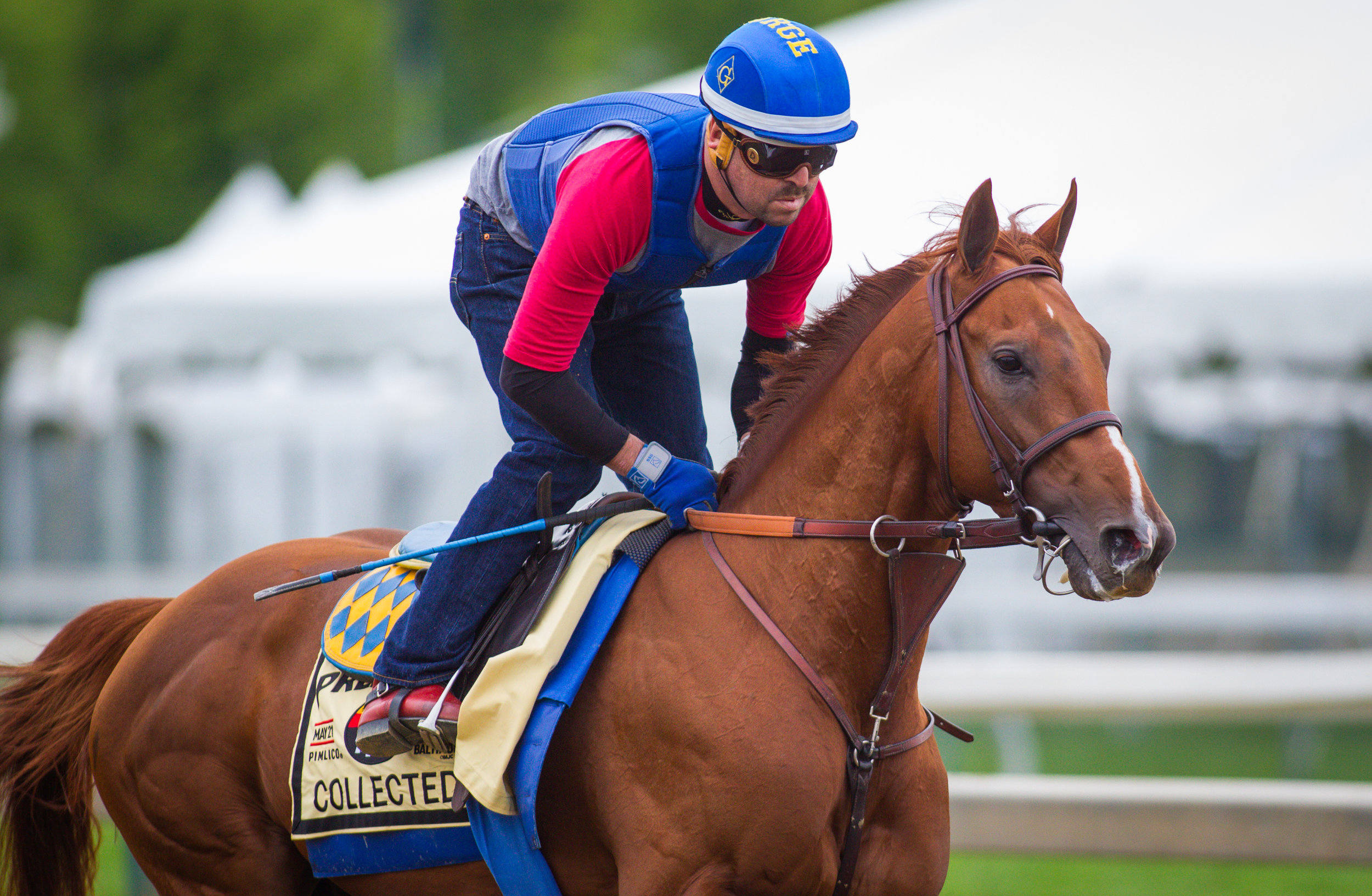
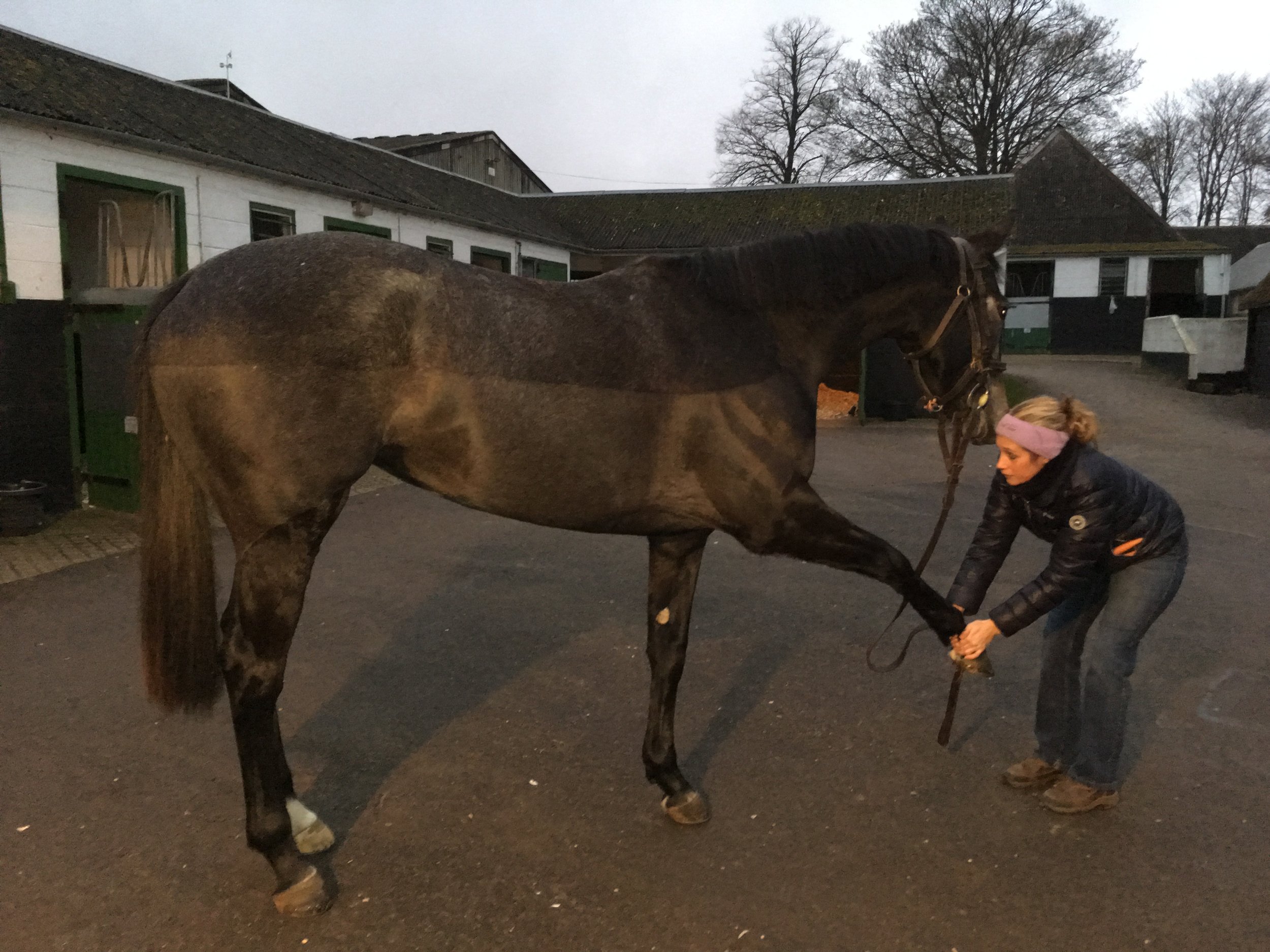
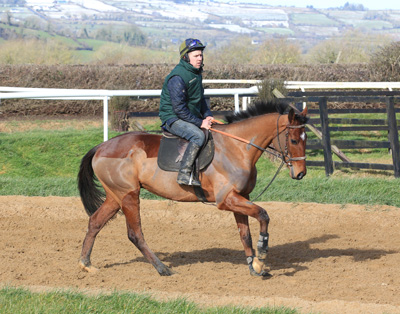
EMHF - Our concern for horse welfare takes a myriad of forms
Paull Khan - News from the EMHF
Published in European Trainer - October - December 2017, issue 59
Click here to order this back issue!
In the wake of the now infamous incident in which jockey Davy Russell was seen to strike his horse on the head prior to the start of a race, the marked difference between the media reaction in Ireland (more forgiving) and that in Britain (more damning) was commented upon.
Just one example of the wide variation, as between European countries, in public opinion on horse welfare, and animal welfare more widely. In some regions, the ‘volume level’ of discussion of such matters is turned up high; not so in others.
In a sport with no global Rules Book, it would be strange if these cultural differences were not reflected to some extent in the practices and regulations of individual Racing Authorities. And sure enough, they are. Indeed, what a country’s Rules of Racing says about its culture would make for a fascinating study. One could make a crude start by marking up, on a map of Europe, the number of whip strikes allowed in a race by the various countries. Very broadly, it would resemble a climatic map of the continent, with higher numbers accepted in the hotter south, reducing as one travels north until reaching the point of zero tolerance in Norway.
Skim through the Rules Book in any of our countries and you will find a plethora which promote the welfare of our racehorses. In many cases, that aim is indeed their sole purpose. These Rules and procedures fall into many categories – from the horse-care component of the course which a trainer must pass in order to be granted a licence, to the requirement for a minimum number of vet’s to be present before a race meeting can take place, to enforced stand-down periods following the administration of certain veterinary interventions, to the mandatory abandonment of jump racing when the ground is designated ‘Hard’ – the list goes on and on.
To read more of this article - subscribe now!
Training yearlings: Schools of thought around the world
Published in European Trainer - October - December 2017, issue 59
Click here to order this back issue!
Consider throwing a thirteen-year-old school child into a university environment straight from prep school.
Sights, sounds and influences that the young mind would struggle to compute; physical rigours on the sports field that would either disappoint the mind or cause physical damage. I cannot think of any parent that would choose this for their young adolescent. Yet we often do this to the young horse, plucking them straight from the sleepy pastures of their nursery into an environment that is measured upon its production of top-level runners. Perhaps we send them via the sales…an entrance examination of sorts.
When put like this it is clear that, as custodians of young bloodstock, we might consider a period of preparation during which the horse would be introduced to saddle and rider, taught the basic lessons that would allow it to fit into the programme of the trainer that its owner chooses, as well as a careful conditioning of the physical stresses that will be tested further upon its graduation to the greater strains that will be required to reach race fitness.
For the sake of this article pre-training will be considered to be the safe development of a young horse towards its first joining a trainer or returning from a break not enforced by injury, as opposed to rehabilitation. The American racing industry has the perfect phrase for this: Legging Up.
While there has been a constant growth in the number commercial pre-training yards in Europe over the last 25 years to satisfy a growing demand for this service, this is something that has been a long standing practice further afield, particularly in countries where there is stabling pressure at the racetrack or in metropolitan stables, not to mention numerous larger owners that have chosen to keep a greater part of the horse’s young career in their control by employing a farm trainer or establishing their own pre-training division.
To read more of this article - subscribe now!
Iconic Gallops of Europe
Published in European Trainer - October - December 2017, issue 59.
Click here to order this back issue!
Why are Europe's public training areas so well known? Part of their uniqueness and fame rests with the very concept of public training grounds. There are very few public facilities throughout the world and the most common training practice is the use of racecourse tracks. In the majority of countries trainers are based at racetracks and simply use the racecourse facilities.
While many of Europe's renowned training centres are situated close to a racecourse, or are run in conjunction with that track, they are, nevertheless, separate facilities offering a wide choice of gallops and surface, often over a vast acreage. The benefit to the horse is variety and change of scenery without impacting on its daily routine or necessitating travel. For the trainer, a choice of gallops and surfaces can be tailored to a horse's individual needs and prevailing weather.
Hoppegarten
Typical of this, though less widely known, is Hoppegarten in Germany, where 13-20 public trainers are based. A common factor shared by many of Europe's renowned gallops is Hoppegarten's sand-based subsoil, allowing the racecourse track and various gallops to drain freely. As a result, coupled with modern artificial watering systems employed by groundsmen in drying weather, extreme ground conditions are avoided and consistent work surfaces are provided all year round.
Hoppegarten is home to the biggest training grounds in Germany, encompassing over 500 acres of woodland, with 10km of walking and trotting paths, and since 2013 it has been granted the status of a Landmark of National Importance.
To read more about iconic gallops across Europe - subscribe now!
Developing the young foot
First published in European Trainer issue 58 - July - September 2017
Click here to order this back issue!
I remember my first yearling and two-year-old-in-training sales at Keeneland, Woodbine, and Tattersalls.To my untrained eye, and despite tracing backwards through the bloodlines, each and every horse appeared sound and fit, looking like a million bucks.
Although few horses ever actually sold for that amount, every inch of those young racehorse wannabes was gleaming from nose to toes. Even their feet were buffed and polished as perfectly as a pair of Usher’s coveted shoes.
Possibly because young horses for sale are primped and preened to the gills, few potential buyers actually ever pick their feet up to inspect them. Instead, buyers tend to focus on joints and throats, using the extensive repository to review joint radiographs (X-rays) and scoping prospects’ throats. “The horses in the September (yearling) sales are simply glamorous, including their feet. I would estimate that only 10% of buyers ever actually pick up at foot at those sales,” remarks Sam Christian, a Kentucky-based farrier servicing several top-level operations such as Shadwell Farm.
In general, the expectation appears to be that if the throat and joints are clear and the young horse appears straight, their feet must also be in good condition. While some horses may have hidden surprises once their party shoes are removed (indicating that some of those fancy feet are in fact simply mutton dressed as lamb), Mark Dewey, a highly sought-after racing farrier, attests this is not generally the case.
Training: Continuing Education for New York trainers
CLICK ON THE IMAGE ABOVE TO BUY THIS BACK ISSUE NOW!
First published in European Trainer issue 57 - April '17 - June '17
Brian Meehan - The Master of Manton
The 2,500-acre Manton House Estate in Manton, Wiltshire, could easily dwarf – physically and historically – any trainer bold enough to take it on.





